




































www.bas-uk.com
THE BRITISH ALPACA SOCIETY
c/o Grassroots Systems Ltd,
PO Box 251, Exeter EX2 8WX.
Tel (within UK): 0845 3312468
Tel (Overseas): +44(0)1392 437788
Fax: +44(0)1392 437788
Email: info@bas-uk.com
BAS CHIEF EXECUTIVE
Dr Duncan Pullar
Tel: 07496 578781
Email: ceo@bas-uk.com
EDITORIAL
Editor: Liz Wright alpaca.ed@kelsey.co.uk
ADVERTISEMENT SALES
Wendy King
Talk Media Sales Tel: 01732 448748
Email: wendy@talk-media.uk
GRAPHIC DESIGN
Jo Legg 07306 482166 jo.legg@flair-design.co.uk
KELSEY MEDIA


The Granary, Downs Court Yalding Hill, Yalding, Maidstone, Kent, ME18 6AL 01959 541444
MANAGEMENT
Divisional Managing Director: Steve Kendall
Group Publisher: Fiona Mercer
Retail Director: Steve Brown
Renewals and Projects Manager: Andy Cotton
Senior Subscription Marketing Manager: Claire Aspinall
Subscription Marketing Director: Kevin McCormick
Print Production Manager: Georgina Harris
Print Production Controller: Kelly Orriss
DISTRIBUTION
Distribution in Great Britain: Seymour Distribution Limited 2 East Poultry Avenue, London EC1A 9PT Tel: 020 7429 4000 www.seymour.co.uk
Distribution in Northern Ireland and the Republic of Ireland: Newspread Tel: +353 23 886 3850
Kelsey Media 2024 © all rights reserved. Kelsey Media is a trading name of Kelsey Publishing Ltd. Reproduction in whole or in part is forbidden except with permission in writing from the publishers. Note to contributors: articles submitted for consideration by the editor must be the original work of the author and not previously published. Where photographs are included, which are not the property of the contributor, permission to reproduce them must have been obtained from the owner of the copyright. The editor cannot guarantee a personal response to all letters and emails received. The views expressed in the magazine are not necessarily those of the Editor or the Publisher. Kelsey Publishing Ltd accepts no liability for products and services offered by third parties. For more information of our privacy policy, please visit Kelsey Media takes your personal data very seriously. For more information of our privacy policy, please visit https://www.kelsey.co.uk/privacy-policy/ . If at any point you have any queries regarding Kelsey’s data policy you can email our Data Protection Officer at dpo@kelsey.co.uk.


Rounding up
Alpacas shows


How to improve and enhance grassland is a common requirement. Jeremy Burgess explores the option of overseeding for small scale landowners, when to consider it and how to go about the process.
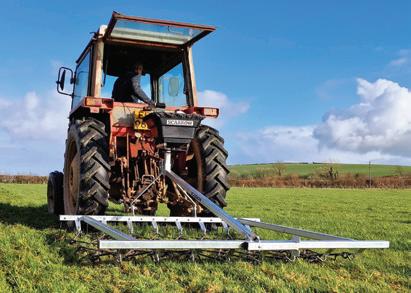
Achieving the right balance


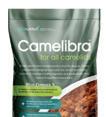








www.kelsey.co.uk
Cover photo: Look of Love ©Mark
how they added an eco friendly alpaca farming business by building a low impact roundhouse.

In an attempt to narrow the gap between alpaca shearing demand and supply, BAS have successfully run a pilot scheme for





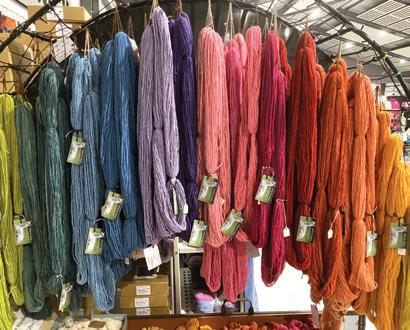
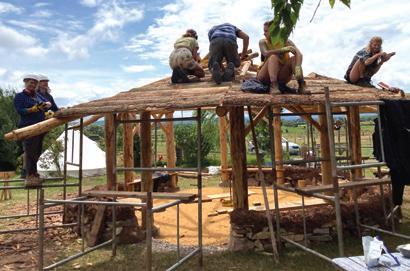
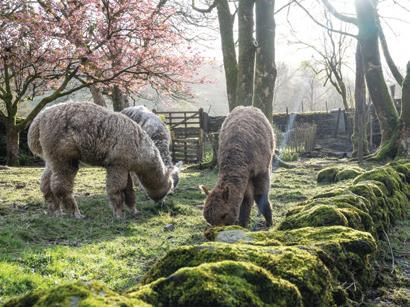
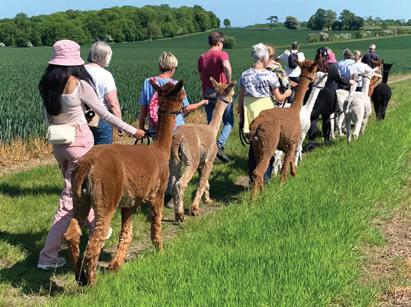


alpacas are helping with

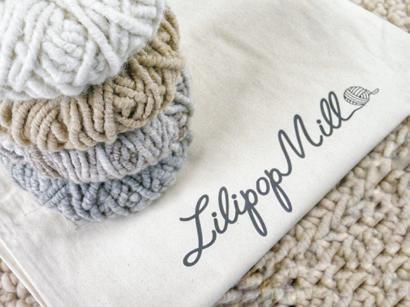
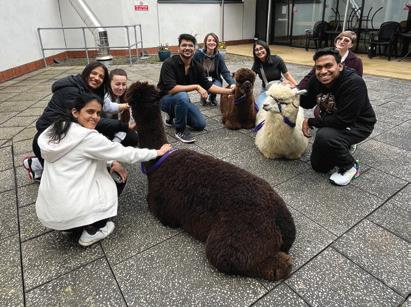

The weather this year has continued to be tricky which in turn extended the shearing season as rain often did stop play. Grassland has required more management than usual with flooding impacting on grass quality. We are still waiting for a window to get our hay. But the shows have been busy with some lovely alpacas coming forward to take part. Also coming up quickly is the National Alpaca Farm Day 7-8 September 2024.
This is the fourth BAS UK National Alpaca Farm day and its aim is to encourage anyone and everyone to come and meet alpacas.
The concept is to have dozens of alpaca herds open to the public on the same day(s) on Saturday 7 September - Sunday 8 September 2024.
All interested BAS members should register their event with BAS. The size and type of event varies according to the BAS members farm and capacity. It can be simple or it can be as large as you feel you want to host.
To qualify for BAS promotion entry to the event must be free. Charging for merchandise, refreshments and alpaca experiences is fine.
It’s good to share our passion for alpacas and show their versatility as I hope this magazine also reflects.
31 July 2024
Webinar:
Our next issue is Autumn and we’ll need editorial copy for that by 9 September or around that time and look out for your copy of Alpaca mailed to you in early October.




The five biggest mistakes in parasite control
By Dr Claire E Whitehead BVM&S MS DACVIM
8pm. Registration required: https://tinyurl.com/alpacavetwebinar
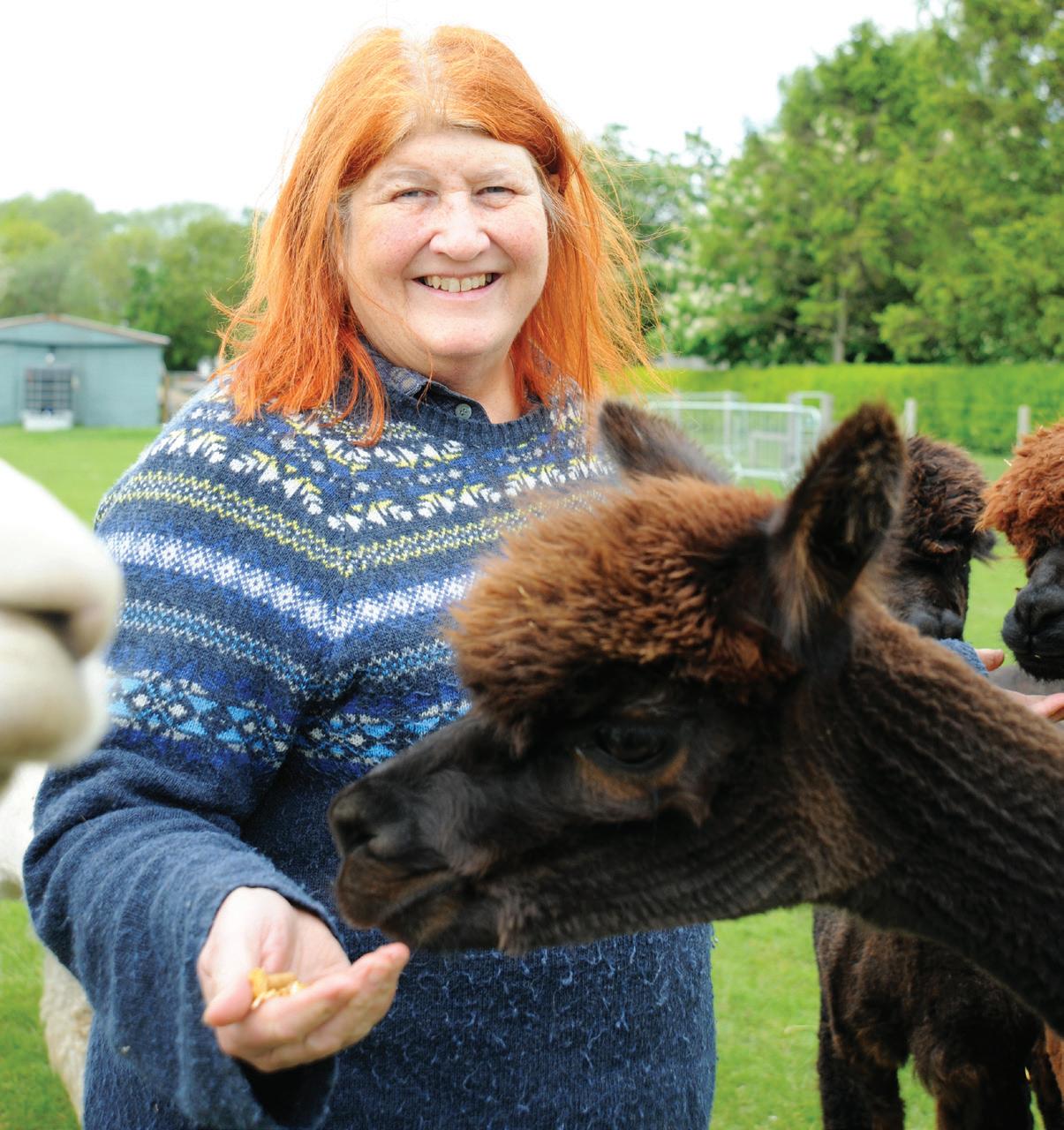
As I write this piece we are in still in the shearing and birthing seasons. Shearing this year has been tricky because of all the wet weather. Many of you have reported delays and rescheduling because soggy alpacas have been impossible to shear. For those with the facilities to house alpacas in the days before shearing day the problem has been avoided – but not everyone has that luxury.
The unpredictable nature of alpaca pregnancy lengths continues to surprise owners. I am not sure if it is a general trend, but many people I speak to are telling me that the pregnancies seem longer than usual this year. From what I hear the number of births this year will be down on last
year and many are planning a reduced mating operation. Do remember that your first 20 registrations are free, so whatever number of cria you have get them registered.
The show scene continues to evolve with a new halter show in Dorset. This show along with Westmorland, NEBAG, and Stokesley are going to play host to a new initiative that is in development. The idea, currently called “Taking Alpacas to the People”, is to have more interactive and informative offers for members of the public to enjoy all things alpaca. This autumn a few ideas will be tried out before a wider roll out next year. If you go to one of these shows have a look at TATTP and see what you think. Ideas for improvement welcomed.
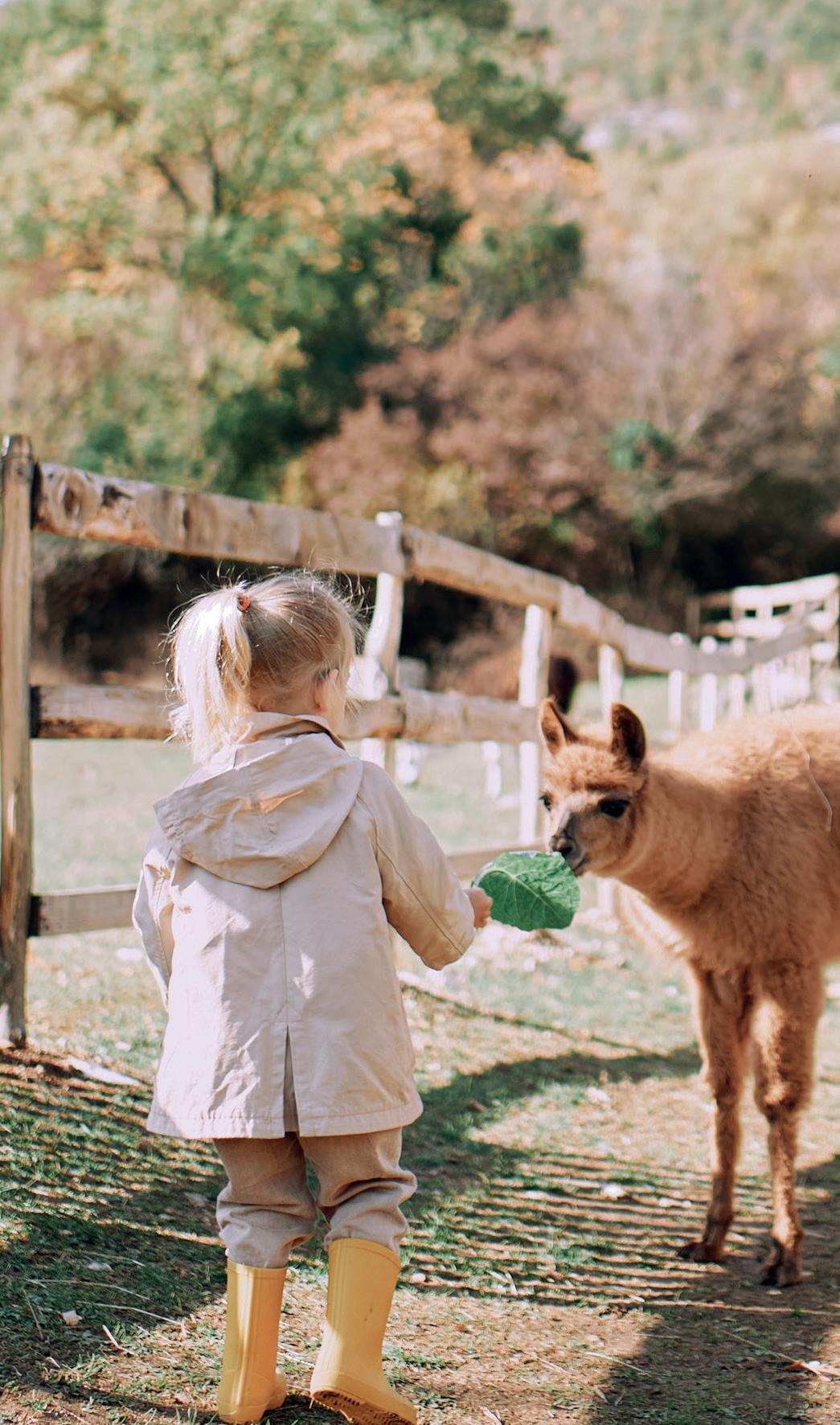

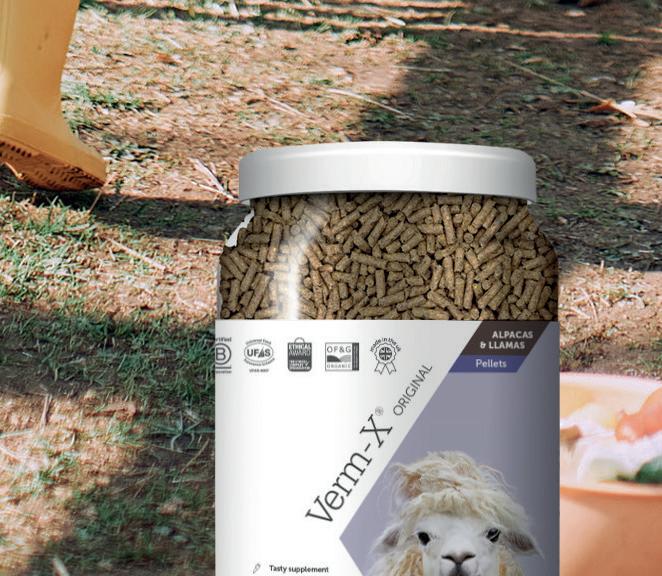

Since farming began around 12,000 years ago, farmers have been attempting to protect their profits as much as possible by using new and inventive methods of protection.
Free-range poultry are generally an incredibly vulnerable group that have an almost constant threat from predators in the UK including foxes, badgers or even large birds of prey. While poultry, such as chickens, ducks, and geese, are a vulnerable group another group that fits into this category is small livestock such a sheep and goats. Sheep that are housed in an outdoor lambing system benefit from the use of guard animals to protect and reduce mortality rates in their young. In addition to large scale commercial farms using alpacas as guards they have also become very popular within smallholdings after gaining popularity.
Alpacas, as part of the camelid family, have two main defence mechanisms that they use to protect themselves and others surrounding them which are to spit and to kick. As you can imagine, alpaca spit wouldn’t deter a fox too much from choosing a meal in a flock of poultry, however a strong kick would put them off. Guarding is a natural behaviour that is carried out by most alpaca, usually with the most dominant males or females of the herd taking the front and using short sharp alarm calls to alert the whole herd. If a potential predator does enter the pasture or comes near to the herd then the dominant alpacas will chase, kick and stamp at that predator to either try and scare off or kill that predator.
While many alpaca have proved themselves efficient and worthwhile guard animals, there will always be those animals who have no interest in guarding.
As with many other species, including humans, individual alpacas have different personalities with a range of confidence which can determine whether they become active guard animals or not. Through experimental research it has been determined that one of the best groups used as guard animals are young, castrated males in a group no larger than three. If they are housed in a group larger than three, alpacas tend to create their own separate herd rather than immersing themselves with the original flock and guarding.
Studies across the world have shown that alpacas, as well as the rest of the camelid family, have made effective guard animals whilst protecting both poultry and small livestock. The UK, Australia and New Zealand are some of the top countries where some of the biggest studies originate from, however similar comparison studies have been completed in South Africa.
Research that has been conducted within these studies often uses Global Navigation Satellite System (GNSS) devices, such as collars which will transfer data through satellites, that the alpacas wear to monitor their locations and assess their behaviour while co-habiting with the flock. These GNSS collars identified that alpacas would walk, graze, and guard the perimeter of the flock, even throughout periods in the night.
Individual alpaca owners will all have different experiences with their alpacas and how well they guard, along with what they guard well. Personally I have seen both good guard animals and those who couldn’t care less, from predominantly alpaca farms and those that have been used as guard animals on commercial sheep farms.
Poppy Lagor has been working with alpacas for almost seven years alongside completing a BTec diploma and BSc (Hons) degree. She graduated from Hartpury University with a 2:1 where she was allowed to explore this subject writing a final dissertation on this subject. Over seven years Poppy has worked alongside a few different alpaca herds and there are many different things between the herds however the guarding behaviours stay the same. It’s a fascinating subject for Poppy, who finds it amazing just seeing that very instinctual guarding and protective behaviour when there is a potential threat from both males and females. The two articles Poppy found most interesting are:
Matthews, P.T., Barwick, J., Doughty, A.K., Doyle, E.K., Morton, C.L. & Brown, W.Y. (2020). Alpaca Field Behaviour When Cohabitating with Lambing Ewes. Animals. Available from: http://dx.doi.org/10.3390/ani10091605
Botha, J. (2018). A survey of farmers’ experience using guard animals to control the impact of predators on farm livestock. University of Pretoria. Available at: https://repository.up.ac.za/bitstream/handle/2263/70488/Botha_Survey_2018.pdf?sequence=1&isAllowed=y

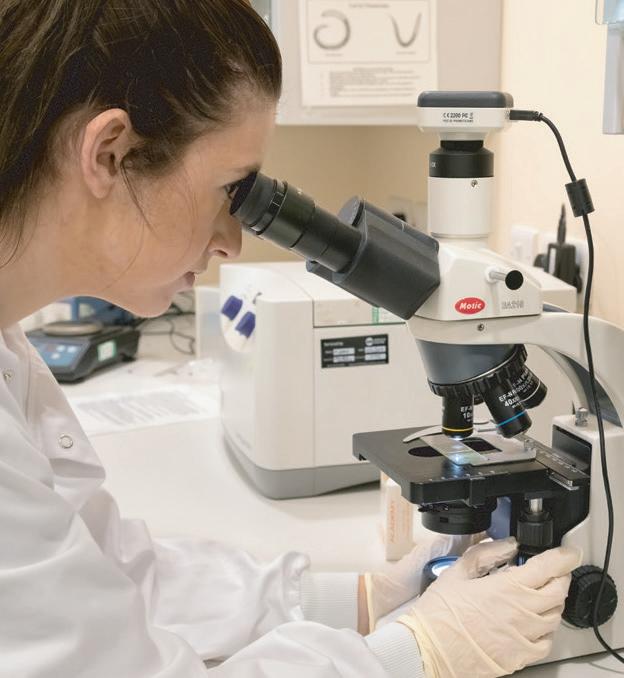


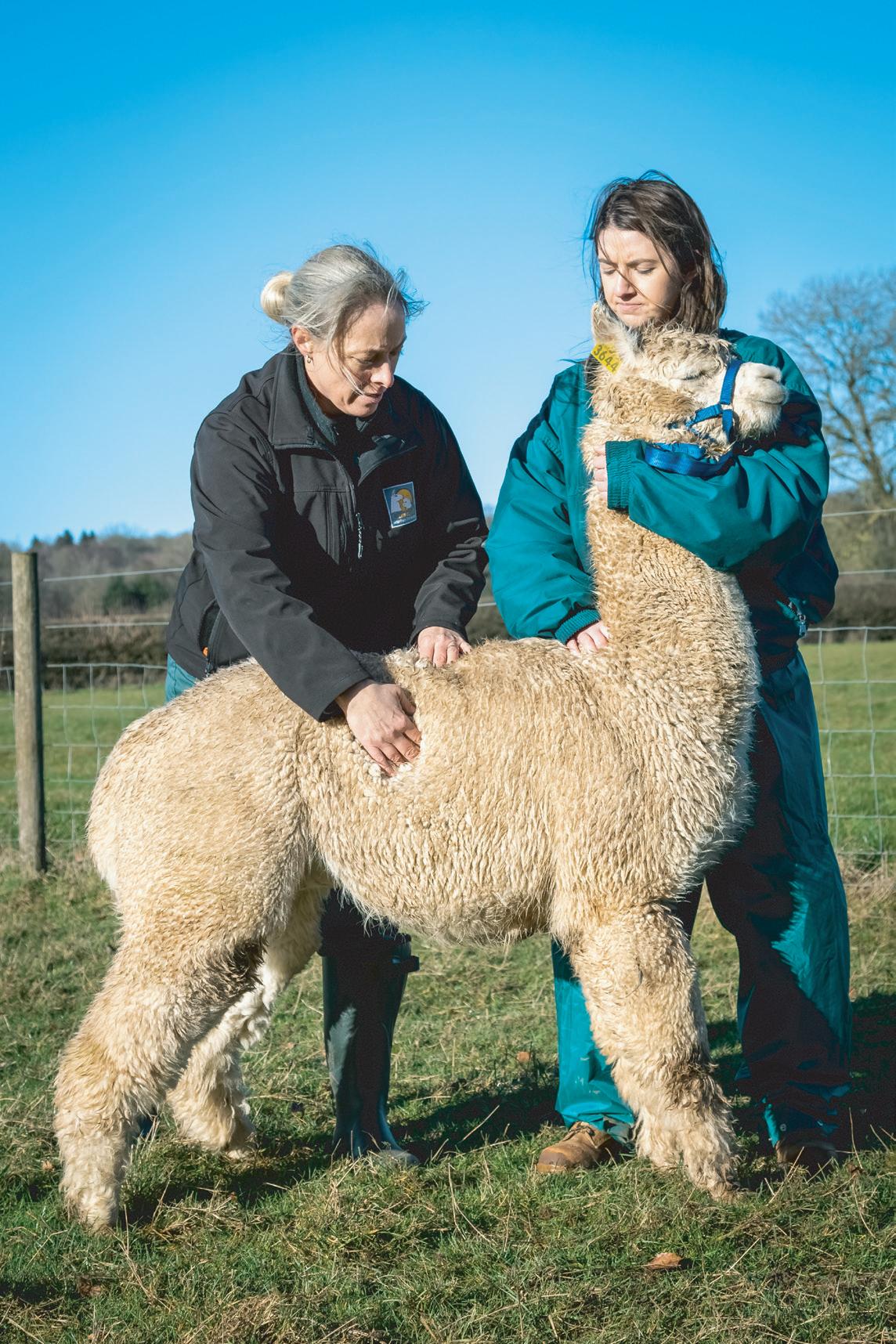


We’re passionate about camelids and share your goal to have a healthy & productive herd.
Committed to ongoing learning in the rapidly developing field of Camelid Health, Medicine, and Reproduction, we stay at the forefront to offer up-to-date care and advice. Our commitment extends to sharing our expertise, enhancing knowledge for camelid caregivers ets.



Partner with us for a thriving herd. We support and collaborate for specialised care, optimising camelid health and easing management stress. Utilize our Camelid-Specific Lab for comprehensive testing (faecal or cria IgG).
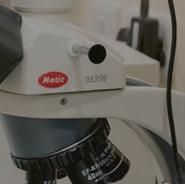



Dedicated to enhancing camelid health and welfare, our ser vices are spearheaded by Claire E Whitehead, the only RCVS Specialist in Camelid Health & Production.

Dr Ami Sawran BVSc CertAVP (CP) PGCertVPS PhD MRCVS gives vet thoughts on facial conformation, parasites, skin care, the menace of flies and helping crias to thrive.
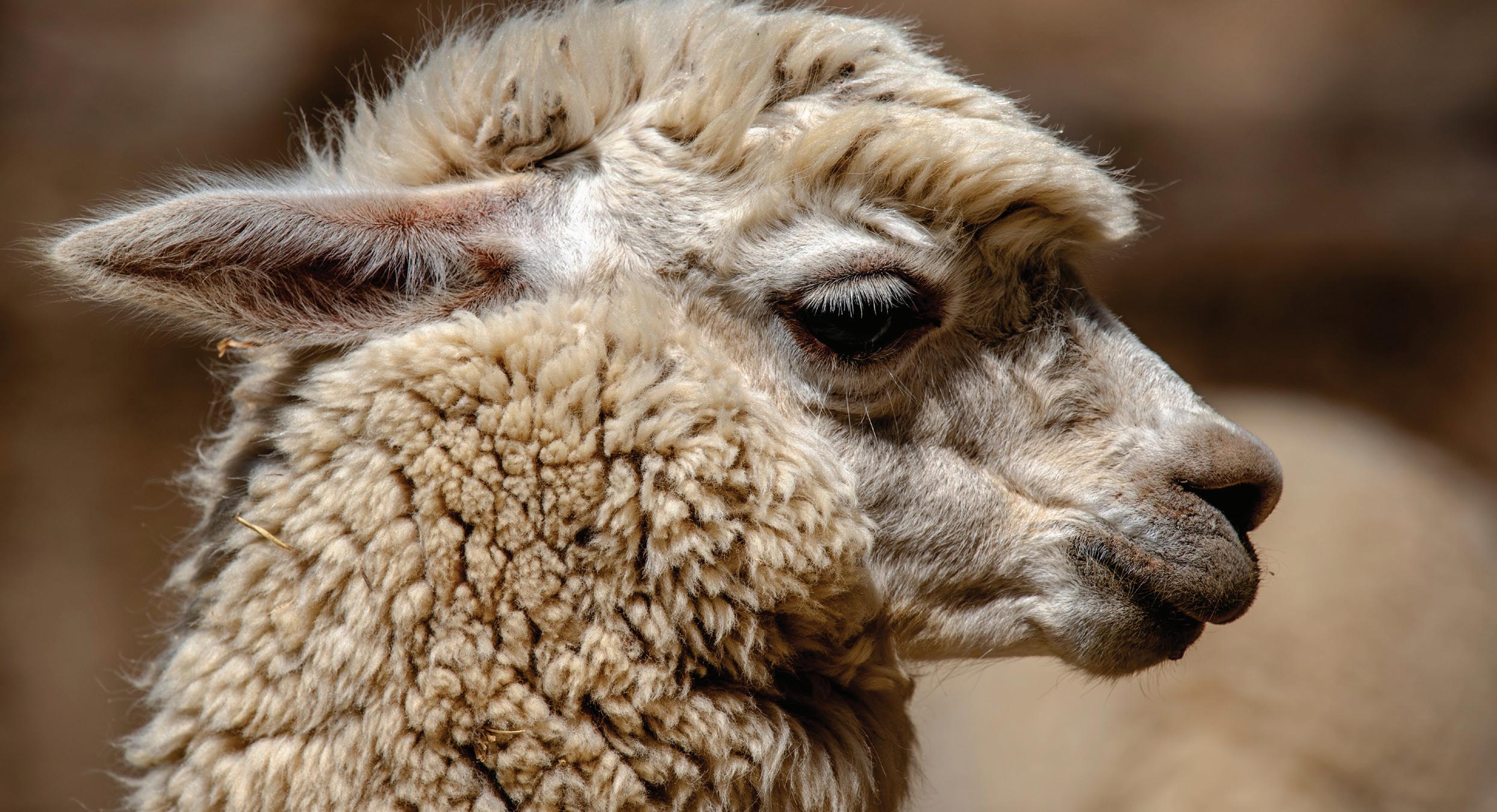
Ihope this column finds you and your herds well; I have been kept very busy with cria and various ailments associated with warmer weather over recent weeks but have been able to take time to admire the new cria crops that have not required my clinical attention.
This summer, I, along with my newly graduated veterinary colleague Phillippa, have been undertaking an exciting research project, investigating facial conformation of alpacas. It can be challenging to secure funding for camelid research, but thankfully, the Animal Welfare Foundation are supporting our study.
You may wonder why facial conformation seems so important to us? Those of you who have read reports on increasingly brachycephalic (flatter faced) dogs and cats (and even rabbits and horses) will know that there are myriad health issues associated with shorter noses. These include: dental problems, jaw misalignments, poor eye drainage, problems breathing and poor heat tolerance. These are not things that any of us want to see happen in the alpaca world, but the first question must be – is this actually happening?
To determine this, Phillippa and I are measuring several aspects of the head in each of our participants including the length of the head and nose, and the proportion of that nasal length which is comprised of bone versus cartilage. These measurements could affect our handling and restraint of alpacas, particularly with reference to headcollars. We are interested to see whether these measurements have altered across the generations of
Ami is the clinical director of Westpoint Farm Vets in Chelmsford, catering to all farmed livestock species, and offering second opinion medicine from their Coalyard Clinic. She holds a certificate in camelid practice, a PhD in dairy cattle mobility and is enthusiastic about ensuring great standards of care for smallholdings. Ami is the first RCVS recognised Advanced Practitioner in Camelid Practice.
alpacas, which is why we are hoping to see a range of ages on our travels.
Another useful measurement we will take is the proportion of the face that is covered in heavier ‘fleece’, rather than haired skin. We would like to determine if there are age-related trends towards heavier facial fibre coverage, as this could potentially affect an alpaca’s ability to absorb vitamin D from sunlight.
None of the measurements that we intend to take are a judgement on our participant’s health, nor breeding potential, rather an insight into trends. Later research may call upon yourselves as experienced breeders and keepers, in determining whether any patterns we find are suggestive of potential future welfare issues.
As vets, keepers, breeders and admirers of alpacas, we all have a common interest in upholding the health, welfare and longevity of the UK herd. I think we can all agree that a wider understanding of trends relating to conformation could be very informative. I very much hope to hear from
keepers who may be interested in putting their alpacas forward to be part of this study, as we would love to build our dataset.
For more information, please email ami.sawran@westpointfarmvets.co.uk or send me a message on Instagram @getsetalpacavet.
Plenty of things keep alpaca vets busy over the summer; the unpredictability of unpacking season is one of them, but there are certain health issues which crop up with a certain degree of regularity. Luckily, with some planning, we can work to avoid them becoming bigger issues. Here are my top summer visits to alpacas.
You’re probably sick of hearing about parasites, but they remain one of the top reasons why alpacas need veterinary attention. We have endured a long, wet, winter, spring and now summer – and this has created conditions in which helminths thrive on pasture. Please take this as your sign to perform body condition scores and faecal egg counts on your herds, considering that heavy parasite burdens do not always cause diarrhoea. Signs to look out for include weight loss/failure to thrive, lethargy (or inability to keep up with the herd), and pale mucous membranes (make sure to check the eyes, especially if you have alpacas with darkly pigmented gums). Worming should not be undertaken as a matter of course, and should be tailored to the case, so don’t be tempted to simply dose without understanding the level and type of burden your animals may have.
Getting fibre sheared off allows us a lot more insight into what’s going on close to the skin. For some, mite infestations may become apparent, but there are other skin conditions that are not parasitic, including bacterial and fungal infections. The treatment for each condition (even down to the type of mite) is very different. Sarcoptic mange, caused by a burrowing mite, can often be catered to via injectable ivermectin treatments, but this would be ineffective in a chorioptic mange infestation, which requires topical insecticide treatment. It is very important that ivermectin is not misused, as this can lead to environmental contamination and potential resistance development. It is also important to consider that if treatment is failing, that further diagnostics over and above skin-scrapings, such as biopsies, could be warranted.
Sadly, flystrike of alpacas features heavily on the roster of summertime emergencies. Fly control can be challenging, but holistic approaches comprising sprays or pour-on repellents coupled with environmental control such as fly traps or ‘friendly’ parasitic wasps that feed on fly larvae can help to reduce burdens in yards and shelters. The most common phrases I hear when a flystrike is called in are, ‘he looks like he’s rolled in poo’ or ‘there’s a wet patch on the fibre’ – flystrike can appear like patches of wet fibre, so any discoloured areas should be promptly investigated. If you encounter flystrike, clipping the area as close as possible can save valuable time when your vet attends.
Cria failing to thrive is another of the most common summer complaints when it comes to camelid care. It is fully expected that cria may lose up to around 250g in their first day of life, but they should be gaining between 250g-500g a day thereafter. Anything less, or indeed a loss, are indicators that the cria should be checked over. There are several things that could contribute to poor growth in cria, not least a poor milk supply, so the dam must also be checked if you have concerns. There is potential for this to be associated with failure of passive transfer, for which a plasma transfusion could be appropriate. In terms of cria factors, a cria should have patent anus and normal genitalia, allowing it to urinate and defaecate. Their faces should be straight, and jaws aligned, with an intact palate in the mouth, and patent nostrils that allow airflow through both sides. You can check airflow with a mirror, or with a wisp
We are recruiting participants for a study to investigate how facial conformation and facial fibre coverage in UK alpacas has changed over time.
Participants will be anonymised in data and photographs. Full information, including participant briefs, are available in our information packs. The study is being led by Dr Ami Sawran MRCVS, funded by the Animal Welfare Foundation UK, and has full ethical approval from the University of Bristol.
What will happen to my alpacas?
We will visit your farm to collect measurements, using a soft band tape, and take two photos of each alpaca's head. This usually takes 2-4 minutes per alpaca to be completed.
I have a large herd, do all my animals need to take part? Not at all! We are looking to capture a snapshot of the UK alpaca population between 2-25 years old. If you would only like a percentage of your herd to participate, we would still love to hear from you.
Where are you recruiting participants?
• Durham
• South Yorkshire
• Essex
• Oxfordshire
• South West counties
Please see areas highlighted in pink. If you are near or bordering these areas, we would like to hear from you.
What sort of alpacas are you recruiting?
We are recruiting alpacas from a variety of backgrounds; from pets to trekkers. We are especially looking for more owners who show/breed or those with animals over the age of 18 years.
If you would like to participate in our study and to receive an information pack, please contact ami.sawran@westpointfarmvets.co.uk


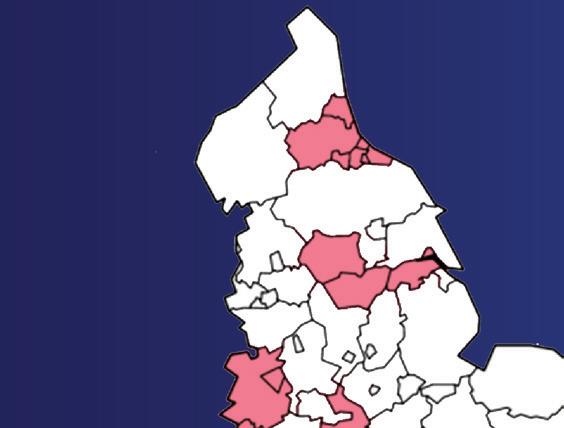

of fibre in front of the nostrils. Issues such as lax or contracted tendons should be identified, as these can prevent the cria standing to feed. Your vet can also check for irregularities in heart rate, rhythm and sounds which could indicate an underlying issue in a poor-doing cria. In my experience, owner instinct about a cria’s progress (or lack thereof) is usually right, and more can be done to remediate this if seen as early as possible.
Of course there are many ways in which our animals can challenge us over summer, but hopefully with the above in mind, you can focus your monitoring of your herd. As always, if you have any concerns at all, keep your vet’s number handy – we would much sooner talk over a concern that turns out to be minimal, than arrive at a chronic problem that could have been avoided, so do trust your instinct!
Achieving the right balance of vitamins and minerals in the diet will not make a great fleece from poor breeding, but could make a fantastic fleece from good breeding writes Jonathan Guy, JG Animal Health.
Alpacas are naturally browsers in their native environment. They often choose coarse woody material and herbage, while being selective in the minerals, that each plant contains. However, when they are brought into a domestic paddock, where they will consume up to 1kg of grass every day, they become grazers. In this environment, in an effort to provide essential minerals and vitamins, a supplementary feed is generally given.
The wool fibre is primarily protein, this wool protein contains a high proportion of the high-sulphur amino acids cysteine, (10% in wool) and it has been shown that variation in the availability of the sulphur containing amino acids to the follicle can affect both fibre growth rate and fibre composition.
Clean wool is composed of complex protein keratin which contains about 20 amino acids in many polypeptides and has a sulphur content varying from 2.7 to 5.4% of the fibre weight. Most of the Sulphur is present as cysteine and methionine.
Generally, fibre traits are highly heritable, however what mostly influences the value is weight, fibre quality and length of staple. The term wool (or fibre) is usually restricted to describing the fibrous protein derived from the specialized skin cells called follicles. The maximum number of follicles that can develop is determined genetically, but the actual percentage of the wool-bearing follicles depends on nutrition.
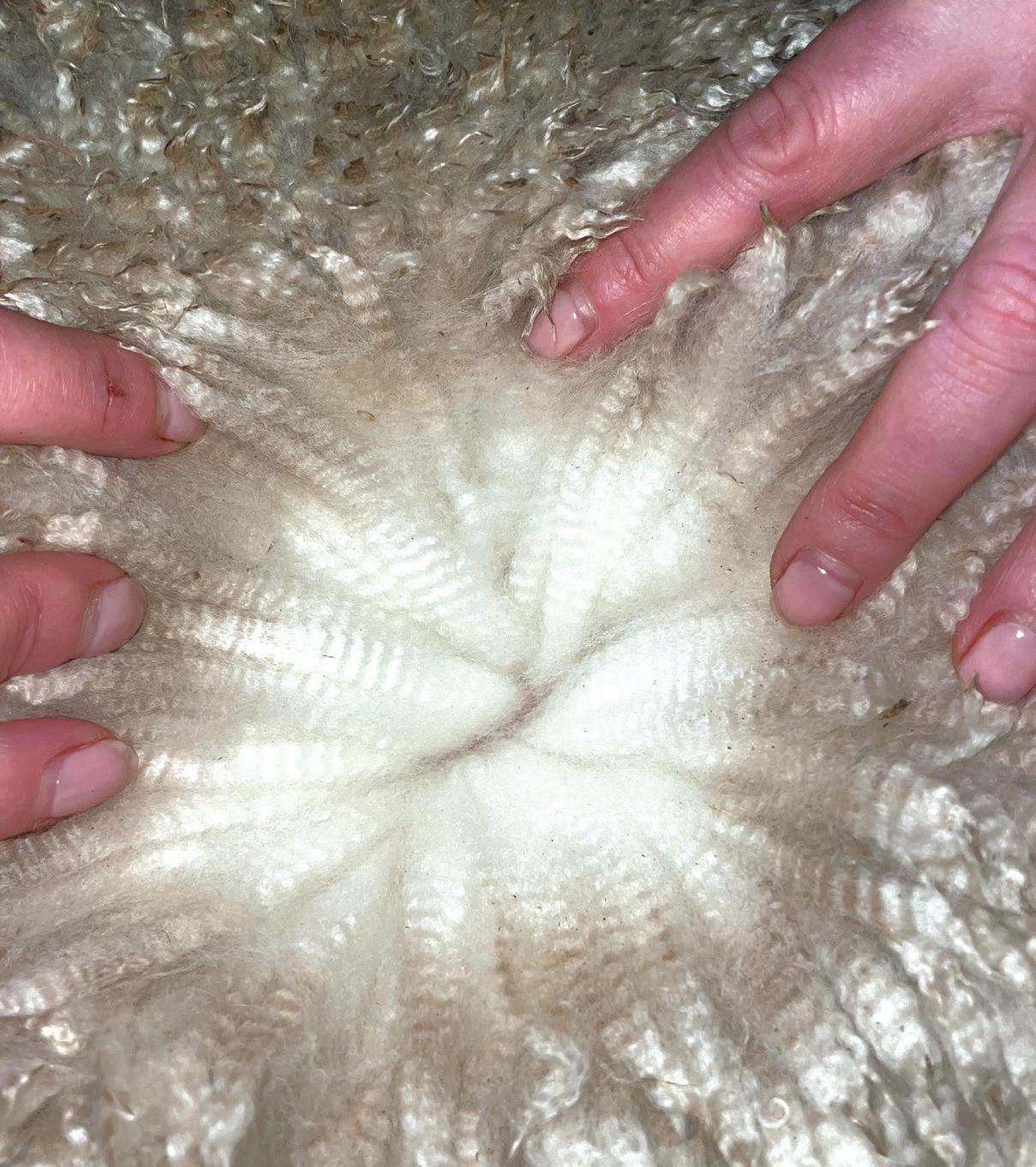
The nutritional needs vary according to the different production stages. Secondary follicles (that determine fine wool production) develop during the third trimester of pregnancy. In this trimester the nutritional needs of the foetus also increase while the pregnant females stomach capacity is at its lowest.
The density of the fleece will severely reduce the amount of skin absorption of vitamin D3, while the colour can impact on trace element requirements – often darker fleeced animals will have a higher requirement for certain elements over white and fawn.
The main reason for different trace element deficiencies throughout the world is variable geology and soils, weather and climate. When the soil cannot supply sufficient trace elements to the plants that animals are eating, a deficiency will occur. This is more likely to show up where the ration is mainly grazed grass or conserved forage.
Animals may adjust to a suboptimal mineral intake by reducing the concentration of mineral in tissues. Thus, the tensile strength of wool fibres may be reduced in order to conserve minerals for more essential functions like growth, fertility and lactation.
Copper plays a very important role in maintaining quality of wool fibre. A deficiency of copper, either in the ration or induced by high levels of iron and molybdenum in the diet, results in de-pigmentation of the wool, a lack of crimp and low mechanical strength it also has a vital role in the development of the proteins – collagen and keratin – essential in bone, skin and wool growth.
Zinc deficiency on the other hand results in a marked reduction in wool growth, over and above that associated with the reduced feed intake induced by the deficiency. Some fibres are shed, and the fibres that are produced lack crimp and are brittle.
A deficiency of a vitamin may reduce or completely inhibit wool fibre growth, by reducing the feed intake of the animal thereby impairing the supply of substrate to the follicle, by inhibiting the activity of enzymes involved in protein or energy metabolism and reducing the production of nucleic acids required in the follicle for cell division.
Thiamine (vitamin B1) is essential for carbohydrate absorption and energy production. Pyridoxine (vitamin B6) is required for amino acid metabolism in general and in the transsulphuration reaction in which methionine is converted to cysteine. Biotin (vitamin H) may be involved in follicle function because it is required for nucleic acid synthesis which affects DNA of the cells.
Folic acid (vitamin B9) is essential for the conversion of glycine and histidine to other amino acids, purines and thymidine, there by contributing to cell division and protein synthesis. Vitamin BI2 is a cofactor in methionine synthesis, for a range of molecules.

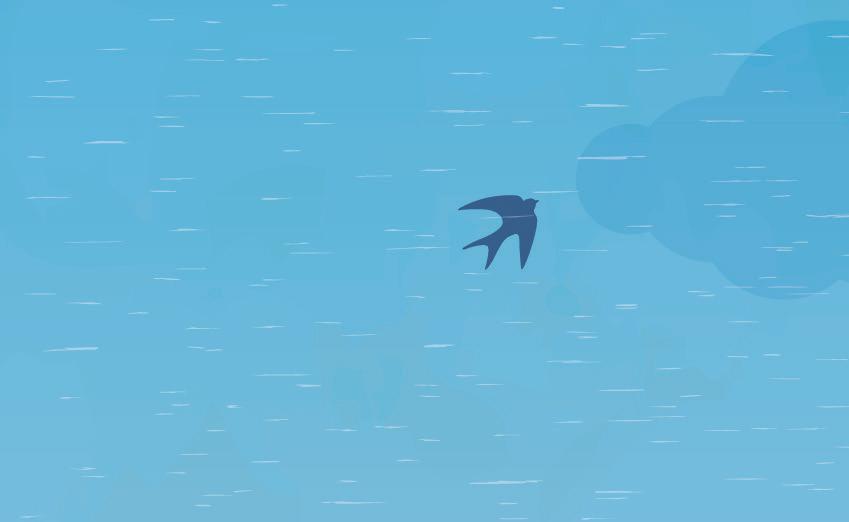
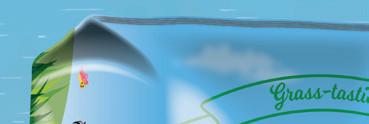
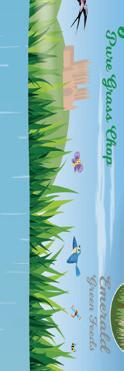






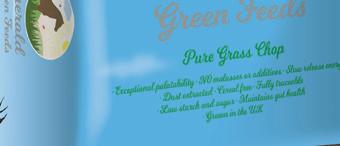










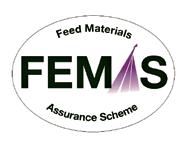
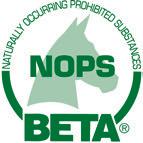

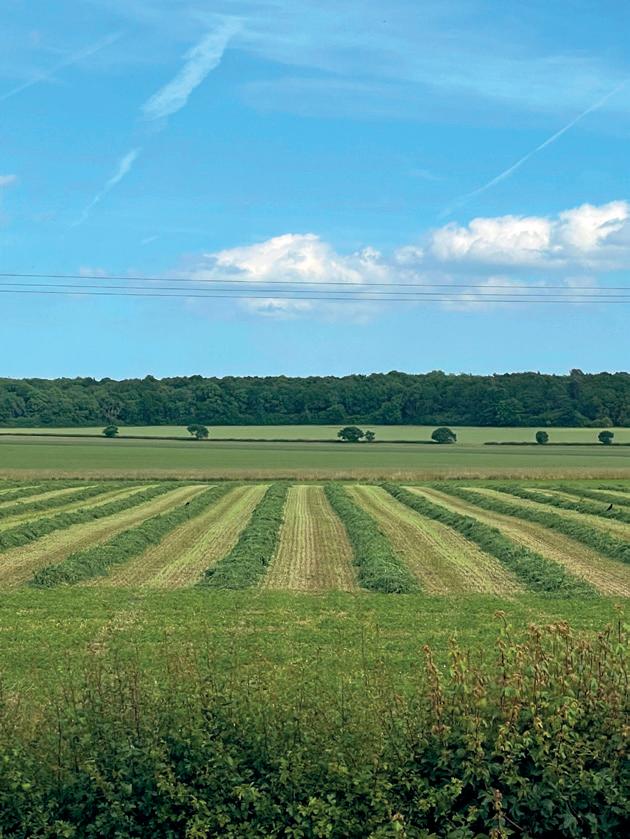



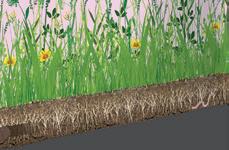







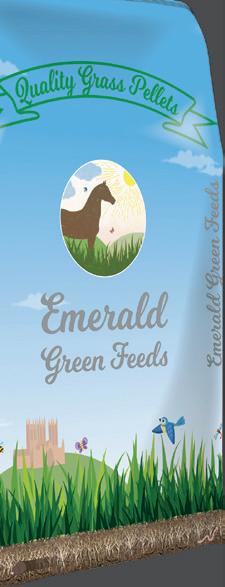























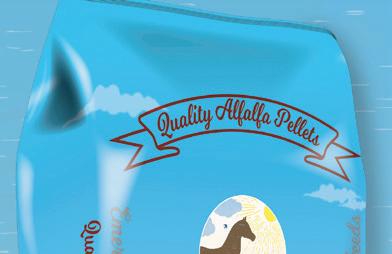





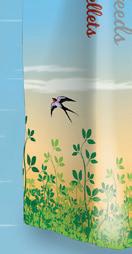










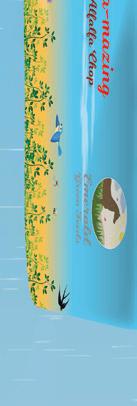
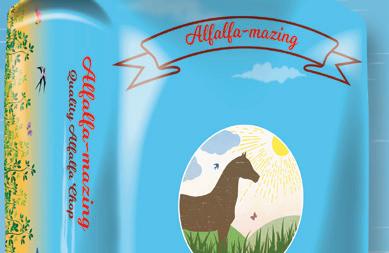







By Wesley Habershon, Technical Director




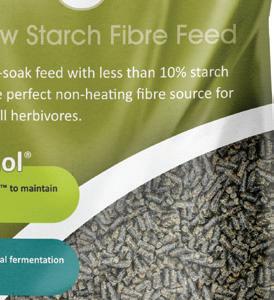
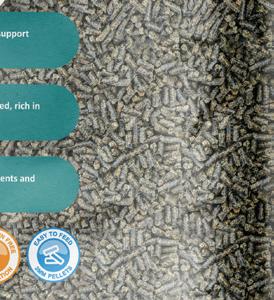



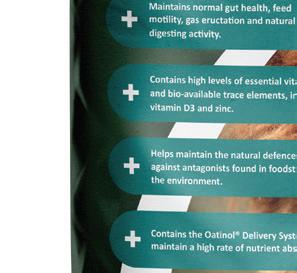
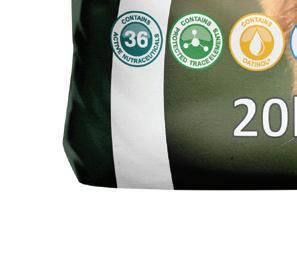
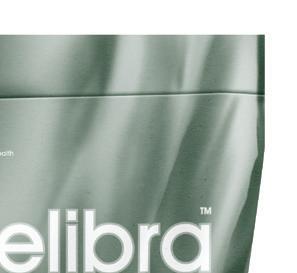
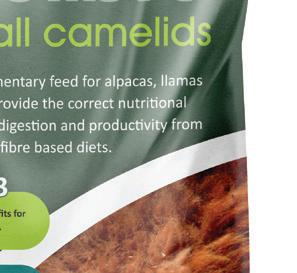


Although alpacas are grazing animals, they are part of a group called pseudo ruminants, along with horses and other camelids. This sets them apart from other grazing animals such as cattle and sheep, and has a huge bearing on their nutritional needs.
Pseudo ruminants and ruminants –
Ruminants include cows, sheep and goats. They have a complex, four-chambered stomach consisting of the rumen, reticulum, omasum, and abomasum. The rumen is key to fibre digestion through fermentation, regurgitation or “chewing the cud” and microbial bacterial growth.
Pseudo ruminants have a simpler three-chambered stomach: the C1 and C2 (similar to the rumen and reticulum) and C3 (or abomasum).
A key difference is that ruminants can digest starch into glucose, whereas pseudo ruminants break amino acids into glucose through “glucogenesis”.
A pseudo ruminant is 20% more efficient than a ruminant at extracting nutrients from herbage, a result of the low value herbage that dominates the Andean highlands where they originate. Alpacas also hold feed particles in the C1 and C2 for longer, which allows them to extract more nutrients from a lower feed intake. The liquid fraction of the C1 and C2 also moves quicker than a rumen, meaning greater nitrogen utilisation and microbial bacterial growth.
In alpacas, the three stomach compartments play a distinct role:
• C1: The largest chamber where initial microbial fermentation occurs. Food mixes with saliva and microbes, beginning the breakdown of fibrous materials.
• C2: Further fermentation and absorption of volatile fatty acids produced during fermentation in the C1.
• C3: The "true stomach" where gastric juices further digest food, akin to the monogastric stomach in humans and other non-ruminants.


Dry matter intake (DMI) is the feed that remains after the water content has been removed. It is a critical part of the alpaca diet and should be between 1.5-2.5% of bodyweight, depending on growth, pregnancy, lactation and general maintenance.
An average 60kg adult alpaca would have a DMI of 2%: 60kg x 2% = 1.2kg DMI/day.
• If fresh grass is 22% DM (Dry Matter) the alpaca would need:
1.2kg DMI x 22% DM = 5.5kg fresh weight grass/day
• If hay is 87% DM the alpaca would need:
1.2kg DMI x 87% DM = 1.4kg fresh weight hay/day
Pseudo ruminants are grazers, meaning they need 70-80% of their daily nutritional intake to come from grass, hay or other forages. We measure energy in ruminants/pseudo ruminants as metabolisable energy (ME) which is the energy left after urine, faeces excretion and heat and gas from the digestive process are taken into account. The energy density of fresh grass is between 11-12 ME in the summer, whilst hay is between 7.5-8.5 ME. This means that on average, grazed grass has over 40% more energy than hay per kilogram. In the winter, using concentrate feed to manage BCS could be necessary – it has a higher dry matter content (88%) and a higher energy density than hay.
Growing cria, and pregnant or lactating hembra will need more intensive nutrition for growth and additional energy requirements. Concentrates can be especially beneficial here to balance what is available from hay or fresh grass.
Other things to consider are whether you have enough physical grass for grazing, as well as the protein values of forage and any mineral and vitamins needed to balance total dietary intake. Nitrogen, moisture, sunlight (including length), temperature, sulphur, potassium, phosphorus and
Salivary glands
Esophagus
Compartment 3 (C3)
Compartment 2 (C2)
Compartment 1 (C1)
other minerals are imperative for grass growth and forage quality. Even by providing many of these variables there will be a need for additional nutrients as no soil will contain consistent amounts at the levels required.
1. Measure what alpacas are consuming to ensure sufficient DMI. Changes in feeding behaviour can indicate health issues or inadequacies in the diet. Regularly evaluate the BCS of your alpacas to adjust feeding regimes as necessary.
2. Always provide the best quality hay and pasture available. Avoid mouldy or dusty forage, which can lead to respiratory and digestive issues. If you are making hay, ensure sufficient wilt time before baling and make hay within a sufficient weather window.
3. Under or over-conditioned animals will need adjustments in energy/ protein intake through fresh grass, hay or concentrate feed.
4. When supplementing with concentrate, grass and hay, ensure the diet remains balanced and does not lead to obesity or metabolic disorders.
5. Ensure sufficient mineral and vitamin levels in the diet particularly Vitamin D, Phosphorus, Calcium, Zinc and Selenium.
Getting your alpaca’s DMI at the correct level is fundamental to their nutritional needs, and is the foundation of any good feeding programme. By understanding the idiosyncrasies of the pseudo ruminant’s anatomy, you will be able to meet their needs and keep a herd that is healthy and thriving.
We’re looking for 12 beautiful photos with a seasonal twist if possible so if you have marvelled at your alpacas in the snow, seen them bloom with the blossom or relax in the summer sun, reach for your camera and capture their mood. You have all summer to show us your finest photos. The images can be from this year or from previous years but they do need to be digital and sent by email.


Still time to share your photos, send them to ceo@bas-uk.com by 2 September.

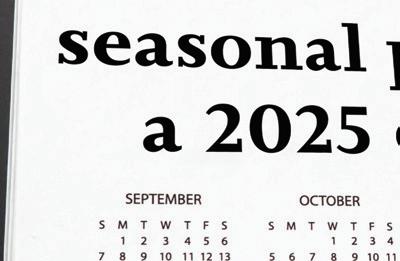







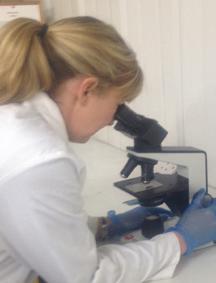
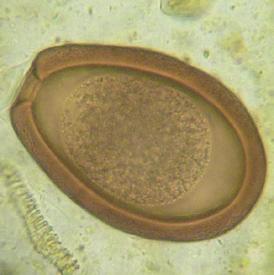
Sarah Finch (Caldwell), BSc (Hons) BVSc MRCVS
Veterinary Surgeon at Castle Veterinary Group and Consultant at TheHumanVet Ltd writes about a case that we can all learn from.

In June 2023 I attended to Bertie, an 11 month old Huacaya alpaca. Bertie had been introduced to the herd eight weeks prior and there had been some hierarchical fighting observed, increasing the owners concerns when Bertie was reluctant to stand one day.
On the day of the veterinary visit, Bertie was bright and eating but still recumbent. His body condition score was 1.5 out of 5.0, he had a dense dark fleece and petite frame. His temperature was normal and there were no neurological deficits or injuries identified. The most notable, and concerning feature, on the clinical examination was the white mucous membranes. Blood and faecal samples were taken, the results of significance are shown in the table opposite.
The results confirmed a profound anaemia (low PCV). Alpacas are masters at disguising low circulating blood levels as they are adapted to live at altitude and can cope with extremely low oxygen levels before they show symptoms of weakness.
In Bertie’s case, the anaemia was caused by the strongyle worm; Haemonchus contortus, sometimes referred to as Barber’s pole due to its appearance. This worm lives within the third stomach compartment and feeds off blood sucked from the gut wall. Females can produce 5,000 – 15,000 eggs per day, and the short 20-day lifecycle means a parasite burden of this kind can escalate quickly.
The only way to correct the blood loss at this level was to perform a blood transfusion, taking blood from a healthy, adult donor male and filtering this into Bertie. Treating the underlying cause was also essential to the long-term recovery, so a 7.5mg/kg dose (3x sheep) of Zolvix (Monepantel) was administered. This wormer should be reserved for these types of cases to ensure we don’t develop resistance by over or inappropriate use. A course of Oxytetracycline antibiotics were initiated as Mycoplasma could not be ruled out until the blood smear had been examined.
Bovine Viral Diarrhoea (BVD) was also checked given Bertie’s small size and the ability of this virus to cause immunosuppression, and therefore greater susceptibility to parasites. Thankfully the result was negative.
Bertie was up and walking around later that afternoon and a bilateral carpal valgus was observed. This turned out presentation of the front legs and the low phosphorus levels on the blood test are consistent with Rickets. A 2,000iu/kg dose of Vitamin A,D and E injection was administered alongside an alpaca mineral supplement. Whilst the efficacy in alpacas is questionable, oral sucralfate was also provided to bind any ulcerated tissue that may have formed in the gut due to the feeding behaviour and location of this worm in the acid portion of the stomach.
BVD Antigen Negative
Mycoplasma haemolamae Negative smear
Worm Egg Count (WEC) 3180epg Strongyles Very high
A repeat of the bloods was performed at a week post-treatment which demonstrated a healthy rise in the PCV from 6% to 13%. Whilst it took several weeks for the body to recover from the anaemia and the mucous membranes to become pink. A year on, Bertie is now a healthy 2.75 out of 5.0 body condition, his legs have straightened and he has more than doubled in stature. He is very much part of the herd now and has a gentle, loving temperament.
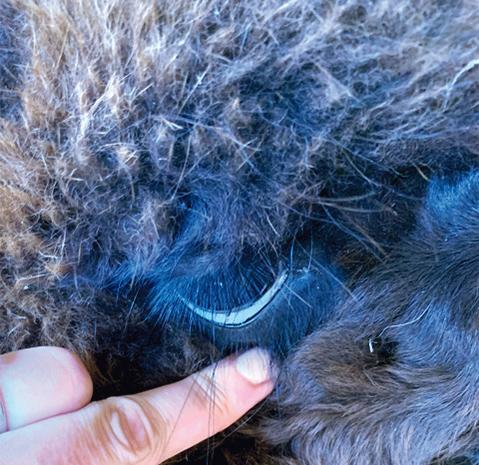
The main reason for sharing Bertie’s story is:
1. The lack of frost over winter, and the warm, wet conditions we are experiencing, will provide the perfect conditions for a mass emergence of H.contortus worms from eggs that have laid dormant on the pasture from last year. Please check mucous membrane colours and body condition scores weekly, particularly of your weanlings/ young adults, as they will be most susceptible. Don’t ignore the subtle signs of weakness or lethargy in your alpacas and conduct WEC checks.

2. Shearing is well underway and allows for a better view of leg conformation. Check your growing animals don’t have any deviation and if in doubt, get a blood test to check their calcium/phosphorus/vitamin D levels. There is good evidence to suggest that dark coloured alpacas do not absorb the same level of vitamin D as lighter coloured animals, even in summer with elevated UV levels. Vitamin A,D and E supplementation of these individuals should be considered year round, rather than seasonal ‘top ups’.
3. If introducing new or returning animals, quarantine treatments to avoid introducing parasites into your herd should be performed.






Lissie Gercke BVSc (hons) CertAVP (CP) MRCVS, The Livestock Clinic, sets out what to do in those all important first few hours and day.
It is a busy time of year for us all. We hadn’t finished lambing before the first of the premature crias were born needing intensive care. It does keep us busy and out of trouble though and as vets we do relish a challenge.
Neonate management is a particular favourite of mine. I love the intensity of the cases, the neonates ability to bounce back and reward us for our time and care although it also comes with the crushing heartbreak when they don’t pull through and we are left bereft and aware of our limitations.
It is not always possible to guarantee the start of a crias’ life. Anything that negatively impacts those crucial first few hours has the ability to have a far reaching impact on their health and ability to thrive.
How do you know how much colostrum a cria has taken from its dam?
It is impossible to know exactly (and as a mum that breastfed this is the infuriating question – how much are they getting?) If the cria is behaving normally, feeding regularly (it can be up to every half an hour) and normally (a few sucks at each teat before moving on to the next in a circular fashion) and the mum has a good milk supply then all should be well and after 24 hours a steady weight gain (and a decent poo) will allay any concerns. If there is any doubt whatsoever then colostrum should be supplemented by stomach tube or by bottle.
If using colostrum from dairy cattle/goats then ideally source from herds that are TB and Johnes tested (and CLA tested if caprine). Don’t assume the quality but test the total solids using a colostrometer (bovine colostrum should be >50g/L, <20g/L should not be used). Don’t buy poor quality colostrum powder, it cannot be relied upon for passive transfer of antibodies. As a practice we stock Immucol which is readily available within the UK and felt to be of sufficient quality. When supplementing colostrum use the volumes above split into two, two-hourly feeds within the 8-12 hour window post birth.
Those early timings are important: a cria should stand within 30-60 minutes, they should nurse within two hours (although usually within 60 minutes). Normal colostrum intake should be 5% of bodyweight within eight hours and up to 15% of bodyweight in the first 24 hours.
Where colostrum intake is delayed, for example where there has been a dystocia, the cria is premature/dysmature, or the dam has poor milk supply, then these cria are at risk of failure of passive transfer (acquisition of a rudimentary but clever immune system via antibodies in colostrum). The gut starts closing and losing the ability to absorb IgG (the most common antibody that protects against bacterial and viral infections) after 8-12 hours making this the golden window for colostrum intake. After this there is little systemic absorption of antibodies however they will still continue to line the gut and offer some protection against gastro-intestinal disease.

If they are drinking well they should be pooing well. Expect a first poo within 24-36 hours (often sooner). Failure to pass faeces can be an indication of meconium impaction and warrants further investigation.
It is normal for cria to loose up to 3% of bodyweight in the first 24 hours –they pass meconium and dry out from being submerged in fluid in the uterus for their whole life to date. After this weight gain should be 200g-500g daily. Failure to gain weight or continued weight loss is a problem that requires immediate investigation.
If you are still in doubt or it niggles that all was not quite hunky dory in those first 8-12 hours then ask your vet to assess the adequacy of passive transfer in your cria. This is easily done with a blood test. The type of test carried out will depend on whether the cria received 100% camelid colostrum or was supplemented with bovine/caprine colostrum (e.g. camelid IgG tests will only accurately identify camelid IgG and not bovine IgG in bovine colostrum).
This short communication barely scratches the surface of early neonatal care but will hopefully be an aid to some for those first few hours.
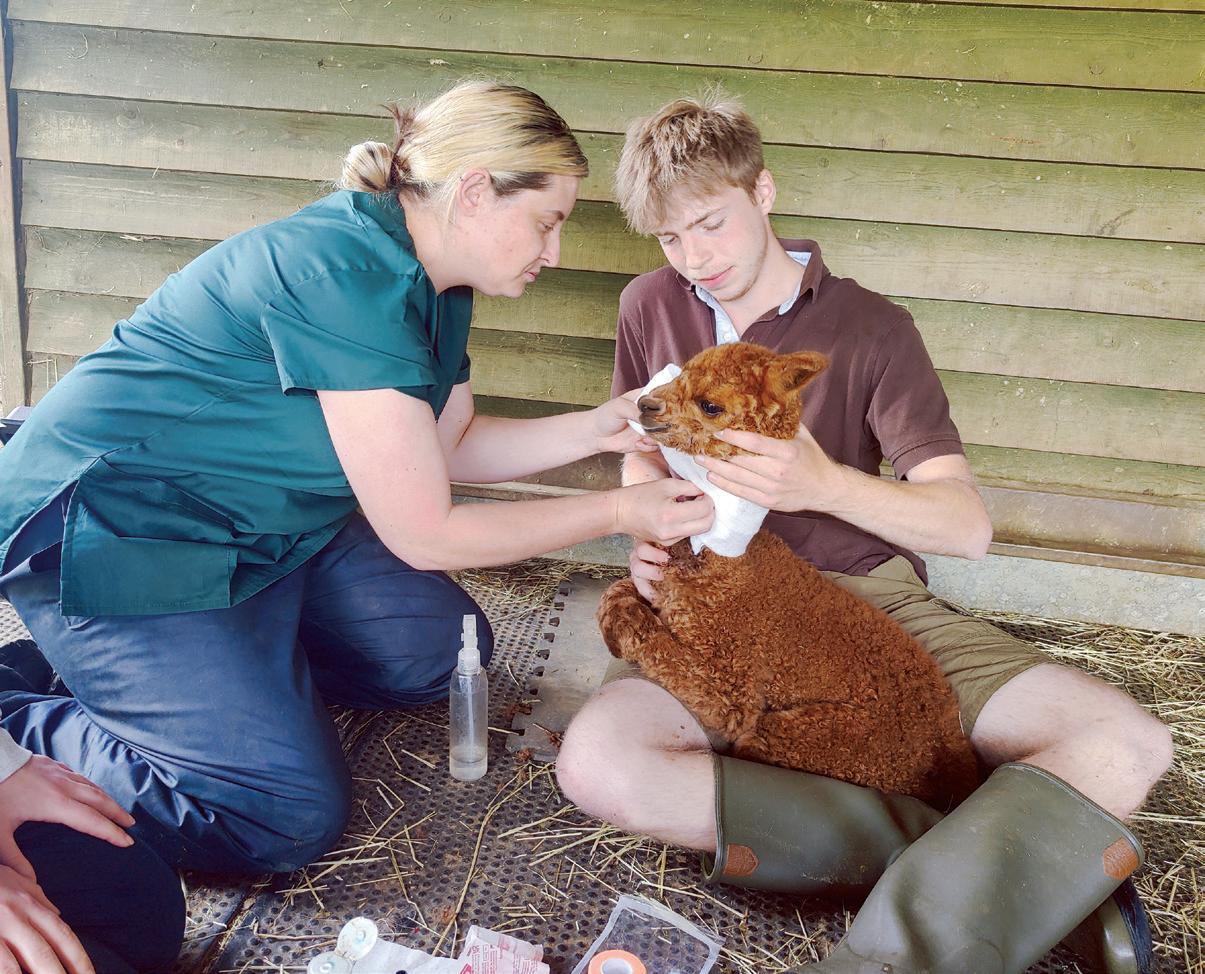
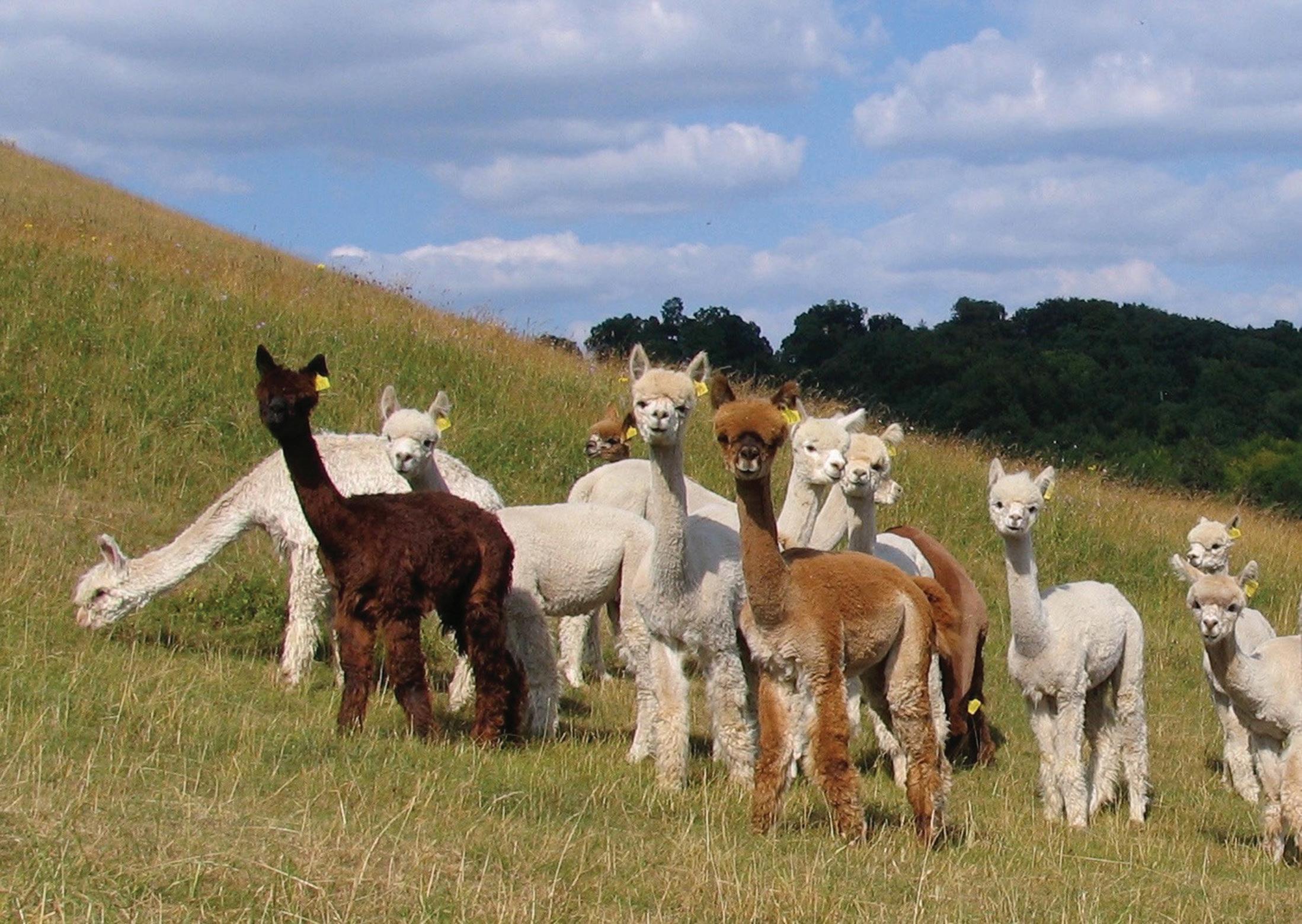
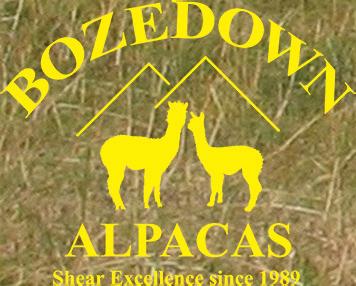

















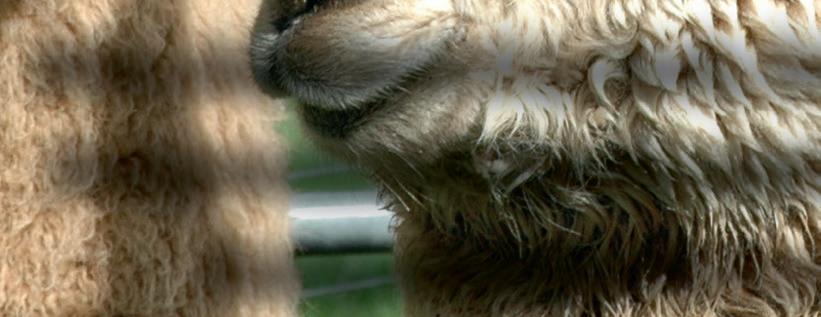





Liz Wright talks to Mary-Jo Smith of Bozedown Alpacas about why having good conformation in an alpaca really matters.
Poor conformation – sway back
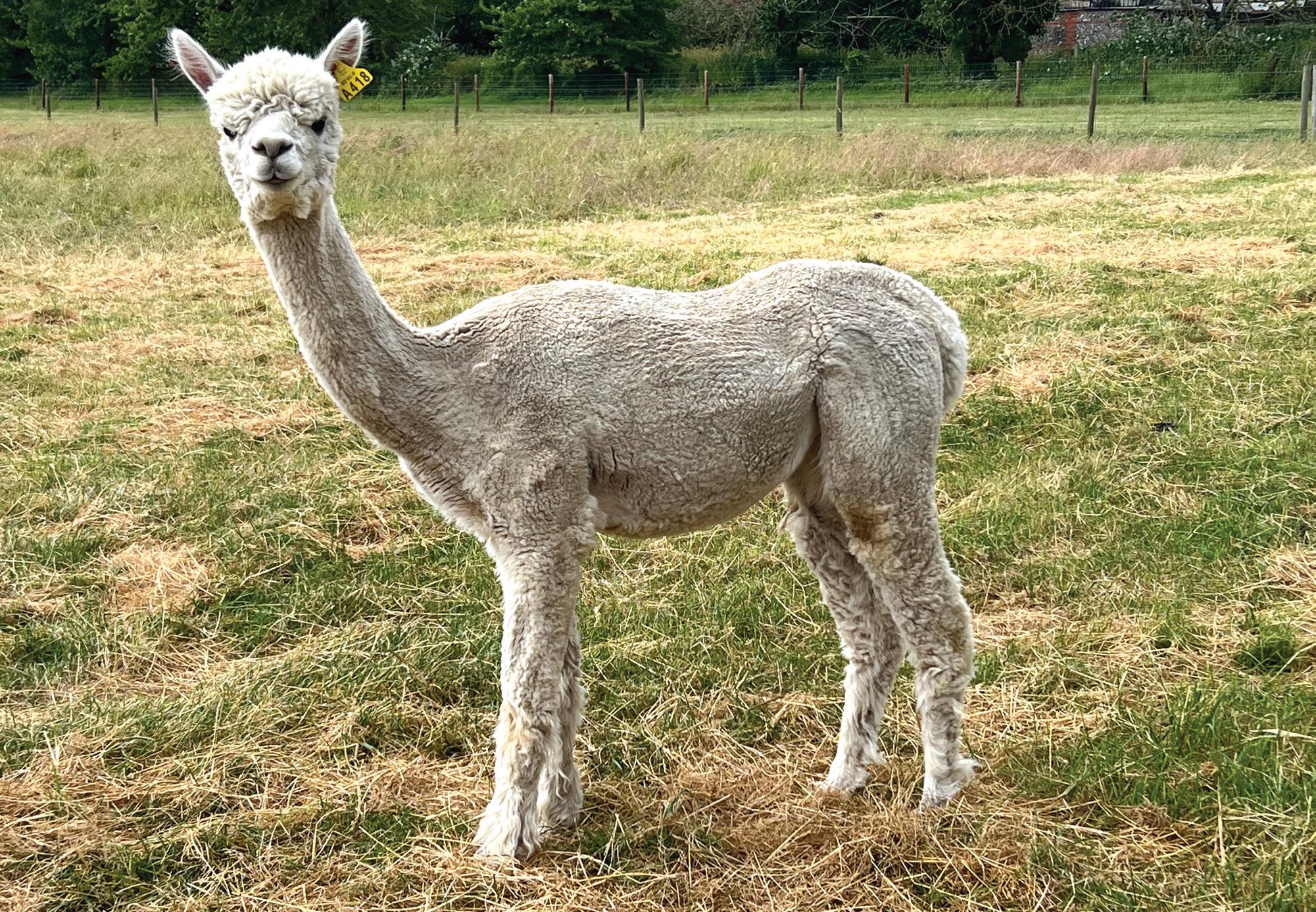
Let’s begin by having a look at when you should evaluate your alpaca’s conformation. Does it start at birth?
You can certainly get an idea of conformation from birth. However, beware of those crias that are premature or dysmature. They can have loose tendons so they look like the legs aren’t straight, or dropped pasterns, or they can look like they have knock knees. These ones straighten out relatively quickly as ligaments and tendons tighten or loosen. Usually within the first week or two. The problem is, you are making mating decisions when the crias are only two weeks old, when it’s not possible to fully evaluate them. It’s best to continually evaluate the conformation through the major growing periods.
How do I know what is good conformation?
By looking at alpacas with correct conformation, by reading the Alpaca standards and understanding what to look for in an alpaca – it’s a lifetime’s work! You need to get to a point that you are very comfortable with what is ideal. Watching at shows and listening to judges oral reasoning will help also.
So what faults should I look out for?

Knock Knees and dropped pasterns
A well balance alpaca

• Starting with the teeth (they grow continuously), there can be minor issues but anything more than 5mm either way will define an over-bite or an under-bite. Excessive under-bite or over-bite should be discouraged as it can interfere with eating and thus maintaining body condition, plus the teeth will need to be checked more often. Minor tooth issues can be managed.
• Moving on to the legs; look at the back leg angulation. There can be a variety of conformation issues with the back legs, but a common one is known as ‘cow hocks’. Identify this by noticing that the hocks are pointing inwards, towards each other.
• ‘Knock knees’ at the front are what they say on the tin – knees that are too close together. This can be genetic, or can be caused by a lack of vitamins at an early age; often not noticed if alpacas are viewed from the side. The same applies to cow hocks which need to be viewed from behind.
• Dropped pasterns are self-descriptive; where the pastern is too close to the ground.
• Sway back, a dip in the backline, can affect movement amongst other issues.
To sum up, watch how your alpaca moves towards you and away from you. There are few animals with perfect conformation, but you need to aim for an ideal when breeding the next generation.
Why does conformation matter? Isn’t it all about fleece?
Breeders have been constantly improving fleece with some excellent results but we still need to worry about the frame that supports the fleece. The point of good conformation is that it facilitates an alpaca to move, to eat, to reproduce and to carry a fleece. Even if you are not keeping alpacas for future breeding, conformation is still important as it will mean your alpaca can live a healthier and longer life. A healthy alpaca can live for 15-25 years and still produce useful fleece at 12 years and beyond, if properly bred and managed. If there are conformational faults, then be aware of them so you can compensate in your management. Poor conformation will lead to painful conditions like arthritis which can cause a loss of condition and a reluctance to move. Male alpacas need to be very strong on the back legs so they can breed more easily, while females have to carry extra weight throughout their pregnancies and also produce milk. Good conformation also helps to maintain body condition.
So if I was seriously breeding, from a genetic point of view what should I do?
Evaluate your alpacas one by one and, if they have minor conformational issues, then look for a mating that will improve those issues. Take time to look at the sire, not purely go by blood lines and showing record. Take advice if you are new to breeding and feel unsure. Again, study the standards published in the Alpaca Yearbook and on the website. If there are major conformational defects, simply don’t breed from that alpaca, or you will just proliferate the defects down your breeding lines. Obviously if a male then castrate.
Other considerations are temperament and the ability to rear their crias. If an animal shows a pattern of a behavioural or rearing issue, think very seriously about breeding from it. Your aim should be a strong and healthy herd, and that can only be achieved by critically evaluating each animal and asking yourself if you should risk breeding another animal with their faults.
Have you any top tips as a judge?
Well, after carefully checking from the front and behind for leg deviations, then get the alpaca to lead confidently on all surfaces so they are prepared for the different show rings. If they are hesitant to lead it can make them look unsound and does not allow them to show themselves off properly.
How to improve and enhance grassland is a common concern.
Jeremy Burgess explores the option of overseeding for small scale landowners, when to consider it and how to go about the process.
Overseeding has increasingly become a practical and cost effective way to improve and enrich pasture. It can be used to reinvigorate grass for improved yield, to establish wildflower meadows in existing pasture or where livestock welfare is the prime consideration the introduction of a herbal mix can be carried out. This typically includes sheeps parsley, sainfoin, fenugreek and ribgrass and can have both nutritional and health benefits to horses and livestock. Herb rich pasture and subsequent hay produced is more palatable as well as providing natural health benefits (see mixed herbs for livestock and their benefits opposite). The fact that overseeding adds to the existing plant population rather than destroying it makes it an ideal technique to add herb species to pasture.
Overseeding can be carried out between March and late September provided soil temperatures are above 8°C. However the most appropriate time for overseeding is late August through to mid October after the existing growth has been removed by grazing or cropping for hay. The slower growth
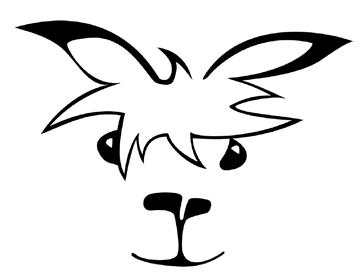

of the existing plant population in late summer also allows new seeds to establish with less vigorous competition. Heavier dew’s often tend to occur in late summer which are a useful source of moisture for new seed in the absence of rain.
Generally as a guide to grassland management the spring months are best for maintenance such as harrowing and aeration whereas the late summer months are preferred for enhancement, restoration and rejuvenation as shown in the table above.
Seed supply can be obtained from a number of sources, several national suppliers are active online and usually show a breakdown of the seed mixes they sell to allow you to optimise the mix best suited to your needs. Local seed merchants are well worth seeking out as they can offer advice based on knowledge of your area, soil type and climate.
A typical application rate is 12kg/ha to 15kg/ha for grass mixes though the seed suppliers recommendations should be followed. When considering the equipment and techniques to use for overseeding it is worth going back to basics and reminding ourselves what conditions we are aiming to create to











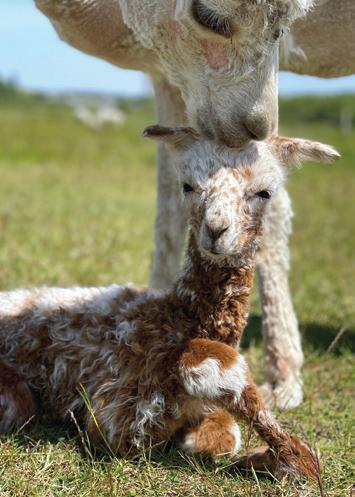

Overseeding is a useful and flexible management tool to enhance grasslands and meadows. The introduction of the Scarrow now makes it a practical and affordable option for smaller scale landowners
allow new seed to establish and thrive. The key principles are:
• Bare but not deeply cultivated or disturbed soil. As a guide around 50% bare area when looking directly down into the sward. Most grass, herb and wildflower seeds should be no more than 3mm to 5mm deep when sown.
• Moist but not wet soil.
• Soil temperatures of at least 8°C.
• Good seed to soil contact.
To create areas of bare soil a chain harrow can be used though these are often not aggressive enough and do not produce the required scarifying effect. Small tined harrows are also available but tend to be very lightweight and do not penetrate sufficiently to produce the bare but uncultivated conditions we are aiming for. It was this situation that led to the development of the Scarrow by Devon based Tractek Engineering. The Scarrow is specifically aimed at smaller landowners and combines scarifying tines with a traditional chain harrow mat, the tines penetrating better due to the weight of the harrow chain whilst the chain harrow itself continues the opening up of the sward initiated by the tines. The Scarrow is a versatile machine which is used for both Spring maintenance including the repair of damaged areas after winter and with the addition of the purpose designed seed spreader is the perfect solution for overseeding.
>> Continued on next page
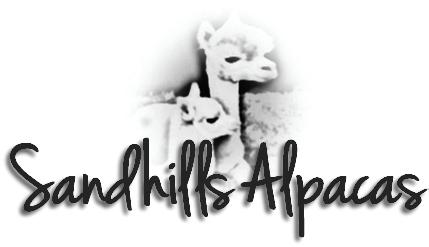



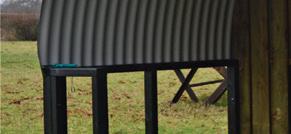





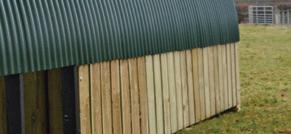
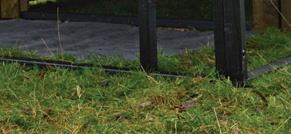
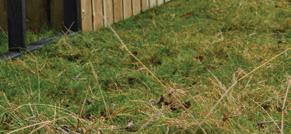
Weather:
Sainfoin is a natural wormer and a good source of condensed tannins which aid the digestion of protein. It is high in Omega-3 fatty acids which improve the resilience of the immune system. Sainfoin hay, also known as ‘holy hay’ or ‘healthy hay’, is low in sugar and starch and is particularly suitable for horses on a strict diet.
Sheeps parsley is high in iron and vitamins A and C. It is useful to alleviate the symptoms of kidney and bladder complaints.
Sheeps burnet or salad burnet, is drought tolerant with a long growing season. It is highly nutritious and an excellent source of trace elements.
Ribgrass is a fast-growing, long-lasting herb, and a rich source of calcium and selenium. It helps maintain a healthy digestive system and its leaves are high in anti-inflammatory compounds making the herb effective for all types of inflammation.
Fenugreek is a valuable digestive tonic aiding the digestive system in making better use of available food. It is highly nutritious and a good source of protein and fat.
Protecting against adverse weather
Ventilation: Provide good air flow
Flies:
Shelter against summer heat and flies
Adaptability: Water drinkers, troughs and deep bedding can all be added
Husbandry: A great place to complete feet-trimming, vitamin drenches or as a quarantine area
Appearance:
Practical and attractive
Size:
Various options and sizes available. Please visit our website for more details.
Being an Alpaca breeder the welfare of our animals is paramount so the pods are designed and manufactured by ourselves taking this into account. We designed the Alpaca pods for our own herd and are now pleased to offer these for sale.

The same plot eight months later in May. A diverse plant population is now established and thriving but careful management is needed going forward
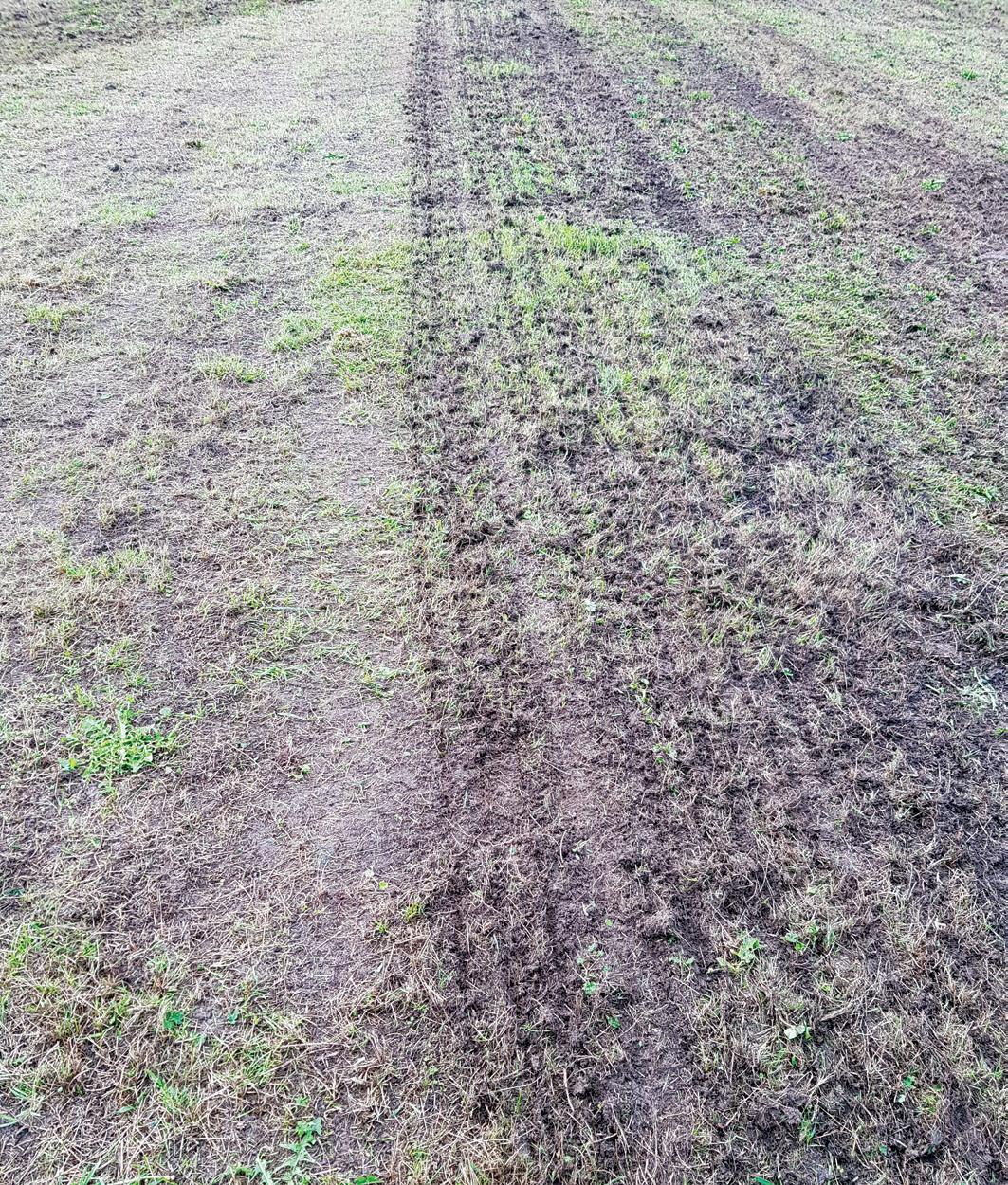
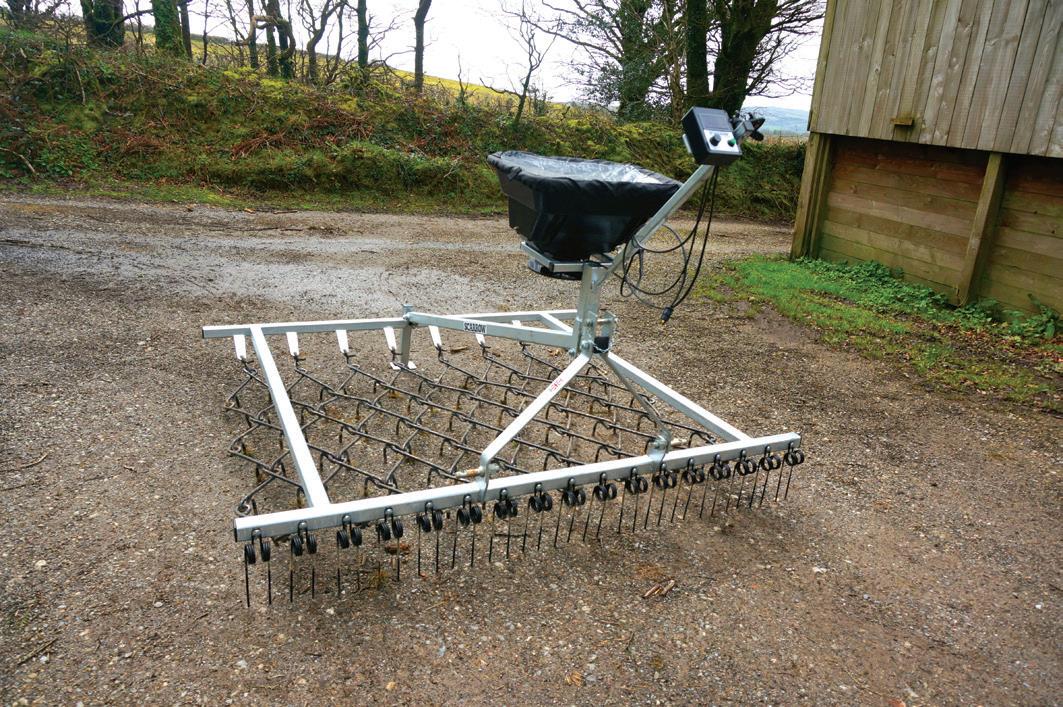

Once the bare ground has been created and the seed has been spread, the final part of the establishment jigsaw is to provide sufficient seed to soil contact. A pass with a lightly ballasted flat roller is normally sufficient to firm in the seed and press it into the soil but not deeply. Think of re-creating the effect of treading it in with your foot.
Having completed the operation emergence of new seed should be seen within two to three weeks though full results will not be seen until the following summer. Do not be tempted to graze or mow too soon to allow the new plants to establish.
In summary, overseeding is a practical and effective way to improve, enrich and enhance grassland whatever your motives. The technique is quick, easy, chemical free and produces minimal emissions. With new equipment such as the Scarrow now available, overseeding is very achievable for the smallholder and small-scale landowner.
Jeremy Burgess is a professional Agricultural Engineer and mechanisation advisor with over 40 years experience in many countries of the World. He has a small farm in South Devon and operates a contracting service specialising in establishment and maintenance of traditional meadows.
Last year, Tony and Hilary Monkcom took on the running of South East Alpaca Group (SEAG) and there was a great fibre workshop back in July 2023. The group is going to be run with a committee and membership fees, and so SEAG is changing and becoming a new fully registered BAS Regional Group with a small annual joining fee.
The regional groups are great places to network, socialise and learn with like-minded passionate alpaca people. Not just a showing group, the SEAG Regional Group is for all BAS members in the region and beyond, whatever their interest be it lifestyle, fibre, crafting, leisure, walking, therapy, showing and more.
The logo has been specially designed for SEAG and a team of keen volunteers are ready to serve this huge region on the SEAG committee. A new website is being created and there will be a zoom inaugural AGM on Monday 29 July at 7.30pm. There will soon be dedicated SEAG email addresses in operation, but in the meantime, if you would like to get involved, join the SEAG and find out about events that will be taking place, get in touch with hilaryandtony@pinnaclealpacas.com
£20 annual subs per herd/household. New BAS members will have their first year’s membership for free as part of their BAS subscription.
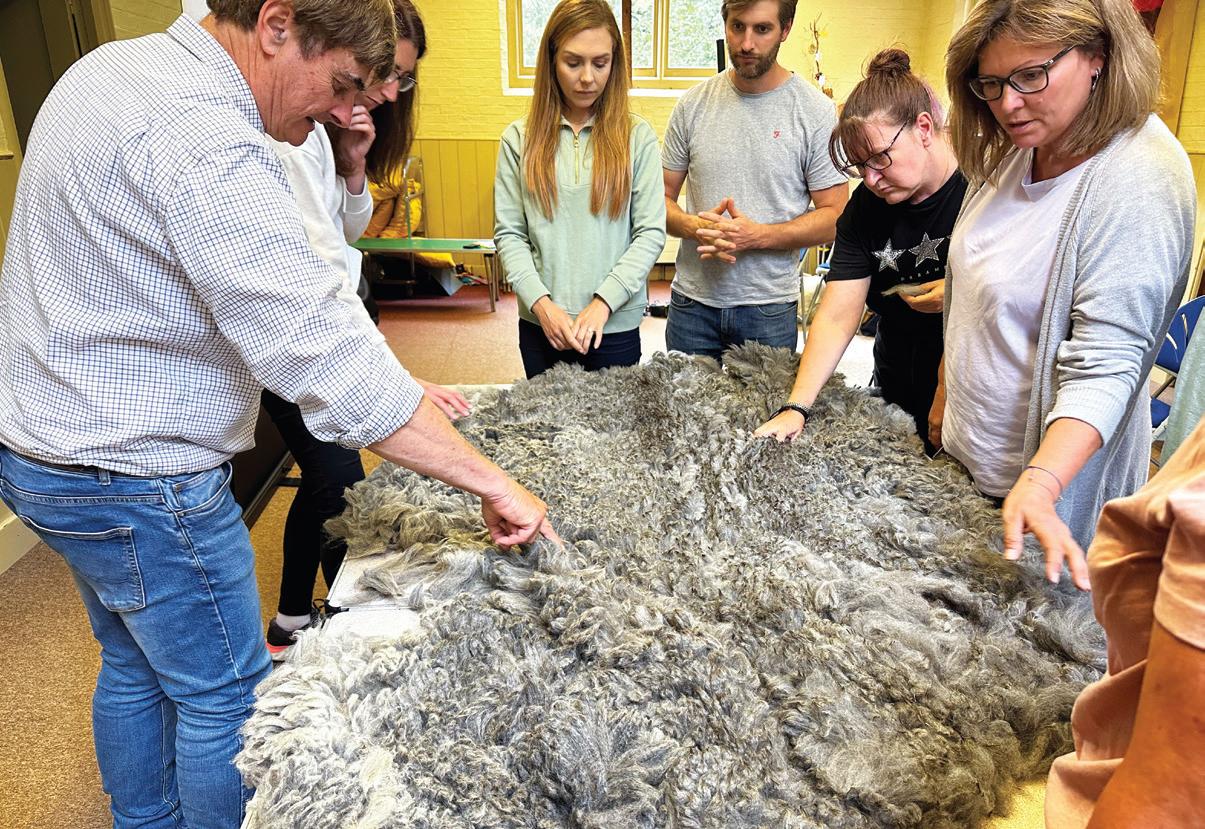





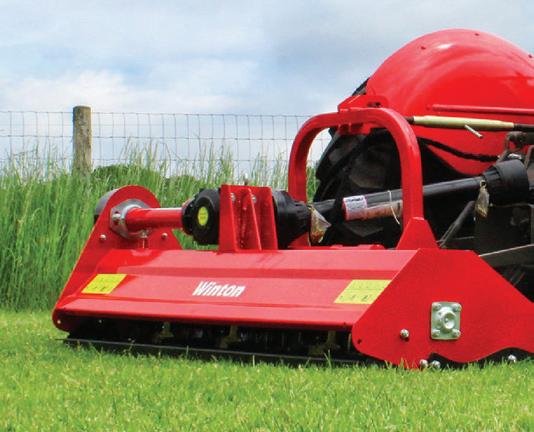

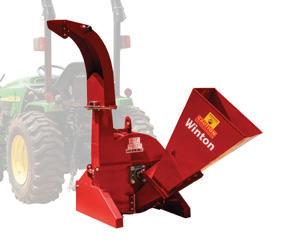






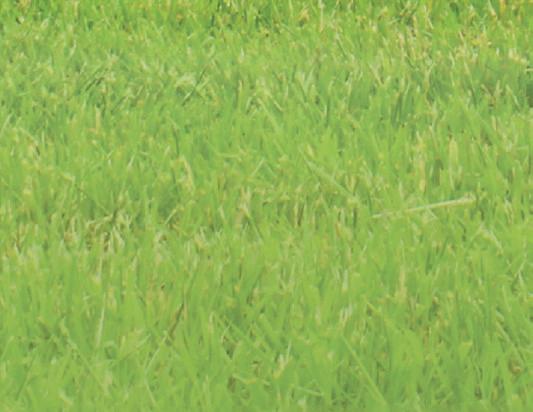


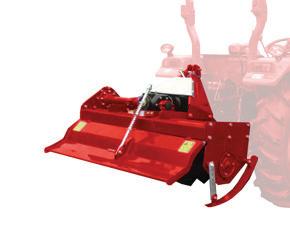
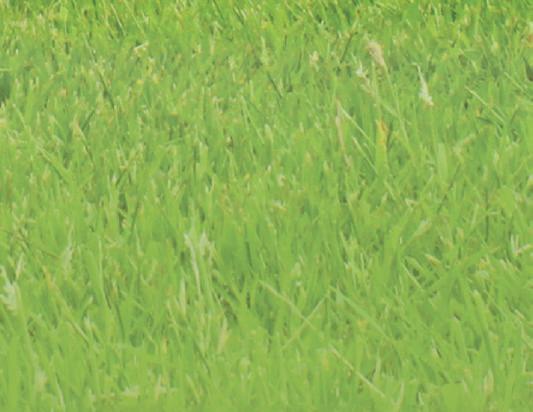






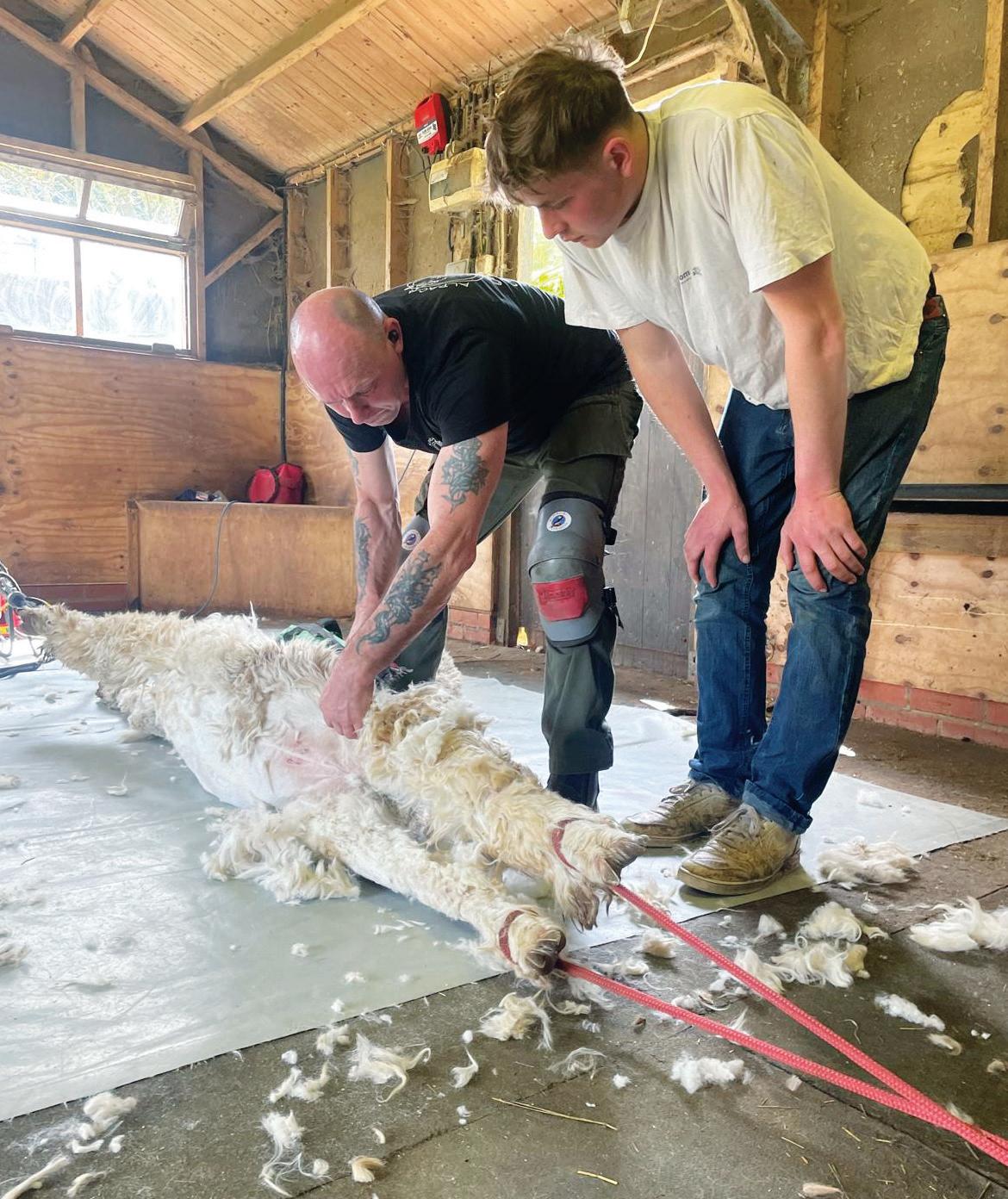
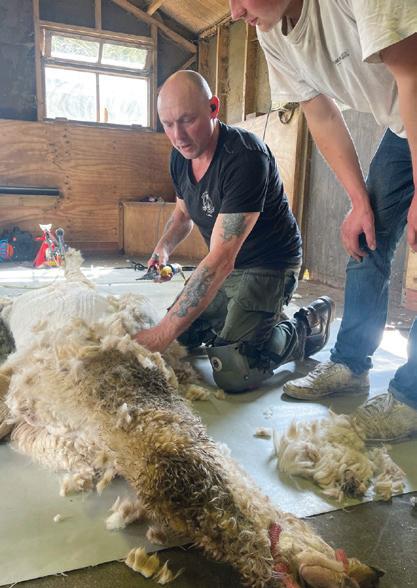
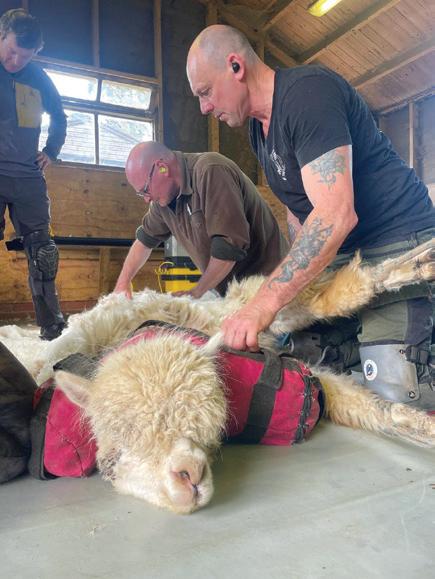
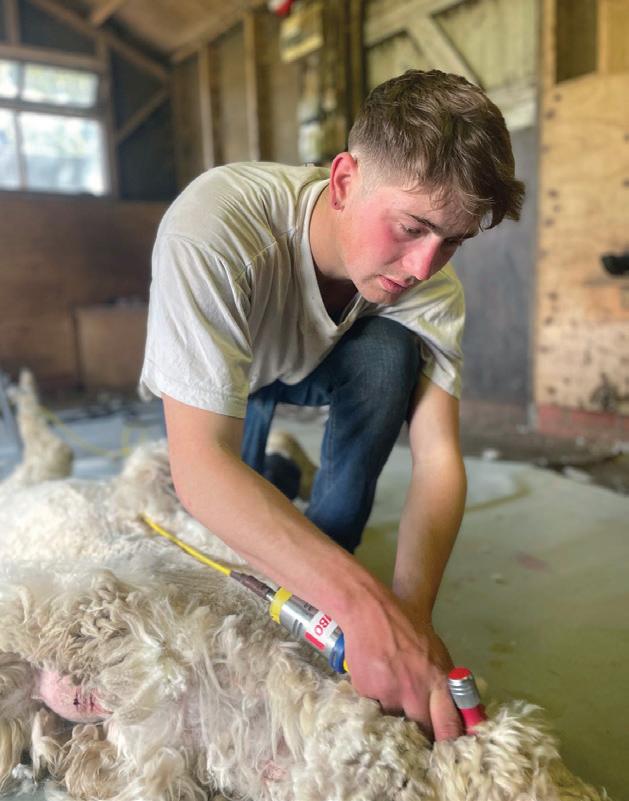
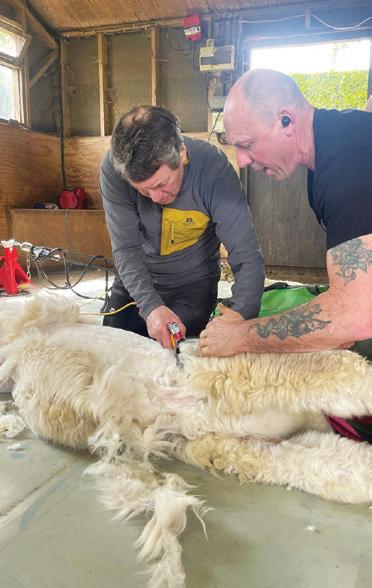

In an attempt to narrow the gap between alpaca shearing demand and supply, BAS have successfully run a pilot scheme for prospective shearers at a subsidised rate. The first session took place in May under the expert guidance of Colin Ottery at Snowshill Alpaca Farm in Gloucestershire.
We are indebted to Roger Mount and his team, for generously allowing access to his alpacas and facilities for four days of intensive learning. During the first two days the delegates successfully sheared over 30 alpacas and had the opportunity to remain for a further two days to get hands on with fleece management and alpaca handling.
Colin was very pleased with the progress delegates made. They now have a sound knowledge of the processes and skills needed to shear alpacas safely and have the ability to harvest a commercially viable and processable fleece.
Overall the pilot was a huge success and moving forward we will be accepting delegates who have sheep shearing experience. Anyone interested in next year's scheme is encouraged to participate in a British Wool Board Sheep Shearing Course. A list of courses can be found on their website –www.britishwool.org.uk.
The BAS Board wish to thank Colin, Sam, Roger Mount and his team for supporting this initiative.
If you would like to know more about this incentive, please contact Duncan:
✉ ceo@bas-uk.com
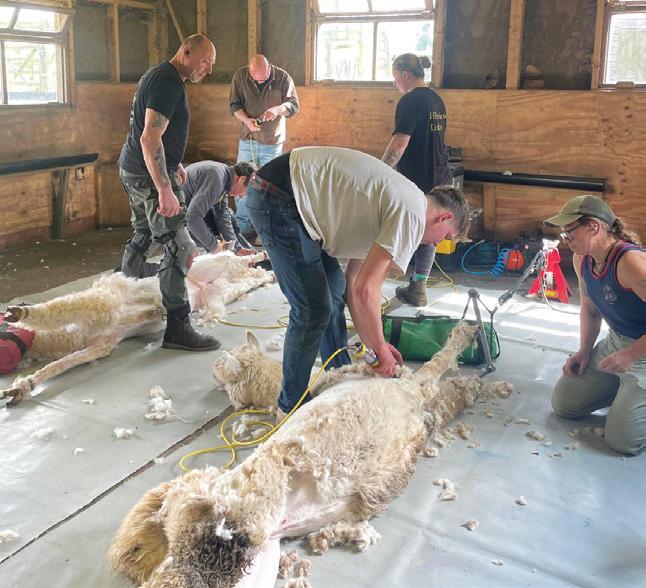
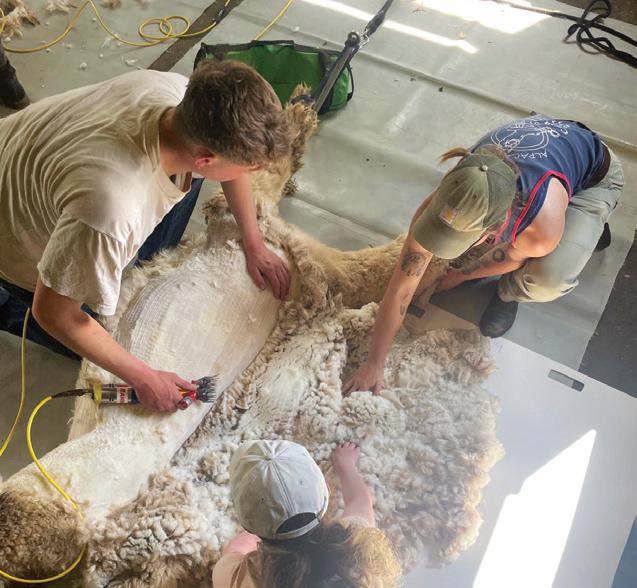
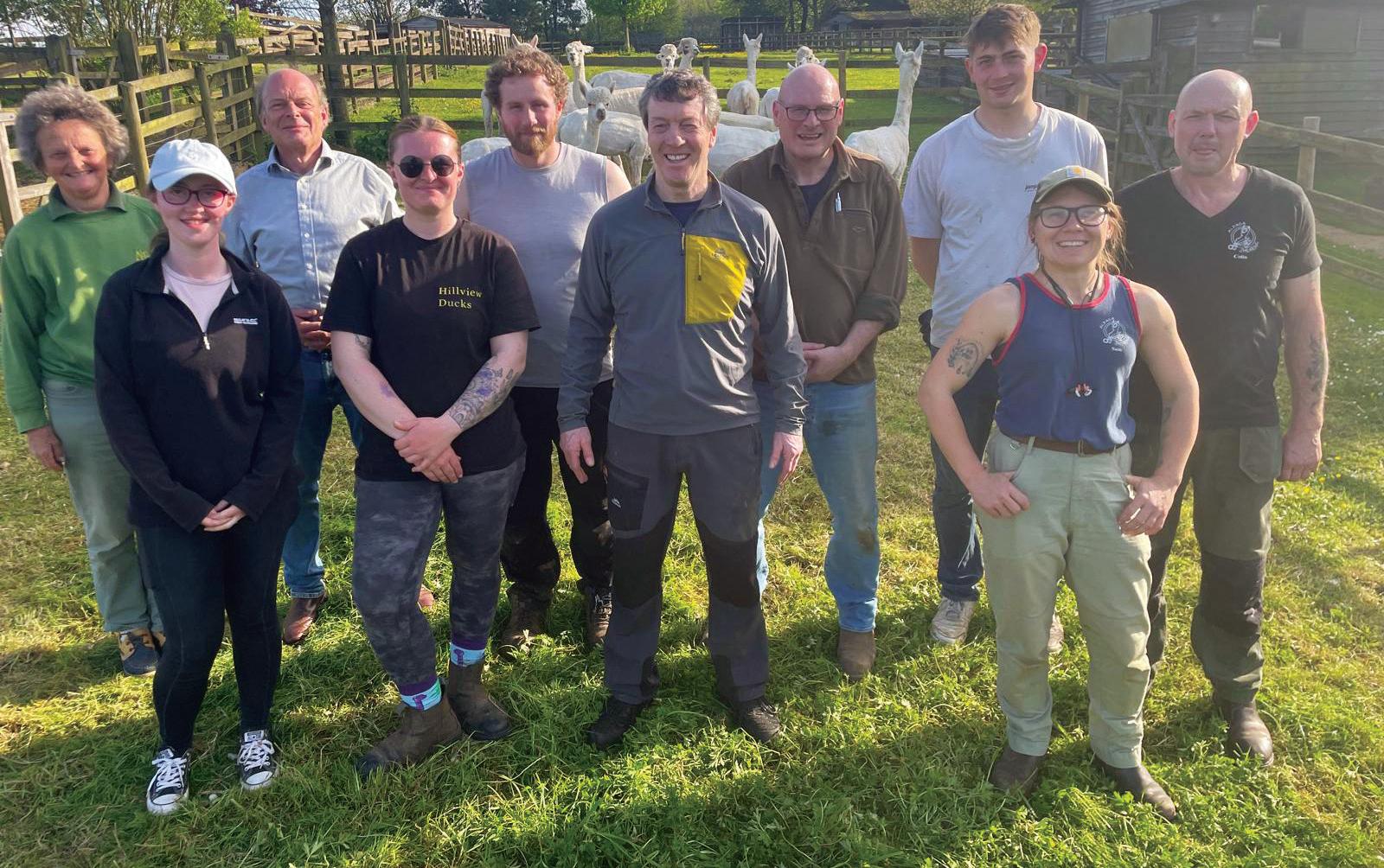
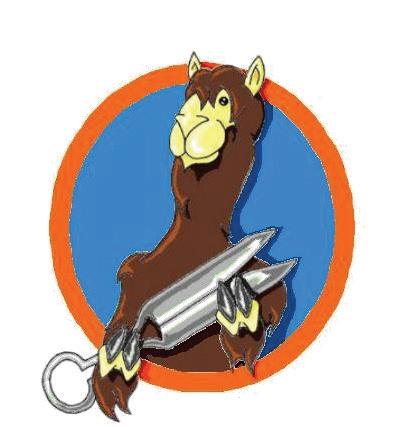






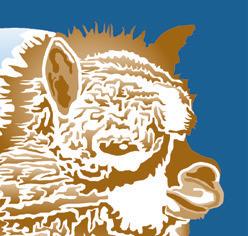

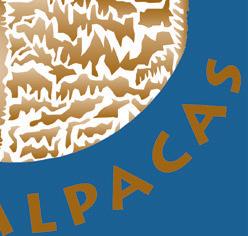





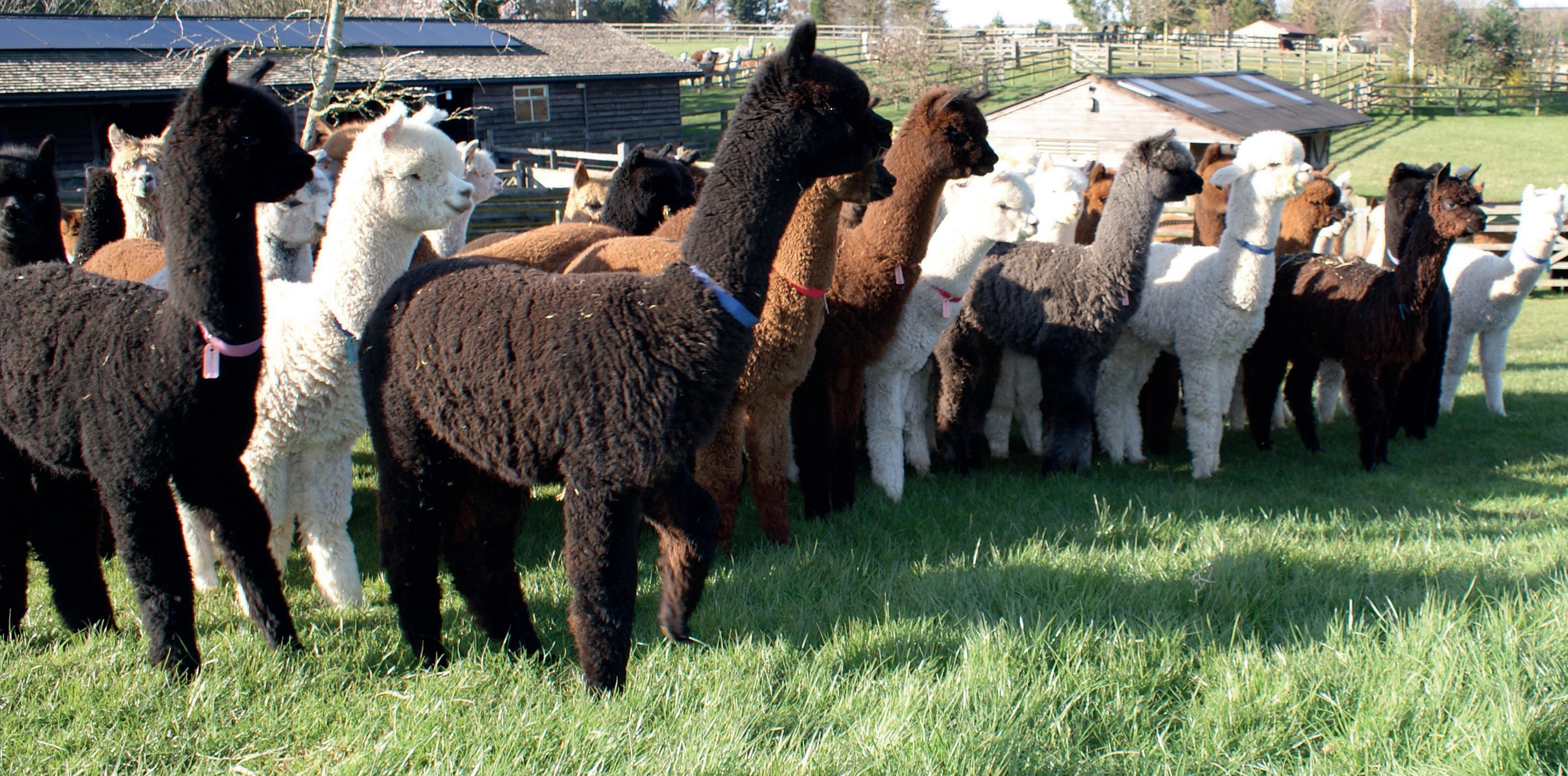
Anne Nickerson of Burnt Fen Alpacas tells you how.
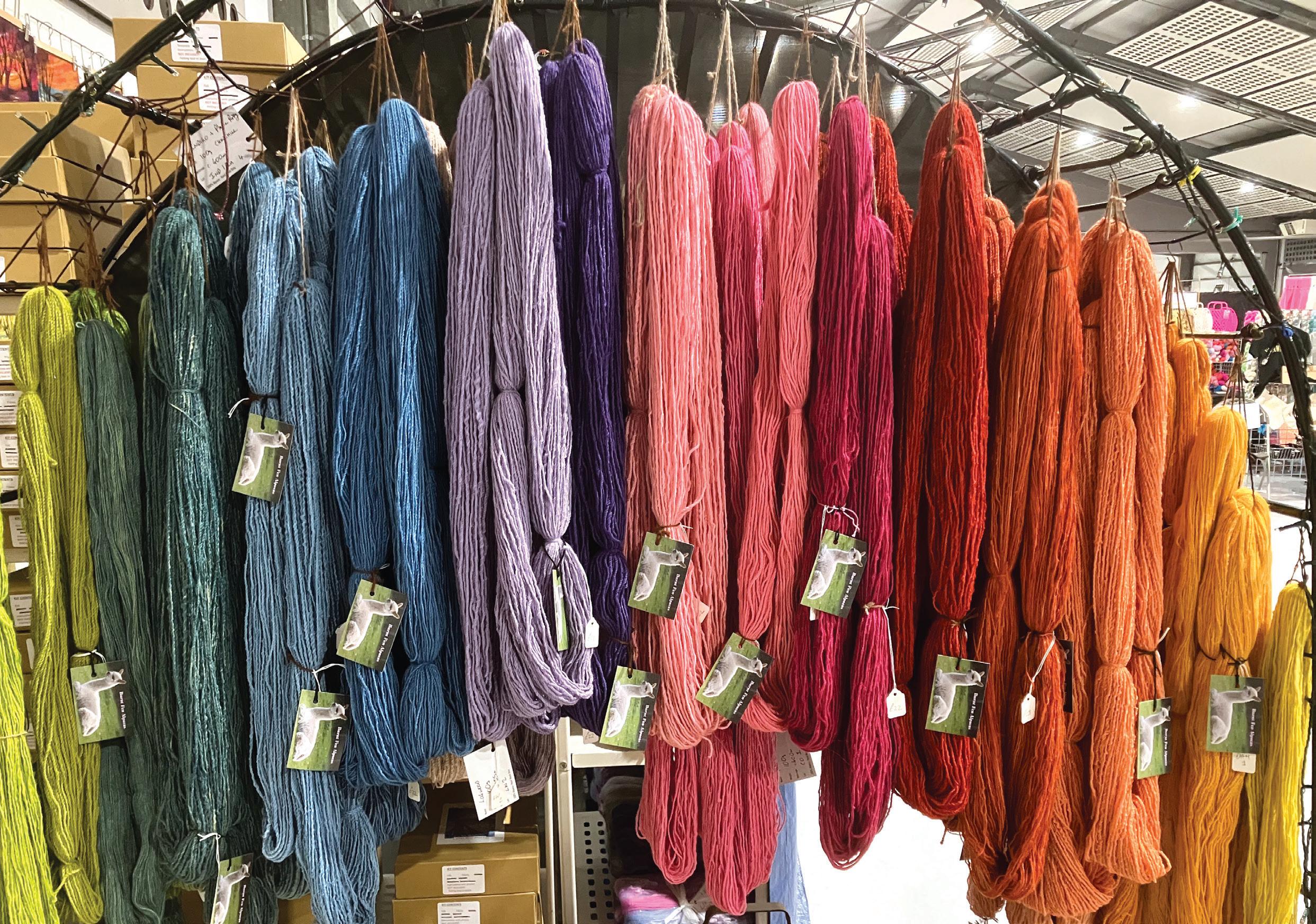
Natural dyes have been used for thousands of years to create stunning vibrant colours. There is often an assumption that natural dyes will be dull, fade or wash out but it is often a lack of preparation of the yarns pre dyeing that can lead to unsatisfactory results. The dyeing process itself is very straightforward normally consisting of brewing leaves, flowers, barks or insects to release colour to make a dye bath. By following a few simple steps you can ensure great results.
1. Any processed yarn needs to be washed thoroughly before dyeing to get rid of finishing products the mill will have added during processing. Raw fleece also needs to be washed to get rid of its natural oils and
accumulation of dust gathered over the year. If not washed out these contaminants will act as a barrier and prevent the fibres absorbing the dye properly. Pre wash the yarn in hot (hand hot )water with a dash of detergent, using a big enough bowl to be able to move the skeins around easily. Soak the skeins for about 20 minutes moving gently in the water to release trapped contaminants, then rinse thoroughly. When working with raw fibre you may have to repeat the washing step with detergent two or three times to achieve clear water. Always wash and rinse your skeins in the same temperature of water as moving wool from hot to cold or vice verse can shock and felt the fibre.
>> Continued on next page
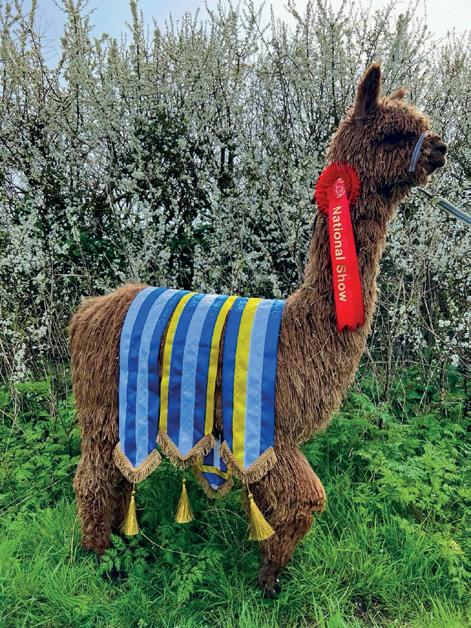
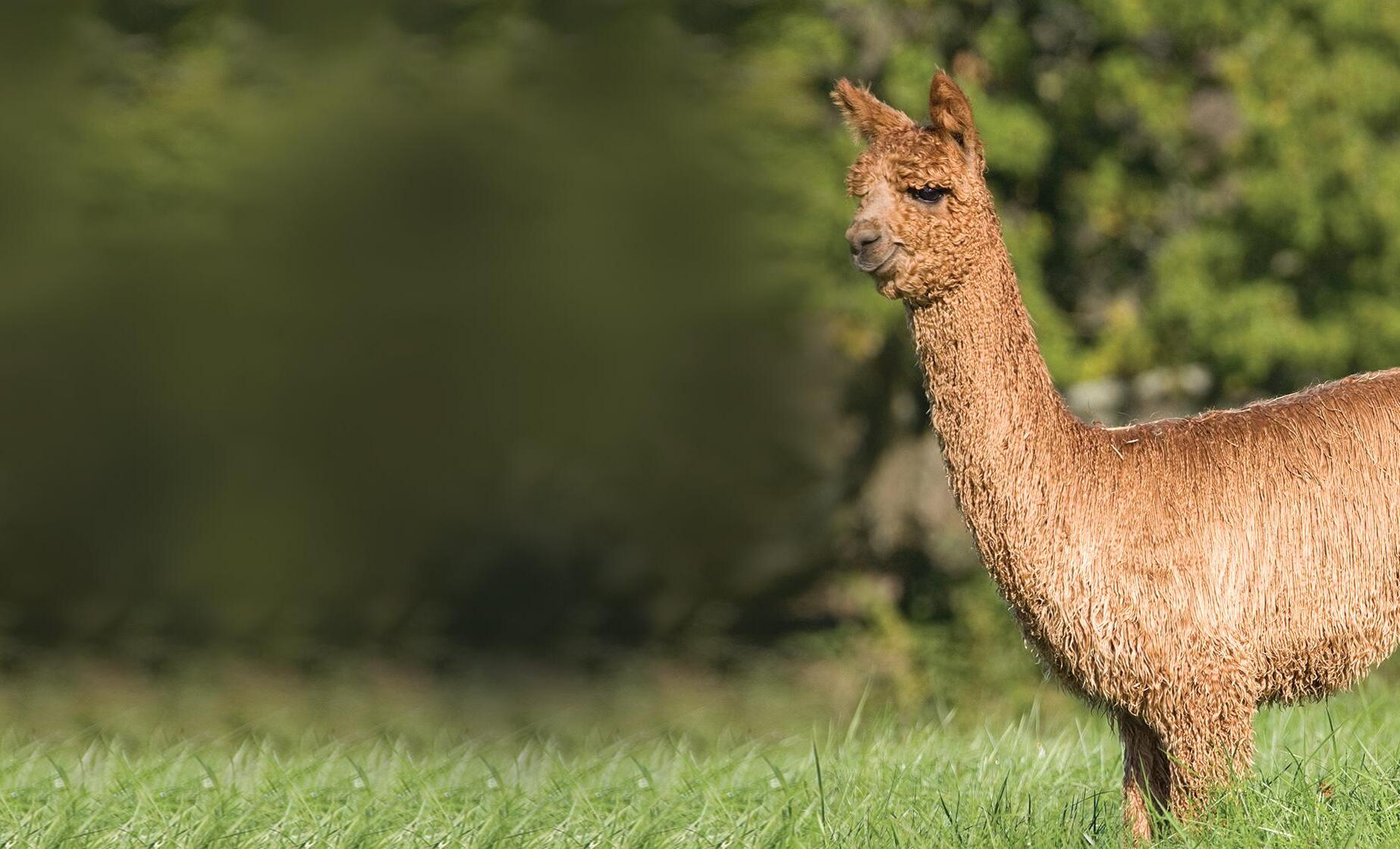


Skeins need to be tied correctly

Always label your skeins

Most dye recipes call for the yarn to be mordanted
For the mordant and dye to absorb properly into the yarn the fibre needs to be thoroughly wet
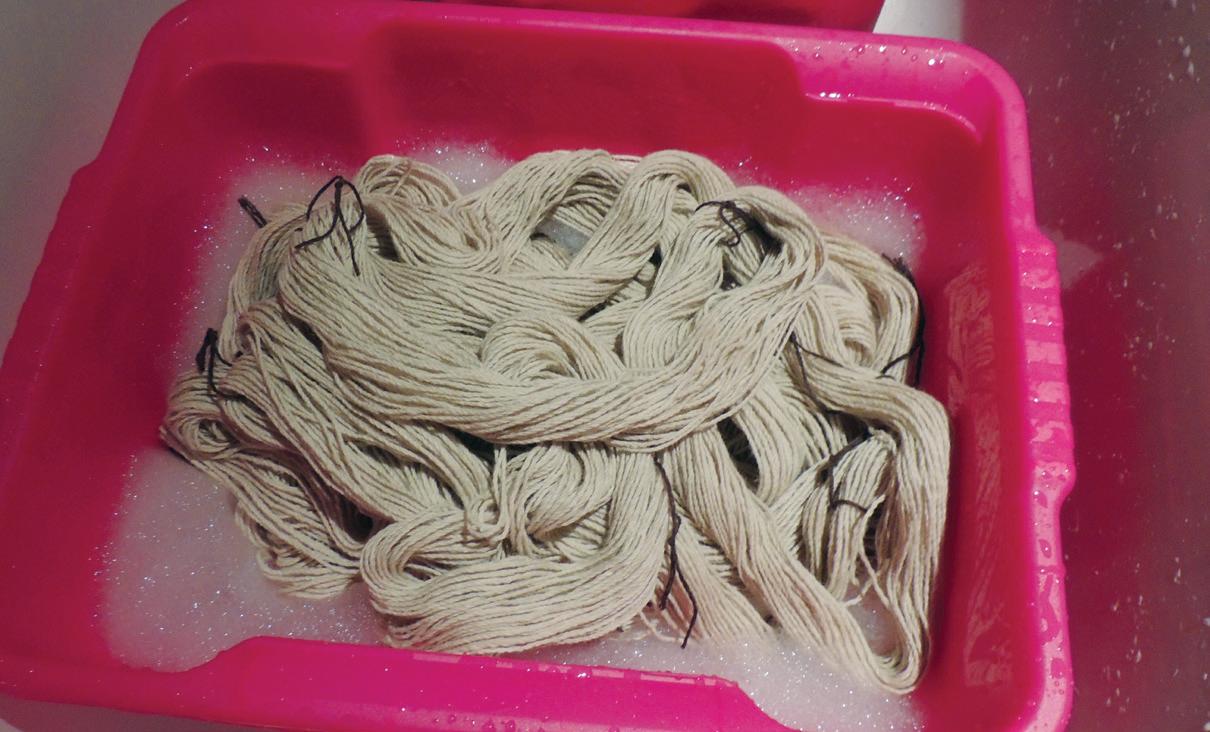
2. Dye recipes all follow a calculation based on the weight of dry fibre (WOF). This varies depending on the dye stuff being used. Each recipe has its own calculation based on many years of practice by natural dyers. For example to achieve a medium shade with Weld the WOF is10%, meaning that 20g of Weld would dye 200g of fibre. It is essential to weigh fibre when dry and keep a note so you can use the recipes effectively.
3. Skeins need to be tied correctly to prevent a tie dye effect and to prevent tangling. You will only put a badly tied skein of yarn into a dye bath once –it will transform itself into the mother of all knots that will try the patience of a saint to sort out. Tie skeins loosely in 4 places using a figure of 8 loop coming up through the middle of skein.
4. Always label your skeins. I use laminate labels with a permanent marker, so the labels can go through washing, mordanting and dyeing and be updated as I go. Keep note of the date, type of yarn, weight of yarn, dye stuff and mordant if used. Always keep a sample of the dyed yarn with these details, this will allow you to build records of your dyeing to see what works best and which dyes you prefer for future dyeing projects.
5. Most dye recipes call for the yarn to be mordanted before adding to the dye bath. A mordant creates a chemical bond between the fibre and the dye, like a molecular glue that allows the dye and the fibre to bond. Without a mordant the colour can be duller and more likely to fade. The main exception to this is Indigo which needs no mordant but is a very different dyeing process. There are many types of mordant but I prefer to use alum as it works well for protein fibres and doesn’t harm the yarn. However lovely the colour you achieve, if your beautiful baby alpaca yarn suddenly feels like rope it’s not worth it. For example an Iron mordant gives dark colours but can damage and harden yarn. As with dye recipes the amount of mordant is calculated using WOF – remember that WOF always refers to dry weight, be it yarn, fleece or fabric.
6. For the mordant and dye to absorb properly into the yarn the fibre needs to be thoroughly wet. Soak the fibre for at least an hour before adding to mordant or dye baths. Adding dry fibre to a dye bath will result in an uneven, patchy dye on the yarn.
Working with natural dyes is a slow process but these steps can be achieved in stages. You can wash your skeins one day, mordant another and then make your dye bath and dye another day. Pre mordanted skeins can be kept damp for three days before use or allowed to dry naturally and be used a year later with no ill affect – as long as the yarn is stored safely. This takes the pressure out of the process and allows the actual dyeing day to be all about colour rather than prep. Before each process the yarn has to be thoroughly wetted out.
You don’t need fancy equipment for natural dyeing, most of the equipment can be found in your kitchens – but please keep your dyeing utensils separate from your domestic cooking equipment; natural does not mean safe - many plants are poisonous or irritants. Always work with good ventilation and if you don’t know the properties of the plant, wear gloves.
Using natural dyes is a journey of exploration. Soil type, water PH, region or time of year can influence the resulting shades achieved. Many dyes are PH-sensitive and will give a different colour depending on whether the dye bath is acidic or alkaline. This PH sensitivity can be used to deliberately change certain colours. Dyer’s Coreopsis, for example, will be more yelloworange when acidic and more coral-pink when alkaline. Picking plants in different seasons can affect the colour, even picking plants at different times of day is suggested to affect dye intensity. You’re basically doing a chemistry experiment, bonding molecules together, so go easy on yourself and enjoy the process.
More information
Annie Nickerson teaches at Burnt Fen Alpacas an Introduction to Natural Dyeing Workshop paper-plane www.burntfen.co.uk




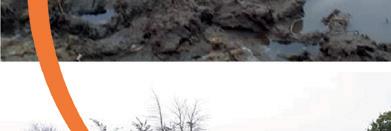

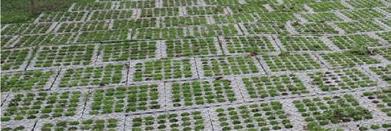





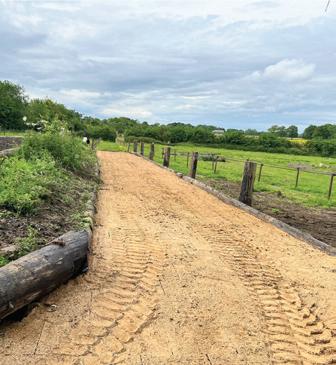
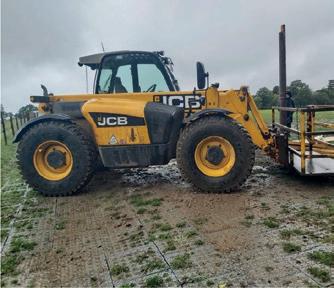

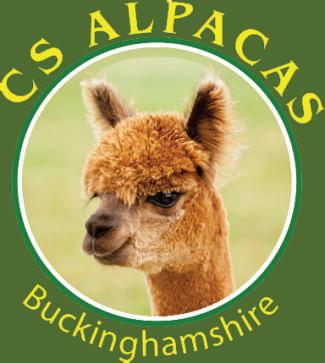






































Lilipop Mill is a family run mini mill based in Shareshill Staffordshire, specialising in alpaca fleece. Having their own herd of Alpacas since 2010, husband Mark, wife Rebecca and daughter Sophie decided to expand out to include the mill.
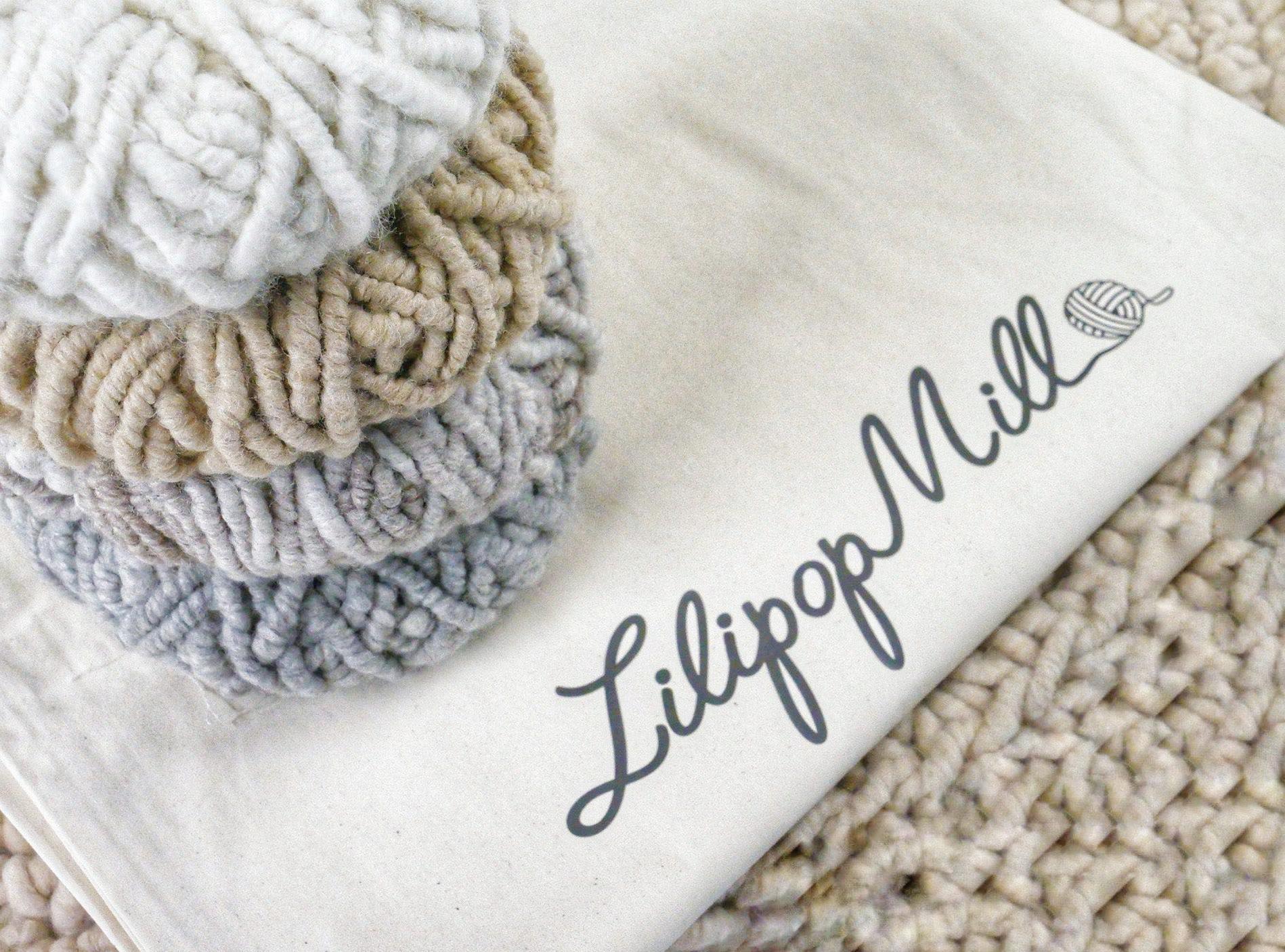
Lilipop Mill processes small batches of fibre which makes it the perfect choice for alpaca owners who only have a few pets, or for larger breeders who want to be sure that the yarns and products they receive back from the mill, are made from only the fleeces that they sent in.
We love all things fibre and believe that all parts of the alpaca fleece is able to be used for something. We also believe that every alpaca’s fleece can be made into something lovely, regardless of the quality. We don’t believe that only the best show quality fleeces should be processed!
We know how our customer’s feel about their alpacas and the joy that they get from having something made from their beloved alpacas fleece. So
"We
also believe that every alpaca’s fleece can be made into something lovely, regardless of the quality"
it is lovely to be able to make a range of products and items from them.
We offer a huge selection of different products that alpaca owners can choose from when we process their alpaca’s fleece. For the best quality fleeces customers can have beautiful core spun chunky knitting yarns made which we can then knit into scarves, headbands or snoods. We also make a range of craft materials from the fibre such as batts or rovings for hand spinning, and fluff or scoured fleece for those just wanting to take the hassle out of washing and preparing the fleece!
We can also make core spun rug yarns which are a slightly chunkier, heavier version of the knitting yarn. This is perfect for larger craft projects such as peg looming and weaving. Our customer’s also have the option to
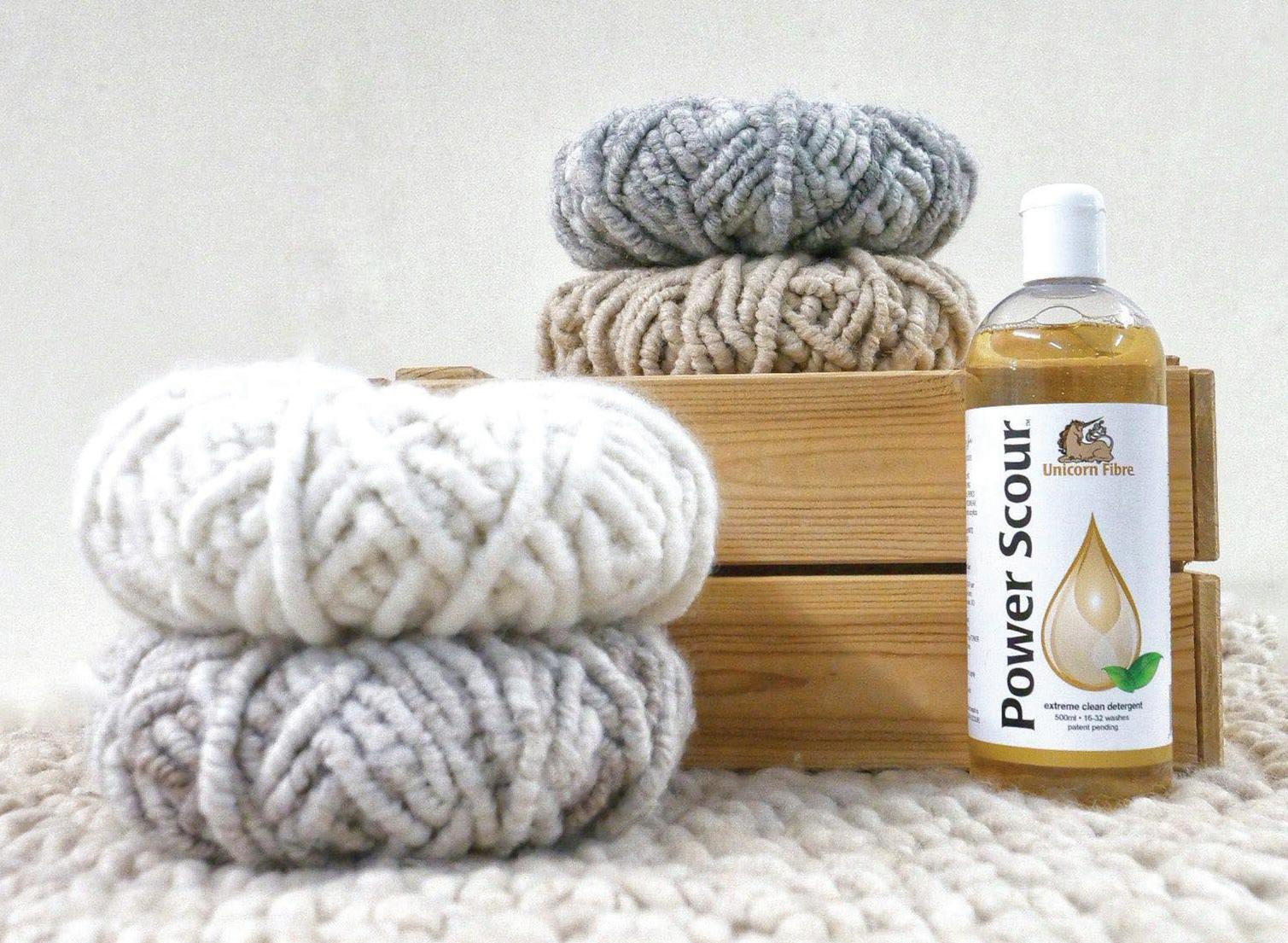
have their rug yarn crafted by us into beautiful chunky crocheted blankets and throws which are one of our most popular items with alpaca owners as they are a lovely way to use and show off their alpaca’s beautiful fleece in their homes!
For alpaca owners who are short on time or for beginners we offer a skirting service, meaning that they can just send the fleeces in as they are and we can sort out all of your fleece for you.
Any second cuts or skirts can be processed into stuffing and used to make luxury handmade alpaca pillows and cushions. We even pop them into a beautiful drawstring bag which can be personalised, making them the perfect gift!
For customer’s looking to sell their alpaca yarns we offer the option to make the yarns into personalised craft kits. With the core spun knitting yarns we can make ‘knit your own alpaca scarf’ kits, which include everything needed to make a chunky alpaca scarf. Then with the rug yarns we make a peg loom rug making kit which not only includes all the equipment needed to make a beautiful alpaca rug, but also full step-by-step picture instructions teaching you how to peg loom!
We have a real passion for alpacas and the fibre, there is no feeling better than processing a customer’s fleece and being part of the happiness it brings when they receive their products or yarn.
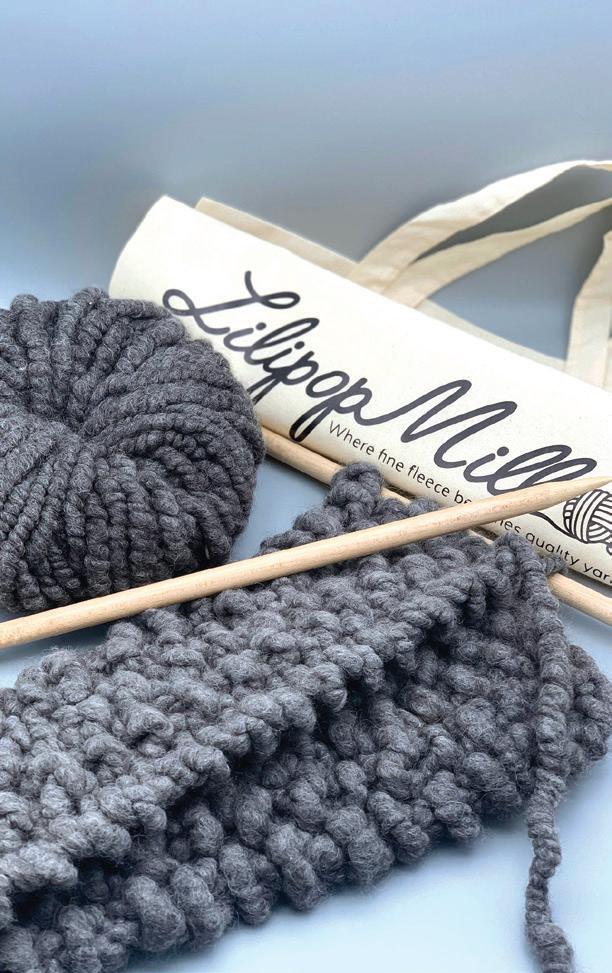





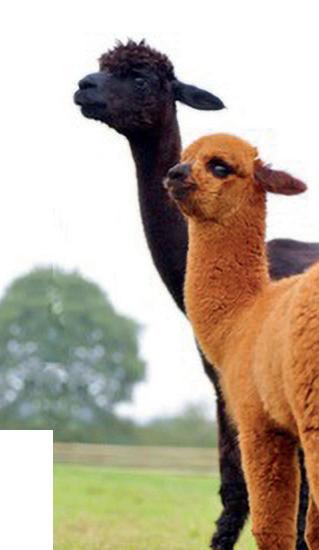
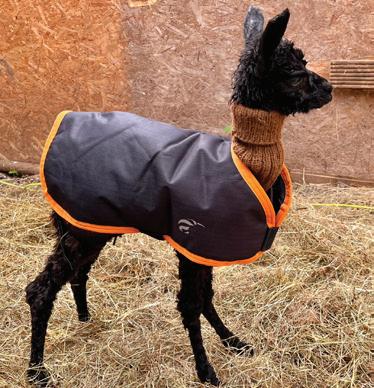
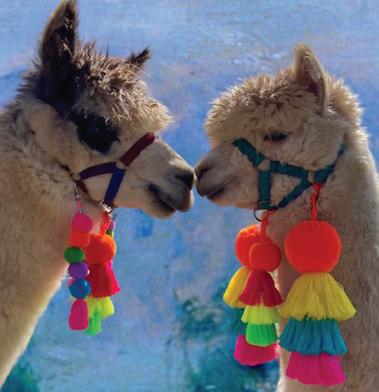
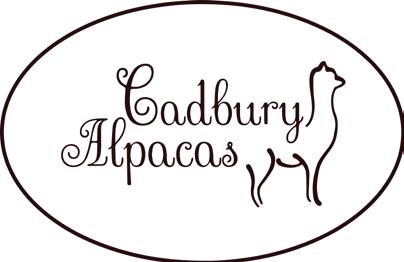
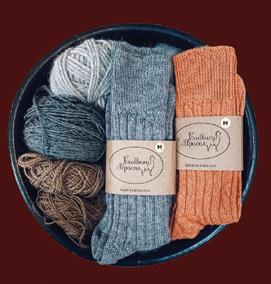
What better way to add to an eco friendly alpaca farming business than build a low impact roundhouse? Cadbury Alpacas shows us how it is done!

Last summer we were lucky enough to be chosen for the location of the annual roundhouse build as part of a Practical Sustainability Course run by Sheltercraft UK. This is a year long permaculture course, culminating in a 10 day roundhouse build for an eco friendly business. Of course the dangling “cute alpaca” carrot helped clinch the deal for our business!
Planning permission was the most stressful part of the build, being up against the clock, but we clung onto the hope that no self respecting planning officer could refuse such a low impact building which ultimately paid off.
Work began on the foundations before the permaculture students could arrive – a large trench was dug and a soak away was installed to divert the rain water. The clay excavated from these was put to one side for the cob walls (to the cria’s delight!) and then the base floor was laid complete with flag stones for the pillars.
We had around 30 students, from young college leavers to retired professionals, all from different walks of life, coming together to build a more sustainable future, including a couple of vets (who came in handy during a plasma transfusion!)
At the start of every day the students would have a grounding circle time in the field and would take great delight in the newest cria bouncing up to them, running in and out of the circle and untying as many boot laces as they could.
After the groundworks were completed with locally sourced materials, the next task was to lay a dry stone wall. The proverb “many hands make light work” definitely came true, and this ancient wall technique built without mortar or binding agents found as far back as 3500 BCE, provided the foundation of the structure.
Whilst the wall was being built, the roundwood timber frame was prepared with hand tools using natural tree poles. This method creates minimum waste, and captures and locks up carbon from the environment. Roundwood frames are also less flammable than many modern buildings due to no chemical treatments.
One of the most impressive parts of the build was the construction of the self supporting roof, geometrically exact so it literally holds itself up without any poles. Again this technique dates back far in history.
The next part of the build was the most fun and the alpacas would definitely agree! The cob walls were made from alpaca manure, clay from our foundations, and locally sourced chopped straw. The cria were particularly intrigued and loved watching the strange humans mixing it up with their bare feet, then scooping it up into balls to be thrown along a line of people to the roundhouse, and carefully sculpted around straw bales and logs, creating the cob walls. The aroma from the manure was surprisingly subtle and disappeared after a day. What a great resource!
The inner plaster was made from clay, chopped straw and alpaca fibre


to bind it and create some insulation. And we even had some artists on the course who sculpted some alpaca figures onto the walls.
To complete our rodent proof building we have added reclaimed doors, windows and even a stained glass window. The sedham roof was planted with a wild flower mix and a dome window placed in the centre of the roof. You can see how strong it is supporting the weight of all the volunteers sitting on it!

Watch
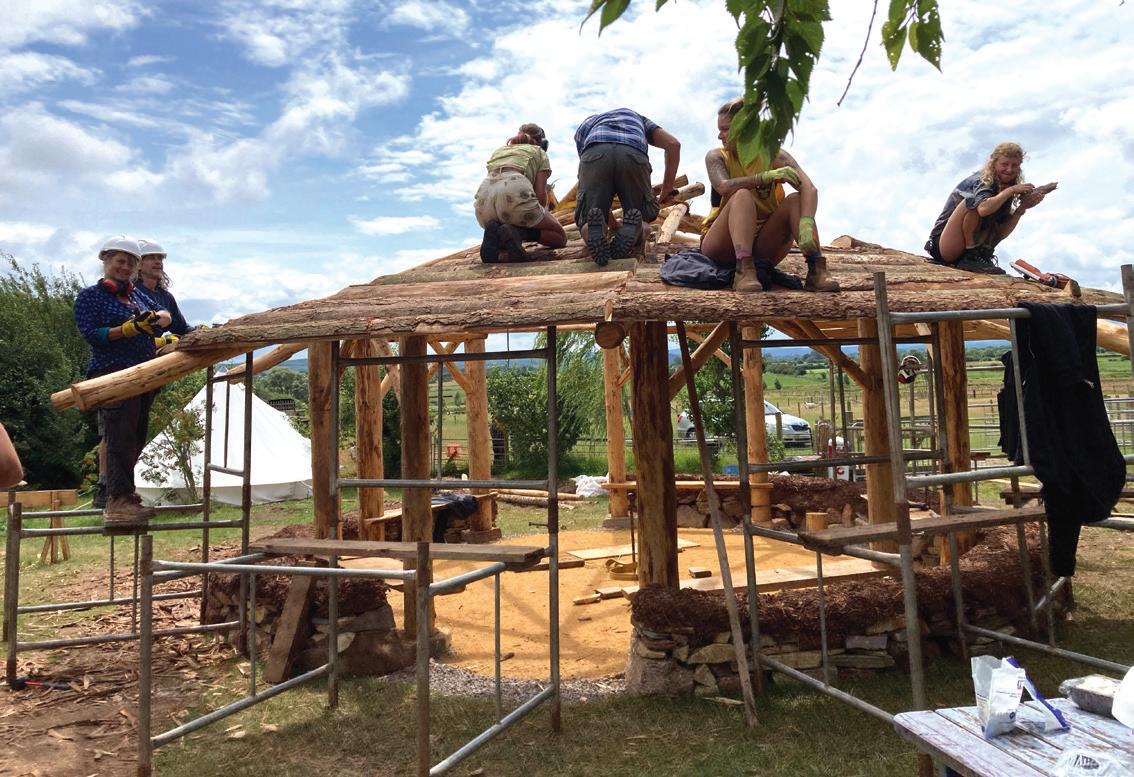
Although still not quite finished, we are planning to hold another cob day to fill in a few gaps around the windows, a lime wash render, and to add a raised wooden floor and a wood burner. However it is completed enough to store this year’s fibre on our custom made alpaca fleece sized shelving, and we have held alpaca crochet and knitting workshops and BAS affiliated alpaca husbandry courses. It is also the best ever discreet viewing platform for birthing season and an ideal space for skirting our fleeces.



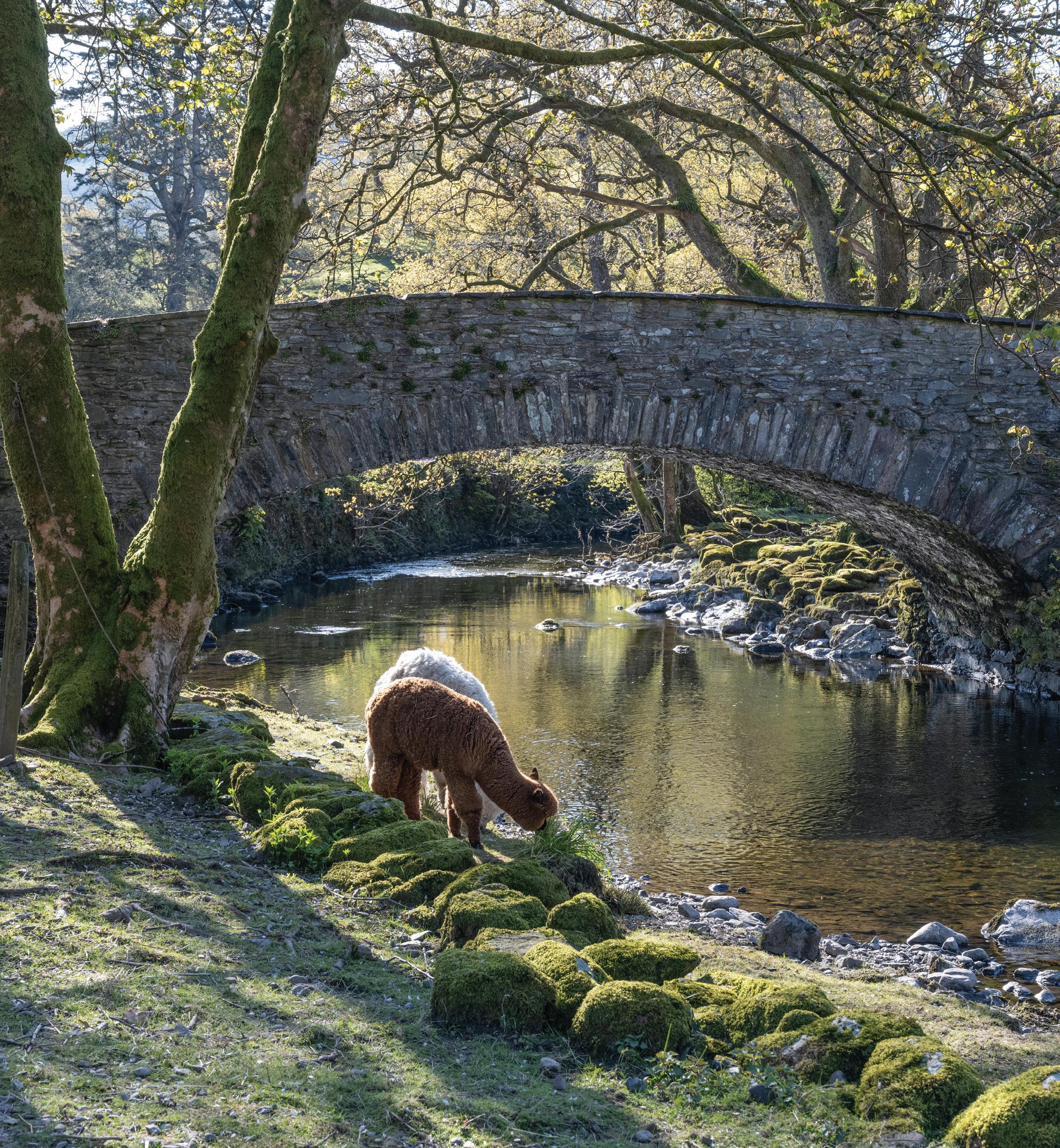

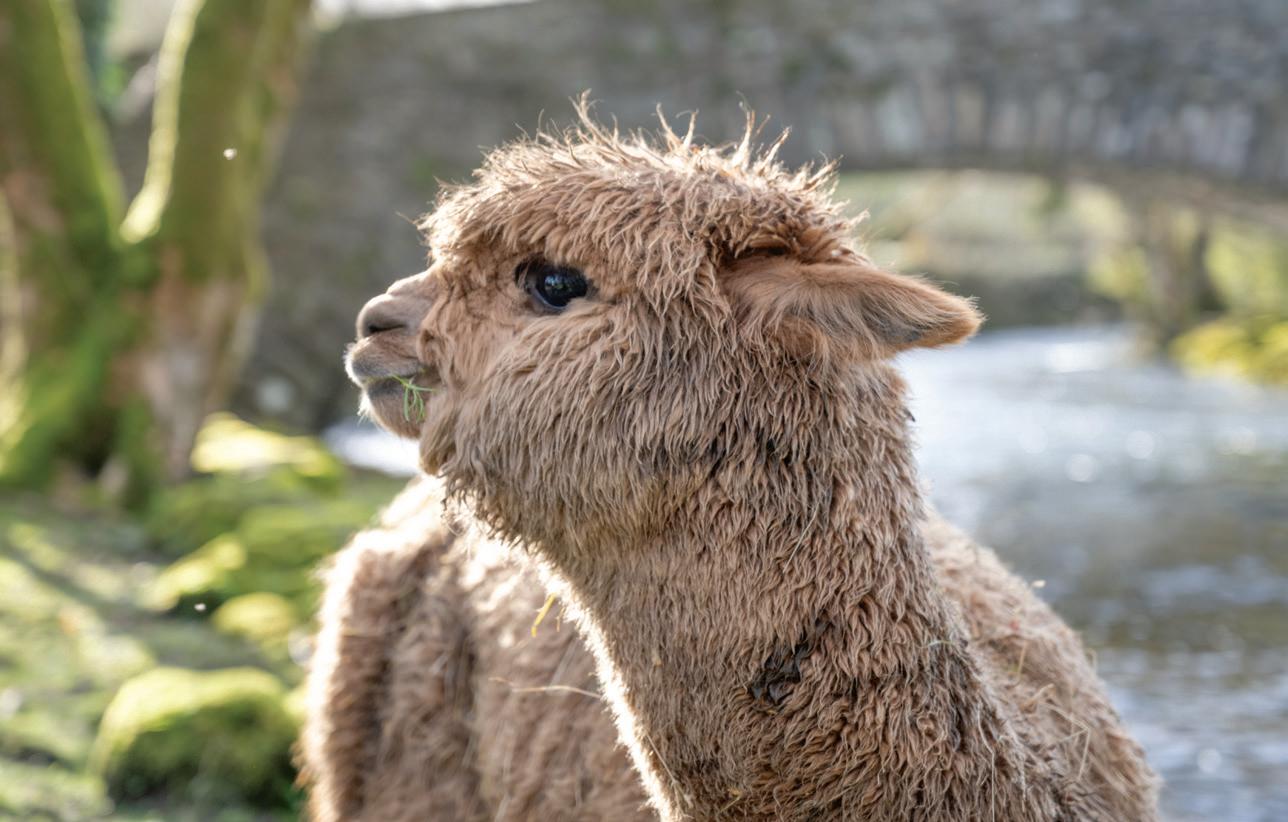
Ilive in Rydal, in the heart of the English Lake District. I became very interested in alpacas because I had heard about how good they could be around people with special needs. My daughter has severe special needs, and after her education finishes, there is not a lot available for her. Or rather, there is nothing. I wanted to create something for her and others like her, and alpacas were to be a part of it.
I took an alpaca husbandry course and was recommended to an excellent breeder from whom I bought five beautiful pet boys. They arrived at the beginning of December 2023 in immaculate condition.
The problem was the endless rain and the field shelter. They had grown up in big, light, airy barns that they could bolt into at the slightest drop of rain. Now they were presented with a dark cave with scary creatures lurking inside.
So I lit the cave, fed them in there, and turfed out the little pair of bantams who hid in the corner. Success... of a sort. The shelter became a good place for a poo – at least a step in the right direction. Eventually, it became a chosen resting place. Hallelujah. But in the meantime, it had rained endlessly.
In February, I noticed one of the alpacas, Arnold, a beautiful white boy, had an area of discoloured fleece on his rump.
The vet was called out. It was diagnosed as rain scald, and he was given a course of penicillin. I was then required to wash the area in medicated shampoo daily, dry him with a hairdryer, clip out the lumps, and then apply Cyclo (Blue) spray where the lumps had been removed. He looked like he had a dose of Smurf measles on his bottom. Suddenly, I wished I lived on a remote island.
The field shelter was built on the flattest area of the land. The land is some five feet below the level of the pavement, which runs on the other side of the wall. If you are on the pavement, you can look down onto the field shelter and the pen and watch what is happening there. So, that is what the hundreds of people passing by like to do.
There is something mortifying about being a novice, dealing with an afflicted animal, having to force the animal to sustain treatment it does not like, and coping with the ensuing behaviour with dozens of observers photographing and videoing you.
Paradise is relative, and I have learned to get up earlier than everyone else.
"And you are?"
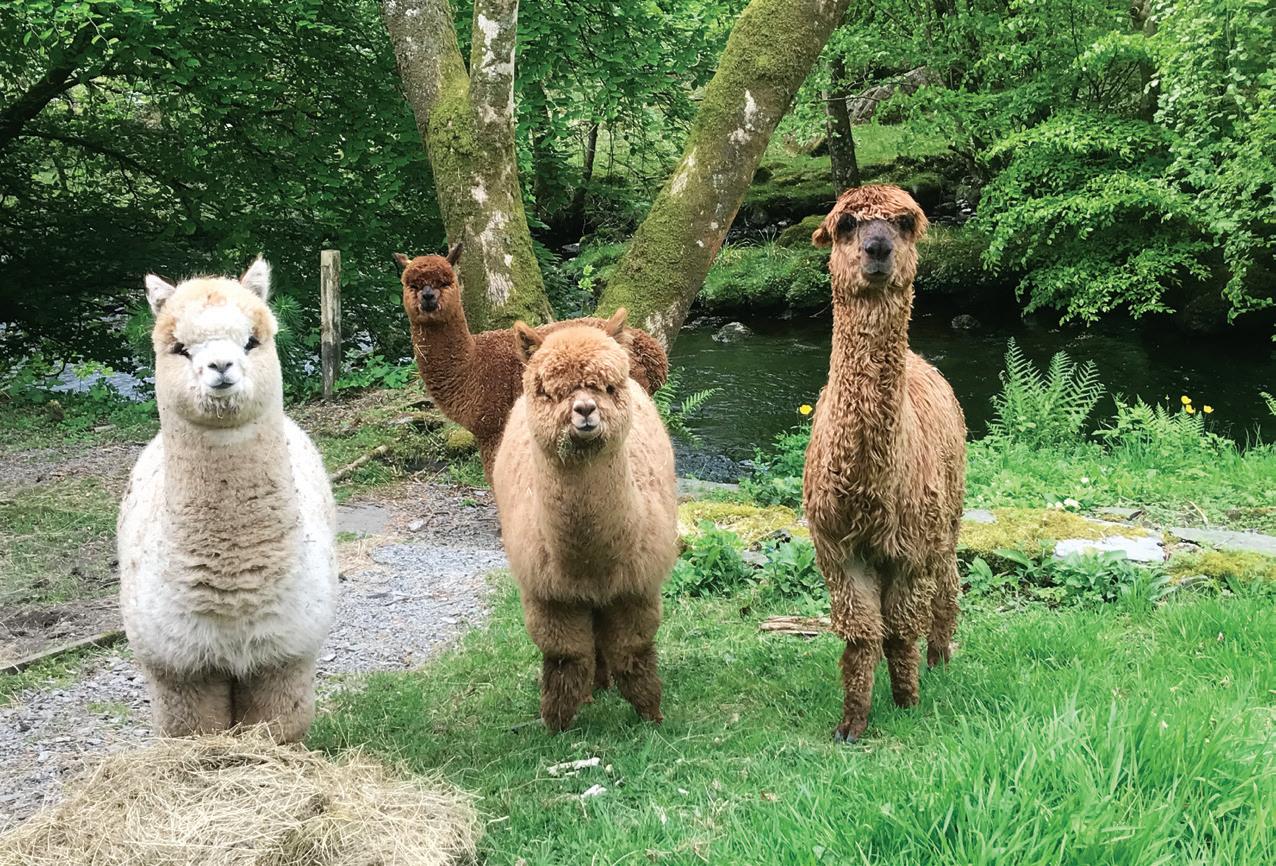


and

Penny
Wylie, owner of Yew Tree Alpacas,
explains how customer research has given them valuable insights to their business.

The alpaca activities side of the business here at Yew Tree Alpacas, operates just for the spring and summer season April to September, with 80% of the events being alpaca walks. We are not an open farm, everything is pre booked online for fixed dates throughout the season, up to 10 alpacas per walk. We also have bespoke group events – eight or more people can book mutually agreed dates for either walks or alpaca adventures.
2024 is our seventh year running alpaca walks, although we have been welcoming the general public since 2014 on group visits for alpaca adventures (talk, meet and feed the alpacas followed by homemade tea afterwards) e.g WI visits, hen parties, children’s parties.
Over this time we have developed our walks concurrently with our retail offer. Although retail is very much secondary to the walks in the summer months, it adds to the overall customer experience at the end of each walk.
An important part of developing the walks part of the business has been obtaining feedback from customers after they have completed their walk.
The research has been very useful in gaining insight into the relative importance of different aspects of the visit; the initial talk, the alpaca walk, the feed and photo opportunities or the food. It has also informed our pricing – are we offering value for money in the eyes of our customers?
Other important insights have involved understanding how customers heard of Yew Tree Alpacas and the motivation behind booking an alpaca walk, as well as why they decided to book with Yew Tree.
In 2022 we completed research with 329 customers during the spring and summer months. One of the surprising but very useful insights was the fact that when asked what aspects prompted them to book a walk (customers were given a list of options, any relevant to be ticked). Being an alpaca lover was well down the list of factors, only 27% of people chose ‘we love alpacas’
as one of the aspects, whereas the most frequently selected was ‘special occasion’ at 47% and something different to do at 32%.
This confirmed our decision to place food as a key part of our offer early on, soon after starting our alpaca walking in 2017. Although there is no doubt alpaca walking is the central activity of the visit, by offering food as part of your event you are offering wider appeal and have a larger potential market by doing so. Unlike some other walking enterprises we cannot provide the option of a coffee shop on site – this would be financially unsustainable for us as our location, on a quiet country road, not in a tourist area, would preclude opportunities for additional trade to increase utilisation.
We therefore off er an all inclusive price with homemade teas and lunches which makes the event ideal for a special occasion. Ensuring we offer alpaca walking gift vouchers, either online or within a gift box ensures we can fulfil the desire for gift purchase.
When asked what aspects were important to customers when looking for a place to go alpaca walking, a range of aspects came into play (customers chose from a list of factors). We found that not surprisingly a close location was selected by the majority – cited by 85% of customers but food and drink (54%), and length of walk (55%) were given similar emphasis as price (54%).
Understanding the age profile of customers is also important as different ages may have different priorities and needs when selecting where to go and during the visit. Contrary to our initial expectation, that our groups would be predominantly the over 50s – it appears age is more evenly spread.
Although the single largest age group was the 50-60s at 24% of visitors, the adult age profile below 50 is evenly split; 20-30s 16%, 31-40s 15% and 41-50s 14%. The over 60s represented 24% of visitors. (Note since our walks are for 10 years and over accompanied by an adult these figures do not cover whether children are part of the group).
Getting feedback from your customers does not need to be a costly project and does not have to involve producing a questionnaire. If designing a questionnaire for customers to complete after the walk is not your thing or not feasible then just a few small things can make a big help
Most alpaca owners running walks or events have an online booking facility, the simple addition of a question onto the booking form asking where they heard of your farm is one of the simplest and easiest ways of understanding if its your social media advertising, Google, word of mouth or some other aspect which brings customers to you. Alternatively when the customers arrive and you are booking them in, have two columns on your sheet to write in this information and also ask what prompted them to book with you.
Assuming you have printing facilities, you can print up a basic list of questions and give a sheet to customers at the end of your walk. Not only will you get some indication of what customers think of the experience, key insights for designing your off er and perceptions of any ideas you may have for taking your business forward can be tested in this way.
At Yew Tree we have conducted several seasons of research with customers when they have completed their walk and are enjoying the tea or lunch afterwards. We don’t ask them to add their name to assist in greater openness.
The key questions we have found very useful:
• What motivated them to book?
• How important is a love of alpaca in the decision to book?
• Age of the group and person booking
• Proportion given a voucher rather than making the decision themselves
• Evaluation of factors – price, food offer, length of walk.
We have just scratched the surface with a few ideas on gaining customer feedback but would encourage you to incorporate some aspects into your alpaca activities business. We have found it very useful in focussing our off er to ensure that all customers have a thoroughly enjoyable and memorable experience at Yew Tree Alpacas. This is evident through the large number of customers who come via personal recommendation and others who bring different friends and family from year to year.
Yew Tree Alpacas currently have a herd of 48 alpacas – a mix of breeding females and boys many of whom are trained for alpaca walking, plus yearlings born 2023.
Our alpaca business covers three parts, with alpaca walking and alpaca retail being the main focus, complemented by breeding between 5 and 10 alpacas each year. We typically like to keep our herd to smaller than this so are looking to reduce herd size to around 35 over the next 12 months to reduce work load.
We bought our first alpacas in 2009 – four girls from two local breeders. We had intended to be hobby breeders but similar to many farms have developed a rural business around the herd. Our alpaca walking, started in 2017, enabled us to grow the business to more than just a hobby. The walking is concentrated on the months of April to September, with the focus on retail from the end of October to Christmas. During the walking season the retail off er adds value to the alpaca activities side of the business as visitors are able to browse buy from our two shop areas after their walk.
Throughout the summer season we also have bespoke group visits to Yew Tree for groups of 8+. These range from corporate well being, care homes and hen parties. All events are on site, we don’t take the alpacas to outside locations/events except the occasional wedding.
paper-plane www.yewtreealpacas.co.uk �� 01763 848257

Customers enjoying tea on the lawn after a walk

Cria are a popular attraction at the end of a walk
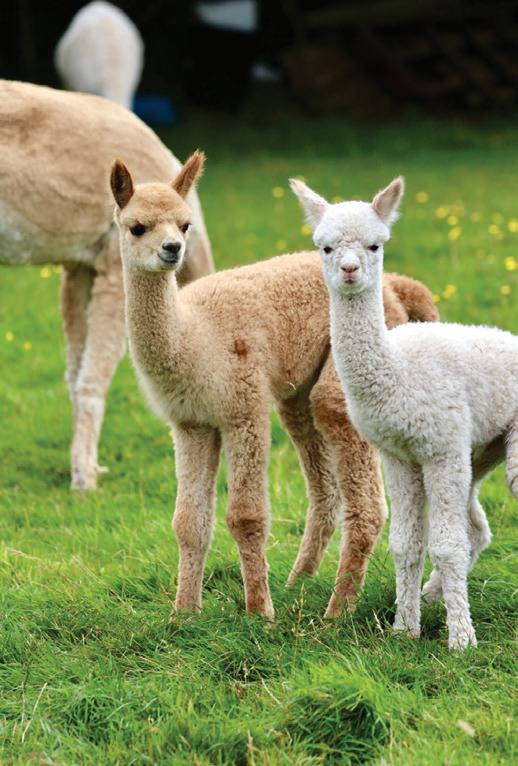
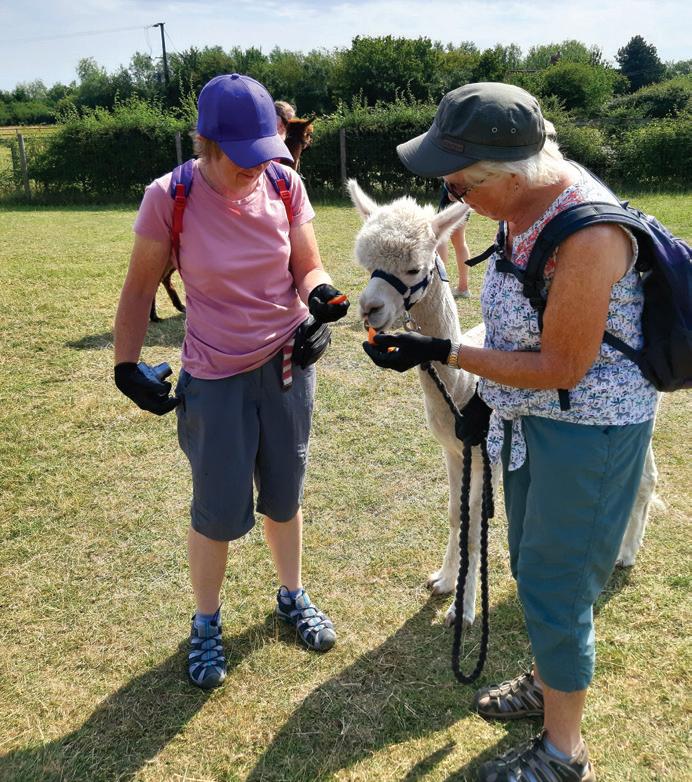
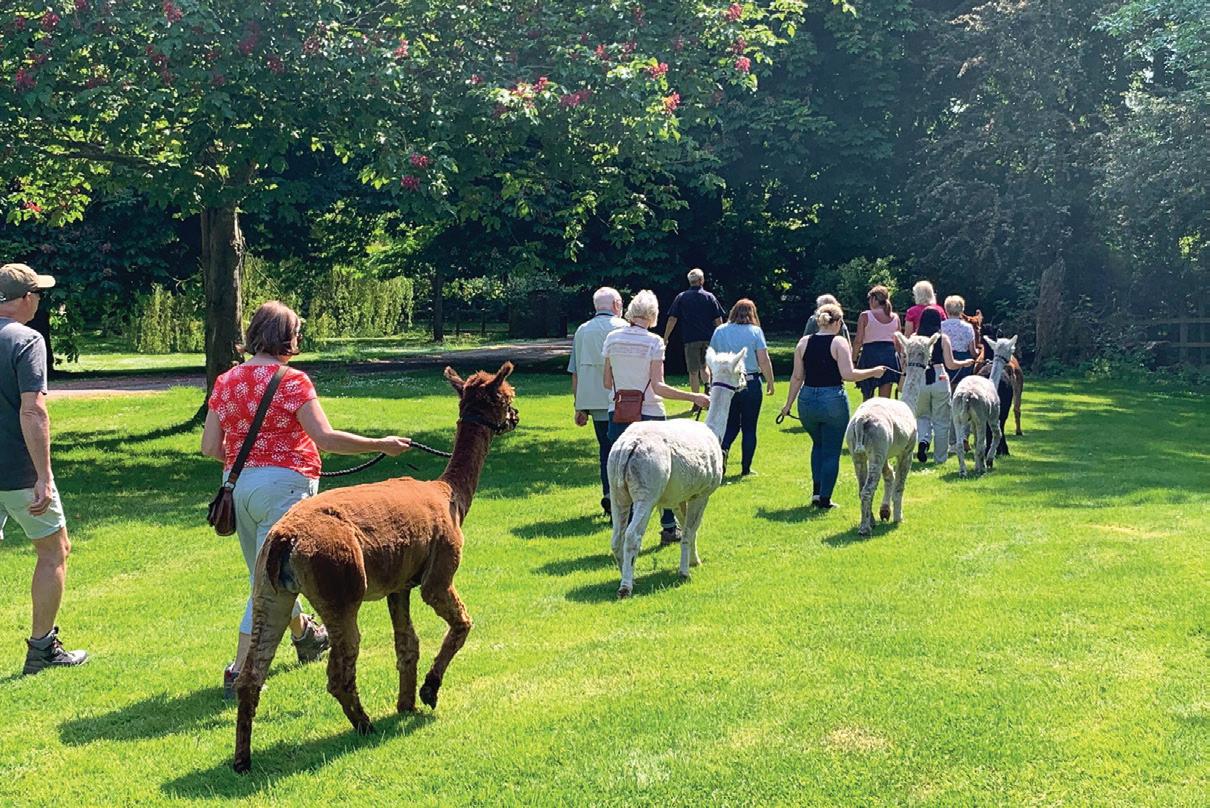
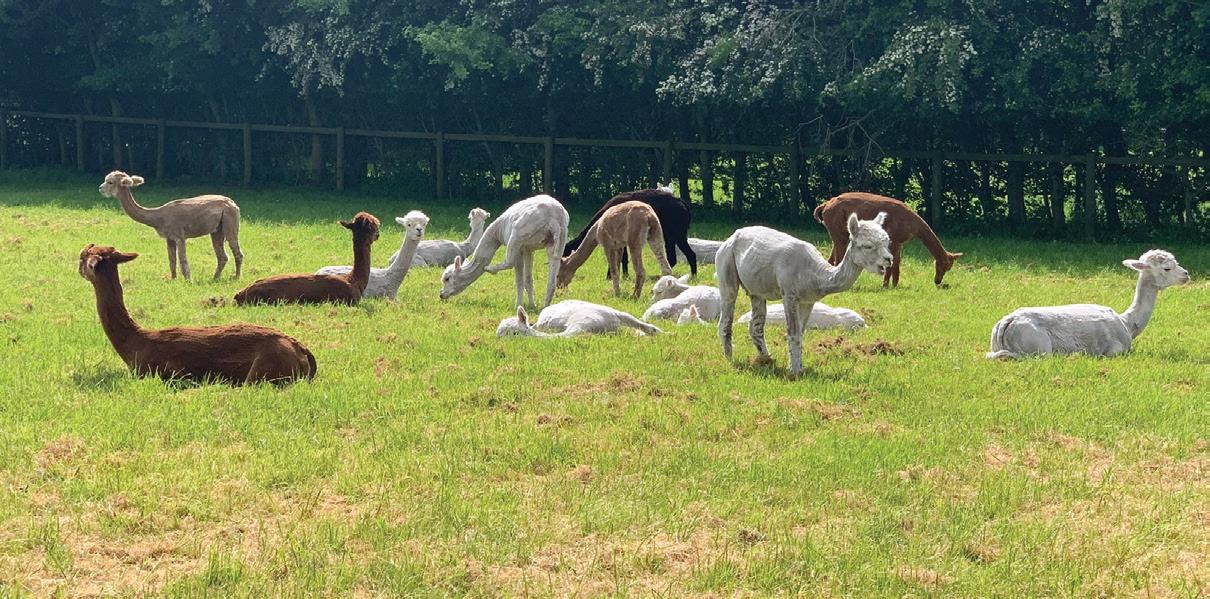
Over three days during February, around 100 people from 14 different countries around the world tuned in to the first Global Online Camelid Conference for owners to hear all about their favourite subject – camelids!
By Claire E Whitehead
Why did I put this opportunity together? At The Alpaca Vet, we believe in caring for camelids. We believe that every camelid deserves the best quality care from their owners and vets, and our vision is to ensure that no camelid suffers from a lack of knowledge on the part of either their owners or vets. Providing an accessible world-class learning opportunity for owners globally at a budget price helps us achieve that vision. There are now a good number of vets around the world with incredible expertise and interest in our wonderful camelid species. It would cost a fortune to get them all together physically in one place, and another fortune for all the owners to get there. So, it seemed like a fantastic opportunity to get everyone together online… Why not make the most of the technology that we’ve all become so familiar with over the last few years? This allowed owners in Australia, Canada, USA, UK, all over Europe and even Zambia and Malaysia to watch and to learn and to interact with one another. But all from the comfort of their own homes. That is, the entire investment to attend the conference was in the form of education. No travel expenses, no time wasted travelling!
Topics presented included dental disease, causes of lameness, medicines for camelids, cria care, Mycoplasma haemolamae, tetanus, small liver fluke, the unique glucose metabolism of camelids, care of geriatric camelids, reproduction, emergency care, parasite control strategies, nutrition,
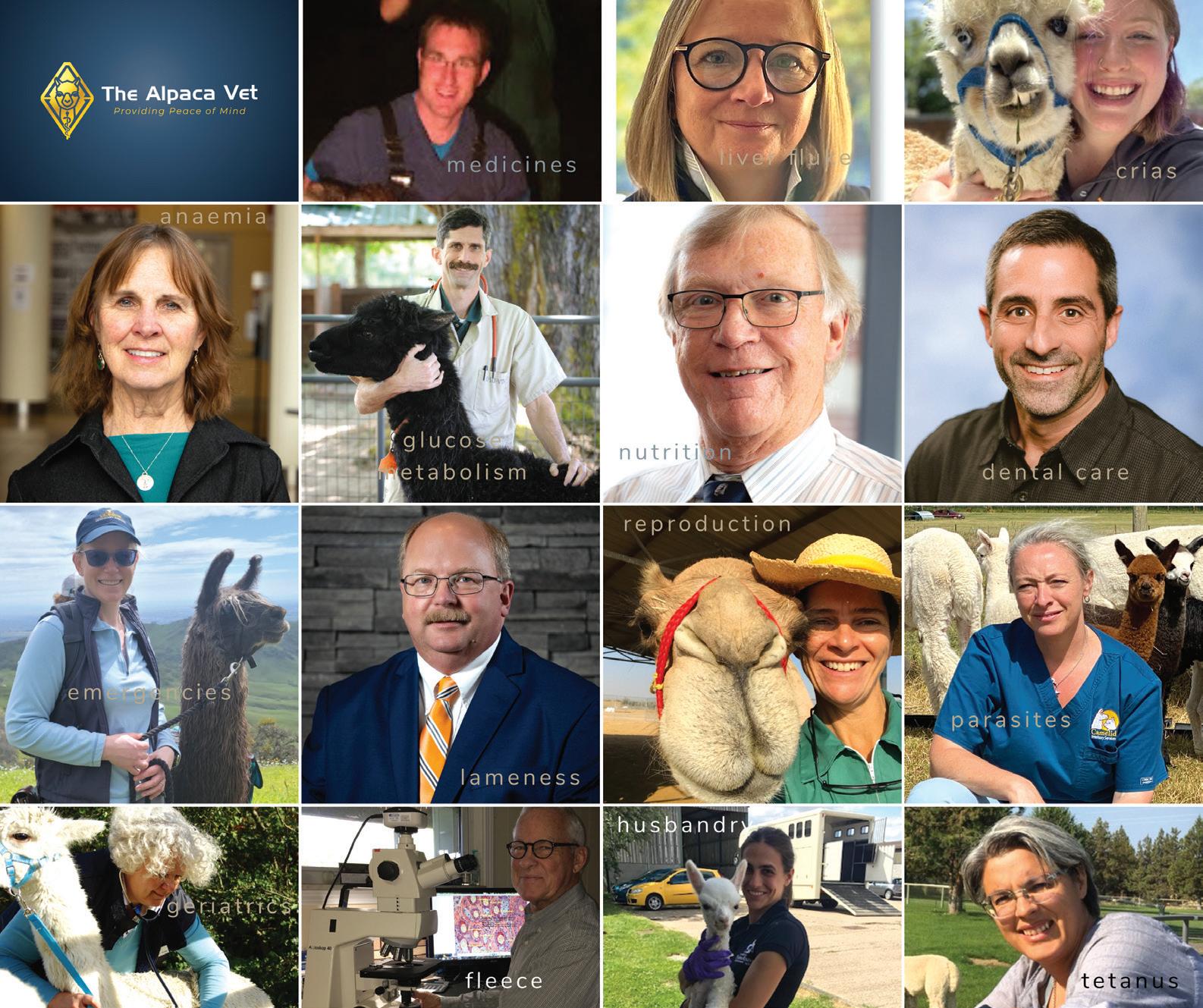
husbandry, colic and fibre quality. Speakers included international camelid legends such as Chris Cebra, David Anderson, Jane Vaughan and Bob van Saun, UK speakers Karin Mueller, Elly Po and myself with some less well known but quality speakers from around the globe. In order to permit owners in North America, Europe and Australasia to be able to join the conference live, session timings were a little different from what people might have been used to! For those in the UK, our timings were
from 8pm til midnight and 7am-9am. Although quite tiring for us (I had to have a little nap every afternoon!), it was worse for those in the Eastern US although I was impressed to see that some brave souls from the Central and Eastern time zones did join us live! You can only see what works by running something and getting feedback. Interestingly few attendees were bothered about the timings because of the access to the recordings of sessions that they couldn’t watch live. However, it may have
prevented some people from registering to join us in the first place. Since this was only the first conference, and I intend to run this again in future years, I will likely drop the morning sessions and focus on the evening sessions but run for longer and build in a break.
It was heartening to see the many amazing reviews we received, both on social media and on our course evaluations. We scored a whopping 9.4/10 average satisfaction rating (nothing below a 7/10) and the same on whether the delegates found the conference good value for money. [Attendance at the conference cost £247 +VAT including access to the recordings for a whole year.] Here is what some of the delegates had to say:
• “I am so glad I made the investment with both money and time. The organization of the whole conference was perfect. Sessions were scheduled in a manner making it easy to attend and keep focused. Each speaker covered a different topic with current information, suggestions and strategies. I am happy to have the ability to go back to the recordings and documentation for refreshers.” Mary Baxter, USA
• “This has been one of the most important conferences that I have invested in for myself as a breeder. In my time in the industry
(14 years) there has been very little shared about alpaca and where I live (Central Qld), the veterinary knowledge is very small and I do most of the husbandry and diagnosing myself before vet intervention due to distance and cost. The growing number of owner/ breeders across Australia is on the rise so it is so important to be able to tap into this level of experience. I believe sharing knowledge is key to building a strong industry and this is exactly what you have given us. I applaud you Claire and wish you well in keeping this alive and well and open to us to move forward. We grow when we understand and learn. Cheers!” Michelle Hamilton, Rosegum Alpacas, Australia
• “This was the best informational event I have ever attended. All presenters were experienced camelid veterinarians who were well prepared. The conference was well organised, ran very smoothly and participants' questions were responded to promptly. I also found it interesting to be in the company of fellow alpaca owners from around the world.” Tommie Smith, Sonoma Suri Alpacas, California, USA
• “The conference was an incredibly enjoyable and fantastic learning opportunity, with both the important fundamental areas covered and subjects a bit more specific and fascinating. Every talk was presented beautifully and


Is your relationship with your animals all you had hoped for?
How can Camelidynamics techniques help me on my alpaca journey?
Camelidynamics is an approach to and collection of methods that represent the most positive, least intrusive techniques for training and managing alpacas.
This two day handling course will change the relationship you have with your animals forever.
Understand why camelids behave the way they do and learn kind and e cient methods that are science-based, for safe handling and husbandry that’s fun.
Tell your vet that we have courses for them too.
For those interested in nding out how this approach can inform and support your human/alpaca interactions in the therapeutic arena, we are now o ering courses for owners and professionals.
Working with Alpacas in Animal Assisted Activity or Therapy.
I learned a huge amount of invaluable information, with extremely useful handouts given as well. I am really glad that I paid for the recordings, as I will definitely go through many of the talks more than once. The conference was run perfectly and I am so glad that I attended, I am sure my alpacas will be too!” Tanya Russell, UK
• “This absolutely exceeded my expectations. I thought I would enjoy some of it but it was no less than llamazing!!! It should be a must for any camelid owner no matter of skill. I am buzzing! I cannot wait to join future conferences.” Lisa Fox, Briery Hill Llamas, UK
I’m very interested to hear ideas on speakers and topics for our next conference. I’d love to know what key topics you’d find valuable, and any speakers that you’d like to hear from. If you’ve discovered an amazing speaker that you’d like to hear, and think others would enjoy, I want to hear about them! Please visit this link to give me your ideas: https://tinyurl.com/CamelidConf2025
Tentative dates for the second Global Online Camelid Conference for Owners are 23-25 January 2025. Pencil it into your diaries now and tick one Christmas present off your list for an alpacaaddicted loved one!
HANDLER COURSES: 23rd - 24th July 31st August - 1st September
ANIMAL ASSISTED ACTIVITY COURSES: Please enquire
ANIMAL ASSISTED THERAPY COURSE: 5th - 8th August
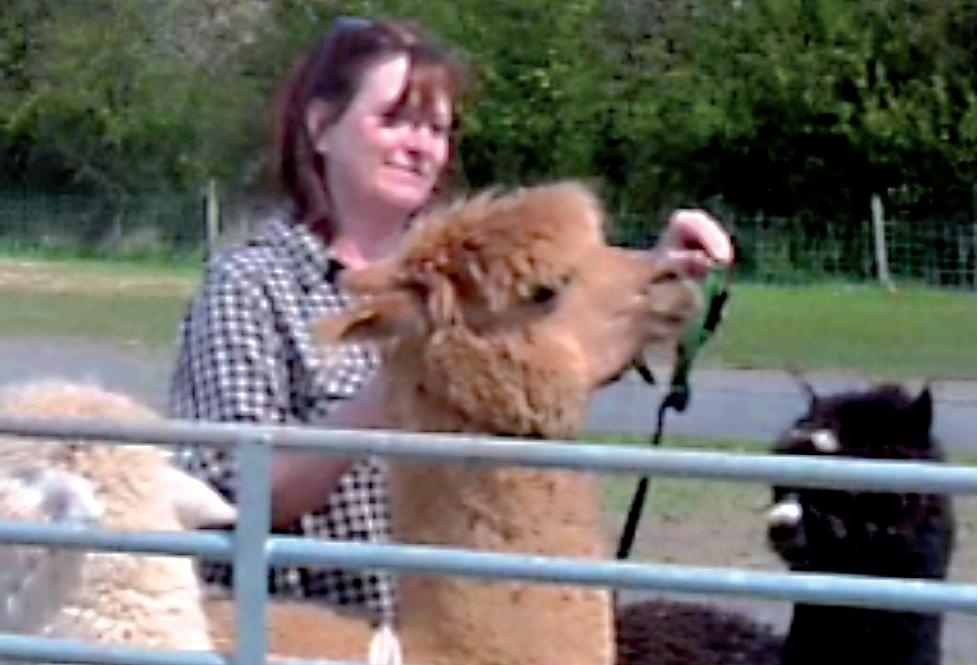

For more details and to book your places go to www.SimplyAlpaca.co.uk








The Dorset County Show celebrates rural life at the end of harvest on 7-8 September. This year, for the first time, alpacas are included and we’d love you to join us there.
The South West Alpaca Group and team that brought you the Somerset County Show, which is sadly not running in 2024, are really excited to have been invited to be part of such a thriving and busy agricultural show.
Alongside the cattle, pigs, sheep, goats, horses and cavies (otherwise known as guinea pigs) there are activities and demonstrations as varied as the Dorset Axemen, Scurry Racing, showjumping, the IMPs Motorcycle Display Team, the vintage tractor parade and coaching marathon. As you would expect there also major horticulture, homecraft and food and drink features and demonstrations of many rural activities by experts such as blacksmiths, farriers and sheep shearers – to name but a few.
It's an established and vibrant show and a major gathering for all who love the countryside which attracts around 60,000 visitors every year. This makes it a tremendous opportunity for us to showcase our wonderful alpacas and promote the alpaca industry and lifestyle.


Please do get in touch if you have any questions and we look forward to seeing you there. All enquiries and questions to Show Organiser: Tim Hey, Inca Alpaca ✉ timhey@incaalpaca.co.uk �� 07875 532827


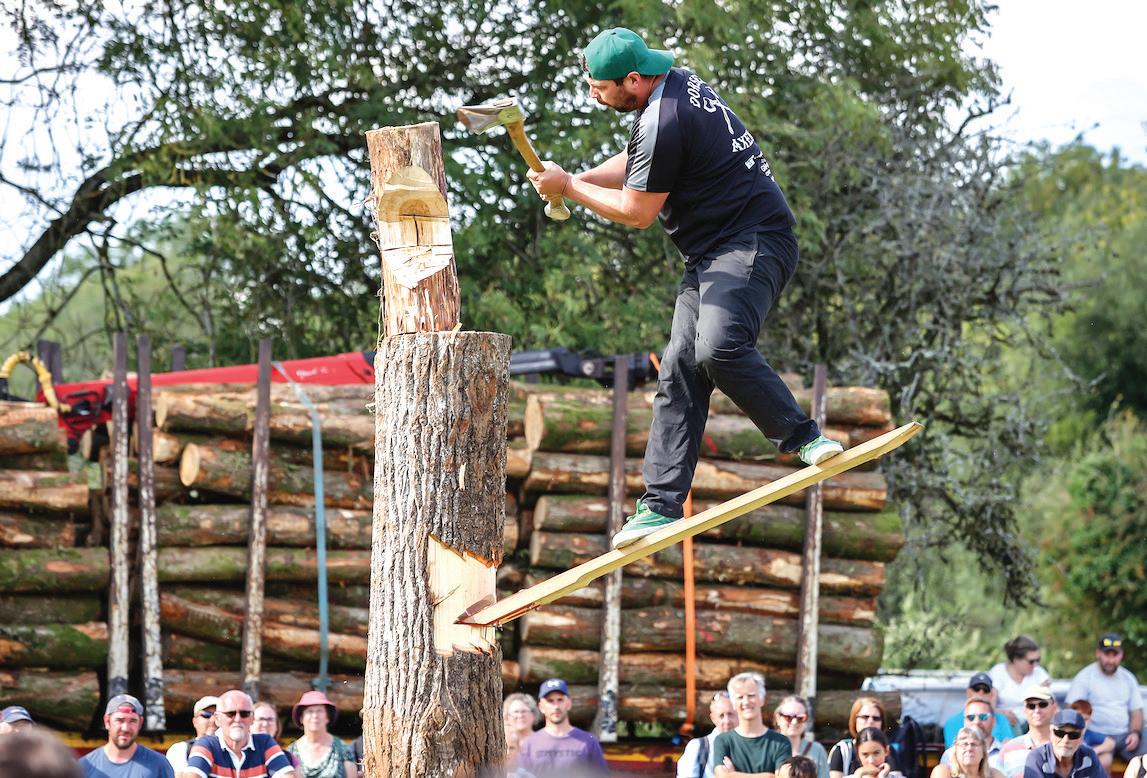

James Cox, the Show Organiser said: “The County Show is delighted to welcome the South West Alpaca Group to the Show. Here at Dorset County we are all about celebrating and showcasing Agriculture and Rural Life so the introduction of Alpaca competitions is something we look forward to supporting. The Alpaca Zone will further educate visitors on these wonderful animals, and they can even see some of their products made from alpaca fleece.”
There are two competitions taking place as part of the Dorset County Show.
The Halter Show runs over Saturday and Sunday and will be judged by British Alpaca Society Judge Nick Harrington-Smith who will be assessing conformation and fleece quality.
After competing to be a Colour Champion against other alpacas of the same type, colour and sex, the Supreme Champion line ups on Sunday will result in one Suri and one Huacaya being awarded the coveted title of Supreme Champion – a spectacle not to be missed! All exhibitors are welcome and we promise you an extra warm welcome and a helping hand if it’s your first time showing.
Entries are open via the BAS Pedigree Registry on Grassroots from 1 July to 16 August or until we are full. We aim to have around 160 alpacas in the Halter Show and award unique ribbons for all those who are placed in a class in addition to championship sashes. At the end of the show, we will award trophies to the best small, medium and large breeders in recognition of their achievements.
The Fleece Show competition will already have been judged on 25 August so that the winning fleeces can be on display at the show, allowing everyone to see what the very best fleeces look like. This competition assesses the shorn fleece and British Alpaca Society Judge Jay Holland will be focusing purely on which fleeces would make the very finest products. Entries for the Fleece Show are open via the BAS Pedigree Registry on Grassroots from 1-28 July and we can promise you excellent feedback to help you inform your breeding programme.
Across both days, there are also demonstrations and activities with alpacas that all the family can enjoy.
In the ring, everyone can learn more about alpacas with our masterclasses:
• Introduction to alpacas – the different types, what they are for and what good looks like
• Caring for alpacas – what alpacas need to live a happy healthy life and everyday husbandry
• Alpaca ventures – different ways alpacas can feature in your lifestyle or commercial business – from using their fleece to trekking, therapy and weddings.
Outside the ring, activities for the whole family will be running throughout the show:
• Visit the Alpaca Photo Booth and grab a selfie with your favourite alpacas
• Unleash your creative side at the Alpaca Art table – create your own alpaca picture using real fleece
• Meet the breeders –alpaca owners will be delighted to share their experience of keeping these fabulous animals
• Shop from the variety of stalls with alpaca products.
If you’d like to join the Alpaca Zone by taking a stall, promoting your alpaca business, demonstrating spinning, weaving or knitting with alpaca fleece or helping out with any of the planned activities we’d love to hear from you.
The organising team are committed to making the experience for all exhibitors at the show really first class. We have great facilities and refreshments available throughout the show and for anyone who’d like to stay on the showground with a campervan or tent, we have a dedicated area adjacent to the alpaca marquees. Our parking arrangements are ideal and we are not subject to timed movement restrictions due to the location of our feature on the showground.

At the Devon County Show, Apple Vale Pixie was awarded Champion White Female, and the week before she was awarded Reserve Champion White Female at The North Somerset Show.
Sired by Popham Augustus (S: Popham Havengore) and owned by Apple Vale Alpacas. The alpaca's Dam was Apple Vale Liberty (S: Hanley Hall Polaris, Alpha Alpacas).
Dave Bearman said: "We have been breeding alpacas for nearly 16 years at what might be called a 'micro-herd' level, we typically have a maximum of 15 alpacas – we have tried to make breeding decisions to constantly improve the herd.
"We have aimed for three to four cria per year, but sometimes pregnancies haven't always carried, and sometimes you have mainly males, so that progress can easily falter for a couple of years, and then things might 'click', the stars align, and you make progress."














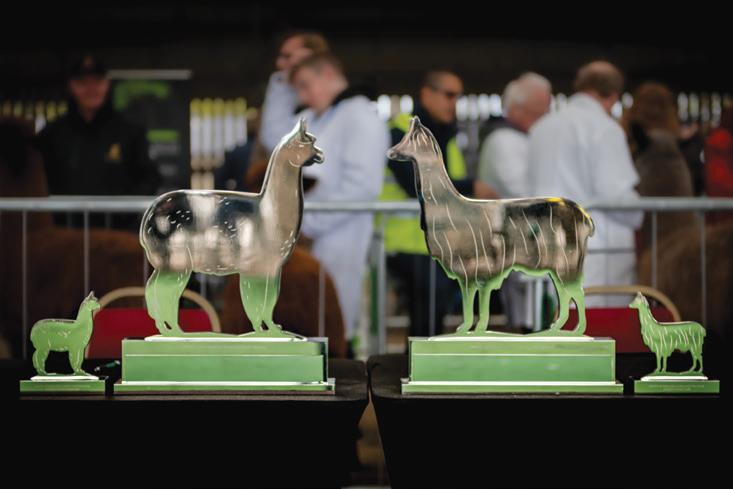
The South of England Alpaca Halter Show (SoE) takes place at the South of England Agricultural Showground at their huge Spring Live County Show. The Ardingly South of England Showground is a fantastic venue and since taking over the running of the halter show, we have now forged a truly positive relationship with the Spring Live committee and the ability for British alpacas to be showcased right in the centre of this prestigious show. Following on from the success of the now, totally revamped South of England Alpaca Halter Show, we were delighted to be able to secure a new building in its entirety for the 2024 show – The Robins Building. Being an agricultural show means that there are hundreds of stalls and activities for families to enjoy all around the vast showground, so we are guaranteed brilliant opportunities to interact with the public. Of course, the SoE Alpaca Halter Show is run to BAS show rules and this year the named entries reached capacity in just 12 days with 200 alpacas, shared amongst 25 breeders. Known for being friendly and relaxed, the show caters for all, from seasoned exhibitors, to first timers and the Saturday evening show dinner at The Bolney Stage ensured that the camaraderie and downtime from showing continued as we all relaxed with a glass, or two of something and enjoyed an excellent meal after a hectic day’s showing. The laughter and stories rippled

round the various tables and it seemed to be marked down by all as another successful evening.
Gary Naish once again took command of the ring and we were thrilled to have Paul Wills as our SoE Chief Steward. The now committed team of stewards, did a sterling job marshalling exhibitors to the full-sized collecting ring and Judge Rob Bettinson ensured that the public were fully engaged with the show as he turned to address the seated and standing crowds in addition to the exhibitors. During the lunch break, hoards of general public streamed through the Robins Building to chat with the breeders and meet the alpacas.
Staging an alpaca show in the centre of the showground does have some drawbacks, as of course we do have to adhere to the strict showground rules, particularly on vehicle and animal movements, but the benefits of the joint venture are manifold.
The rosettes and ribbons were presented throughout the two-day show by sponsors wherever possible and the programmes were gathered up by the public who were keen to read all about 2024 being the Year of The Camelid. The Supreme trophies, so kindly donated and sponsored by Houghton Hall Alpacas, sparkled on the table, alongside the new for 2024, Judge's Choice trophies and our congratulations this year went to Lane House who scooped both Supreme Huacaya and Supreme Suri and the Judge’s Choice Huacaya




trophy, alongside Backyard Alpacas who took the Judge's Choice Suri trophy. The full results are listed on the BAS website, or on your Grassroots records.
This week at the Spring Live committee meeting, we were delighted to hear confirmation after the feedback from the South of England Spring Live Show that for the third year running, the Alpaca Show had been the favourite for the public! It has been our mission as show organisers, since taking over the reins in 2022 to bring the alpaca industry and the public together at Spring Live in keeping with the South of England Agricultural Society’s mission to educate.
Plans are already underway for 2025 to expand this mission and showcase not only the alpacas, but what can be done with their fabulous fleeces. If you would like to take a stand in the Alpaca Village marquee, we would love to hear from you. It maybe that you don’t enter your alpacas into shows but would like to showcase your products, or business, or maybe you do both? Either way do get in touch and make a note in your diary now of this fantastic show opportunity. Next year we are delighted to reveal that Barbara Hetherington will be our esteemed judge and Barbara has already assured us that she too will be keen to engage the audience as she oral reasons and judges the Spring Live Show 2025 on Saturday 26 April to Sunday 27 April.
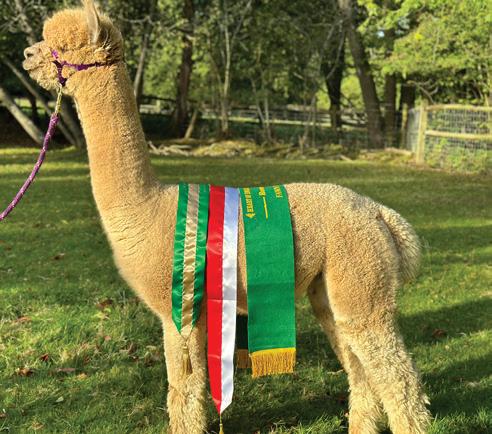

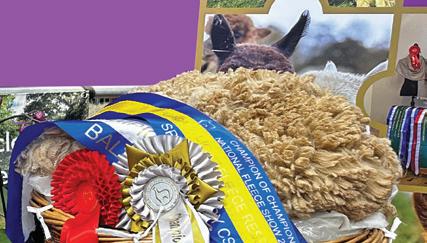
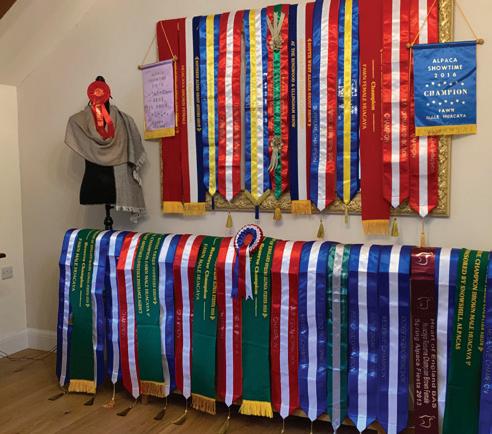

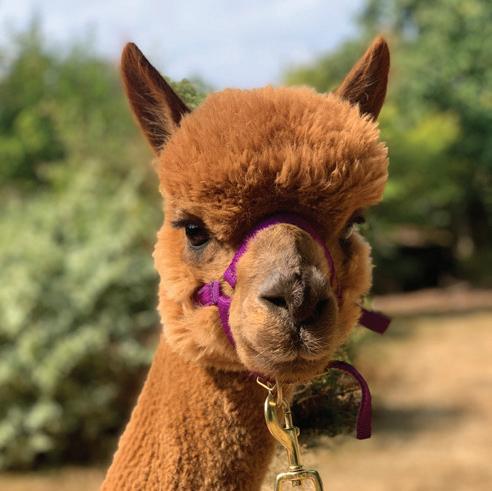
Suri

The Northumberland Alpaca Championship took place as part of the North County Show at Stocksfield on 25 May 2024. Run by the North East and Borders Alpaca Group (NEBAG), the show was organised by Chief Stewards Rachel Vaclik and Paul Vaclik (Munaycha Alpacas). After heavy downpours the day before, we were blessed once again with warm sunshine and bright blue skies allowing the show to take place outside, which was a delight (and relief!) for the organisers, judge and the 110 alpacas taking part.
We were very pleased to welcome Barbara Hetherington to Northumberland to judge this year, along with apprentice judge, Kim Murray. Barbara gave a very high standard of judging and all the exhibitors benefited from her vast experience. Her verbal reasoning was very clear, detailed and informative. Under her guidance Kim also gave great feedback and they both not only educated the exhibitors but kept the crowds engaged throughout the day.
The show continues to attract a large number of entrants, this year from Yorkshire, Nottinghamshire and Scotland as well as from the local area. We always love attracting new breeders – this year we welcomed five new herds, including some who had never showed before.
We would like to give a huge thank you to all our valued sponsors who continue to support the show and help to make it a continued success. We would also like to thank those who helped prior to the show and on the actual show day, to ensure the whole day ran smoothly and efficiently.
As always, the entries brought an extremely high standard across
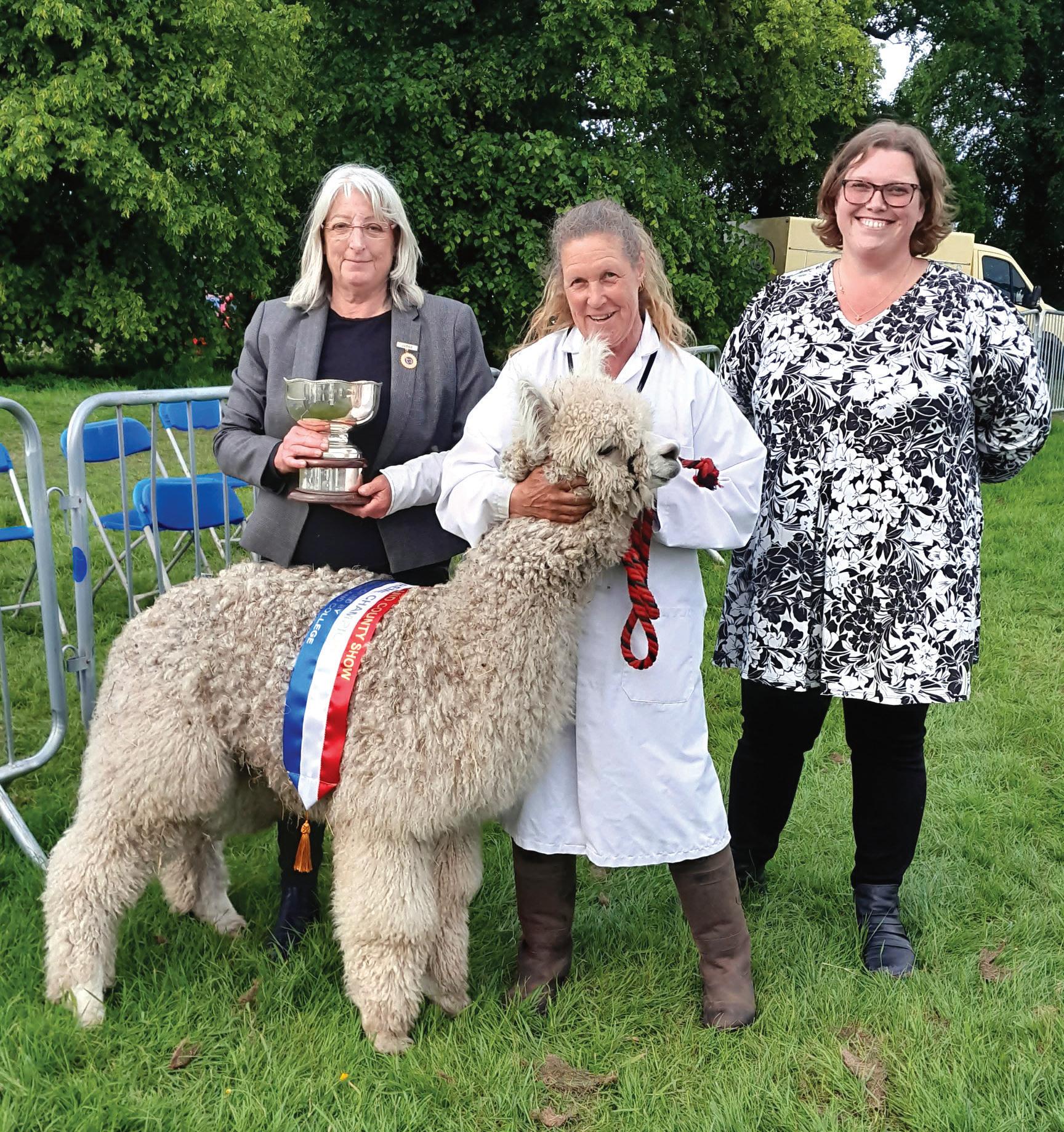
the board, both Huacaya and Suri and made for a really interesting and competitive show. Champions came from within and outside the region, for instance Barkston Alpacas, Blackberry Alpacas, Fellside Alpacas, and King Garth Alpacas. We also had a lot of interest in the progeny classes and held both Sires and Dam progeny for the first time in a few years.
Supreme Champion, kindly sponsored by Northumberland College was awarded to Chestnut Farm Alpacas for their Junior white male, Chestnut Farm Mr Whiteley, who were presented with the Vicki Ridley Memorial Trophy. Reserve Supreme Champion, was awarded to Fangdale Alpacas for their Junior light male, Fangdale Arlo and the Suri Supreme, kindly sponsored by Aylswood Alpacas was awarded to North West Suri for their Intermediate light male, North West Suri Gariboldi. The Best Northumbrian was awarded to Barnacre Alpacas for their Intermediate grey female, Barnacre Lola. For a full list of results please see the BAS Website.
The Young Handlers class returned again this year and continued to be a delight for both participants and audience alike. Five young “alpaca handlers of the future”, of various ages, each answered questions about alpacas and penned their animal with ease. They performed exceptionally well and were proud to show off their handling skills. We are firm believers that the alpaca breeders of the future should be encouraged at an early age and the enthusiasm and skills shown on the day were praiseworthy.
Despite the poor weather a few days before, the show itself still took a large number of visitors (just over 20,000) and as always, the alpaca section drew an immense interest from the public. This year we introduced two new features to the section:
1. What’s the difference between a llama and an alpaca?
We were pleased to invite Phantom the llama for the day (kindly brought by Stony Pasture) who, as part of the public educational area, helped to answer the age old question of “what's the difference between an alpaca and a llama?” In addition, during the lunch break, we introduced a Huacaya, Suri and Llama into the main ring and presented a show and tell. This was a huge draw for the crowds who were able to get up close to all three animals and received a great reception. A big thank you to those who made this possible.
2. Sign language interpreter. Building on our commitment to accessibility, we introduced a sign language interpreter to the section. This got a great response from all members of the public and it was great to see the interaction between those members of the crowd who were hard of hearing. We would like to thank Monica Wallace for kindly giving up her time and giving us guidance on the day and we are looking forward to working with the Northumberland show committee next year to roll this out throughout the show. We also continued to provide signage and information in Braille, as well as tactile exhibits such as fleece.
We always want to focus on both entertaining and educating the public as this is very important to us and this year was no exception. We had educational banners, examples of fleece, and it was great to welcome back the Tynedale Guild of Spinners who are always a highlight for the public and help demonstrate the stages of animal, fleece, yarn and product. The extra marquee space provided an ideal spot for NEBAG members to sell their alpaca products which was met with a lot of interest, generating a steady flow of customers.
It was great to be back in the tent once more. It is one of our favourite places to be, catching up with old friends and sharing experiences and knowledge with friends and fellow breeders. That, along with the fantastic weather made for a brilliant day on what is one of the most prestigious shows of the North East alpaca calendar. As show organisers we are looking forward to a little break over the summer, but we are always thinking of ways to make the show bigger and better and planning will soon begin for 2025. We would love to see you there so keep an eye on the BAS website and newsletter for details around the beginning of March 2025 when entries will open.



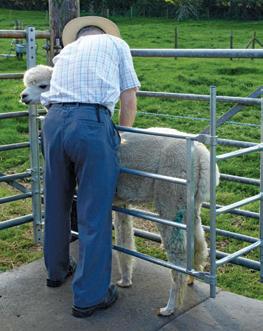



From £50.49 +VAT each Alpaca Equipment:
Basic Easy-Pen £318.00 + VAT Aluminium Hurdles 4ft, 6ft and 8ft wide
Ballymac Alpaca is a family run Alpaca farm headed up by husband and wife team Aaron and Lesley along with their little helpers. Situated in Gilford, Co. Armagh, Northern Ireland we are very proud to breed every colour of Huacaya alpacas including appaloosas. Our multiple prize winning herd consists of carefully chosen genetics from around the world all of which are British Alpaca Society (BAS) registered. We are avid members of the BAS, Northern Ireland Alpaca Group and the AAI Group.

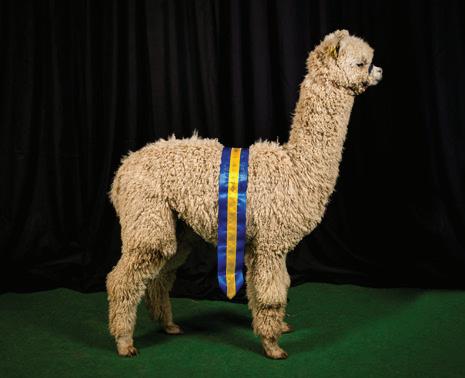
This year’s HoEAG Fiesta took place at Bury Farm Equestrian Village on 12-14 April 2024, with the usual excellent lighting of the show ring and seating for spectators and the public.

Julia Corrigan-Stuart of CS Alpacas was our BAS Judge, taking on the challenge of judging in the region of 270 alpacas.
Julia’s oral reasonings were both informative and interesting despite her receiving a few kicks along the way!
Gary Naish, was once again our Ring Steward, keeping both alpacas and handlers under control – thank you.
Our Champion and Reserve pen was in constant use throughout the weekend, giving exhibitors the opportunity to get up close and personal with the alpacas who had received the top positions, an opportunity not to be missed.
This year for the Junior Handler competition, which was kindly judged by Shirley Bettinson, we had three entries. All proved to be extremely capable handling their alpacas through the obstacles and also very knowledgeable about alpacas in general. Our Junior Handler trophy this year went to Rosie Payne of West Wight Alpacas.
Our annual Craft Competition, sponsored by Lulu Oliver of Softly Softly Alpacas, run by Liz Berry of Fullwood Alpacas and judged by Shirley Bettinson from Toft Alpacas, was again a great success. The Judge’s Challenge Trophy, kindly donated by Kerry Lord, being 'A Household Item' this year, was won by Coralie Featherstone, Featherwood Alpacas. Hand Spun Yarn was won by Moat Farm Alpacas and Mill Spun Yarn by Castlings Alpacas; Best Craft Item, Wearable and Toy first place rosettes were won by Ashtonelle Alpacas and first place in Woven Scarves went to Kasa Lake Alpacas; and the Miscellaneous section was won by Rowen Barn Alpacas.
Our thanks also go to Cypher Crystal for continuing to provide the Colour Champion trophies. Huge thanks go to Ingrid Weel, photographer extraordinaire – check out her website www.ingridweel.com for all the Fiesta photographs. Last, but definitely not least, a massive thank you to our resident commentator, Rob Bettinson, who kept everyone informed and entertained over the whole weekend.

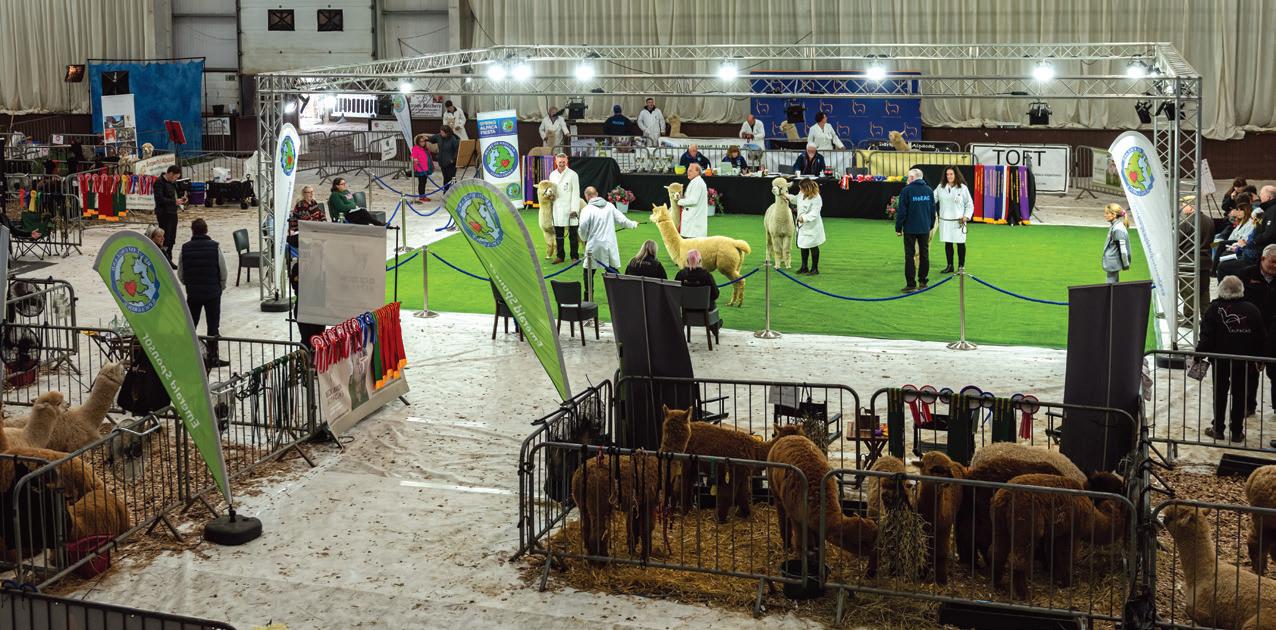
Supreme Huacaya Champion
Beck Brow Centre Stage
Supreme Suri Champion
Wellow Hip Hip Hooray
Best British Huacaya Beck Brow Centre Stage
Best British Suri
Wellow Hip Hip Hooray
Huacaya Judges Choice
Bozedown Nerisa
Suri Judges Choice North West Suri Gladston
The Chairman’s Perpetual Trophy, awarded for the most successful HoEAG member Bozedown Alpacas
Large Breeders Award – Sponsored by Towcester Veterinary Centre Bozedown Alpacas
Medium Breeders Award – Sponsored by Homestead Farm Supplies West Wight Alpacas
Small Breeders Award – Sponsored by Kasa Lake Alpaca Spring Farm Alpacas
We’d like to say a huge thank you to all our Gem Sponsors: Emerald sponsors: Artwork Alpacas and Beck Brow Alpacas; Sapphire sponsors: Brillbury Alpacas, Lime Tree Alpacas, Snowshill Alpacas and Toft Alpacas; Ruby Sponsors: Capital Alpacas, Castlings Alpacas, Dark Sky Alpacas, Hilly Ridge Alpacas and Limestone Alpacas. Also, thank you to our Ring Sponsors, Wool Testing Authority and Verm-X. We are very grateful for your support and could not put on such a show without your generosity. Finally a huge thanks to all the HoEAG volunteers whose hard work make the HoEAG Fiesta such a success.
To finish, thank you to all of the exhibitors – it was great catching up with everyone. We hope you enjoyed the Show and we very much look forward to welcoming you at next year’s Fiesta, 11-13 April 2025.
For full results:
paper-plane www.bas-uk.com/alpaca-shows-and-events/show-results/
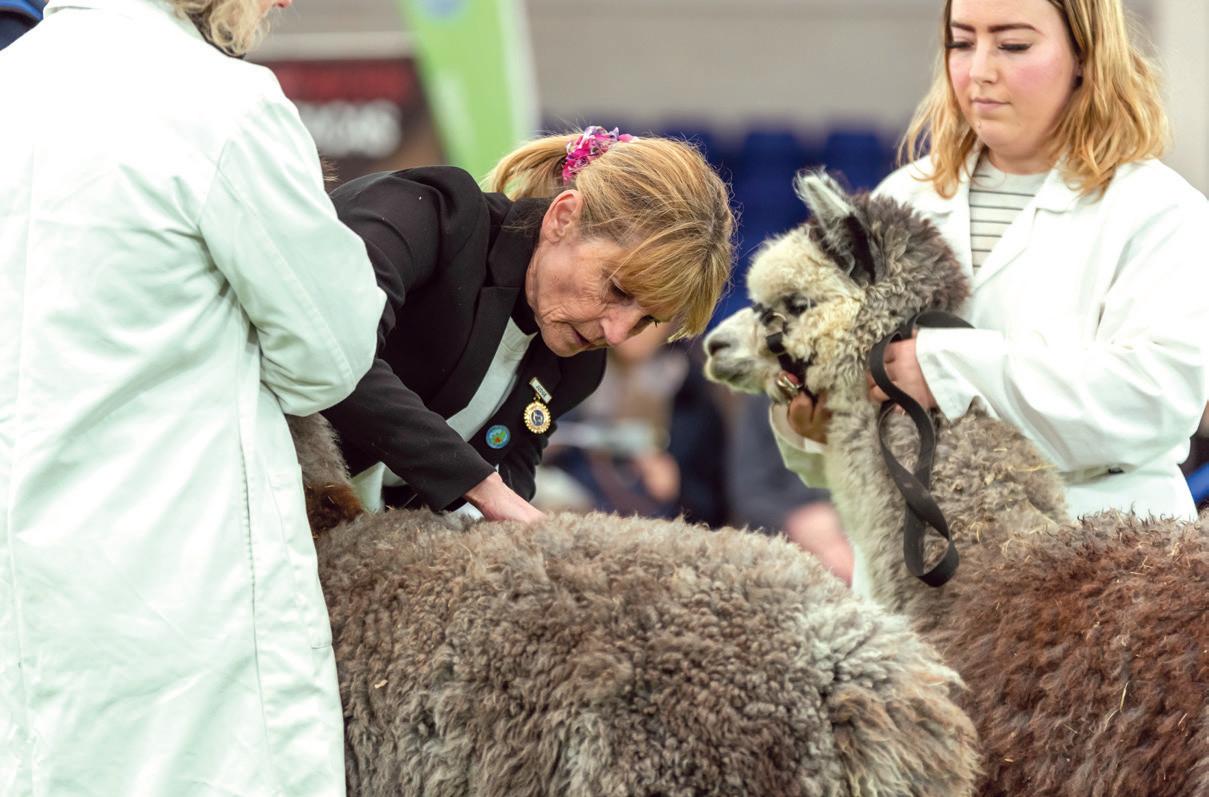
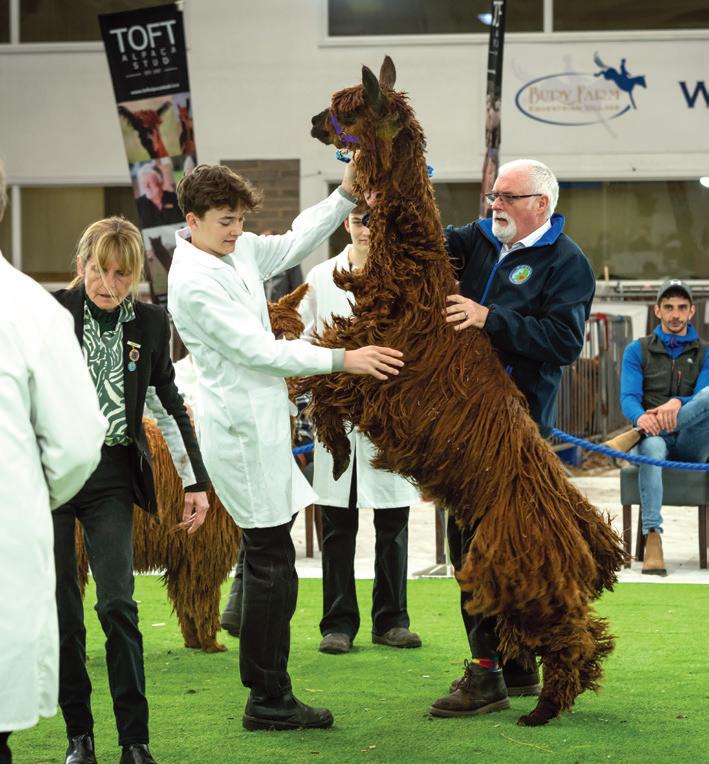
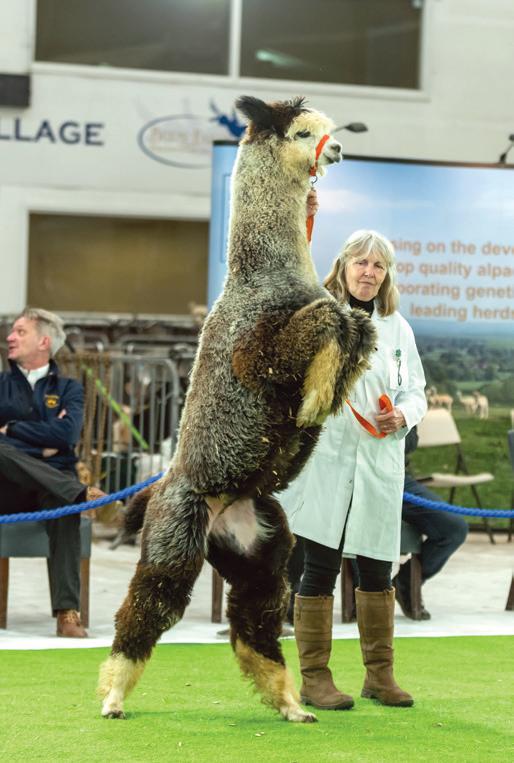
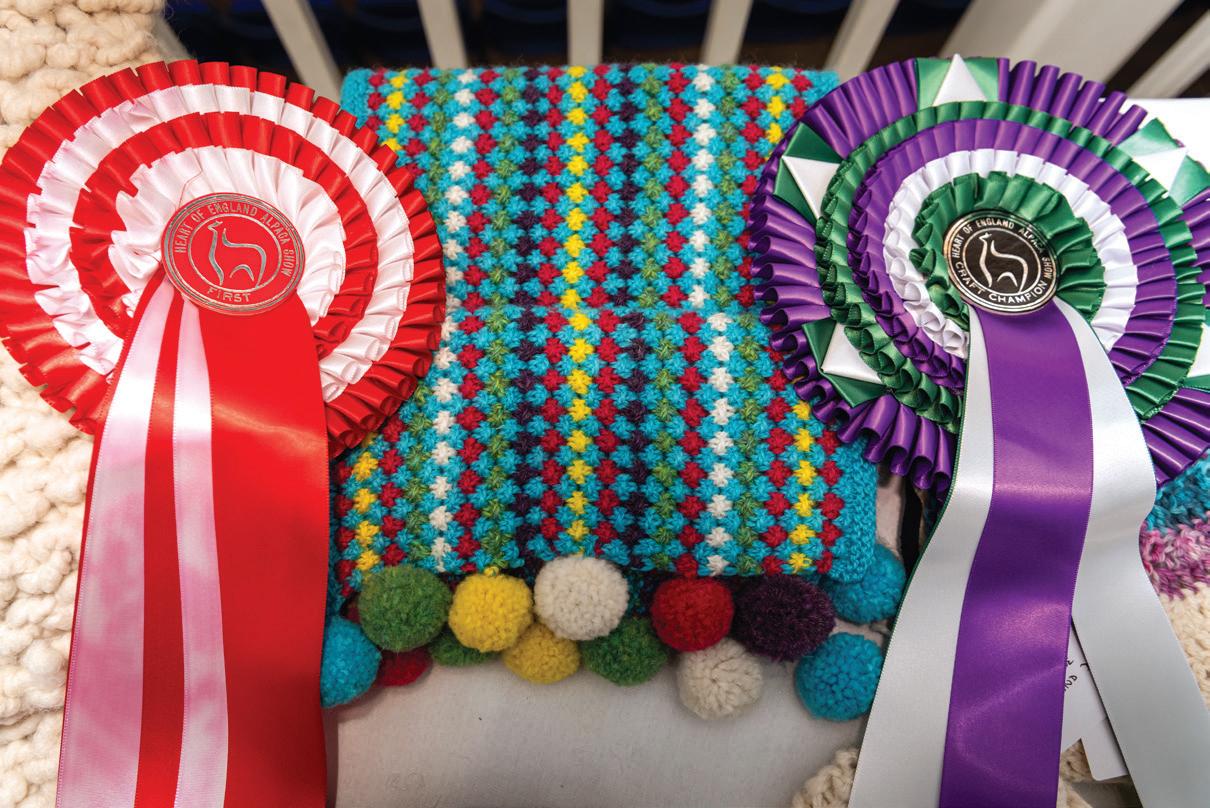
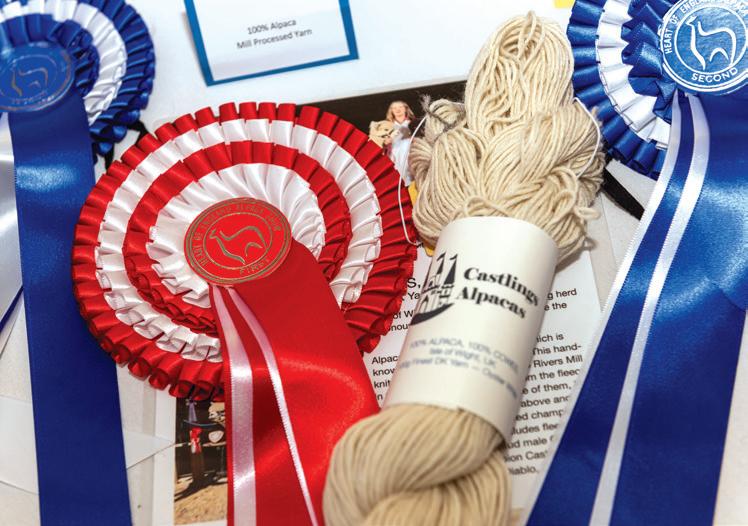
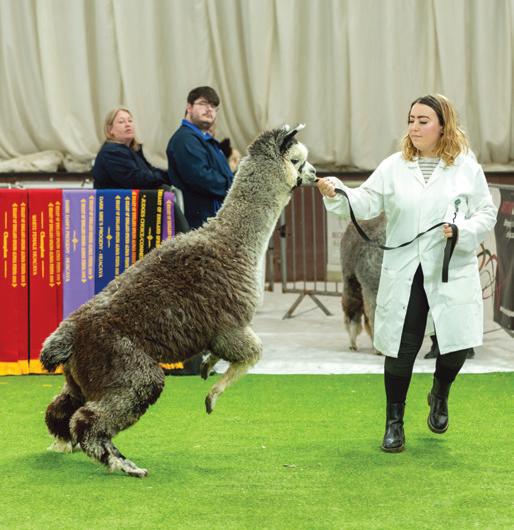

A list of BAS members who are breeders and advertising their alpacas for sale

Lightfoot Alpacas are situated in Hawkhurst in the Weald of Kent. We have been breeding alpacas since 1997 and have over 250 Huacaya. Lightfoot is a closed herd, we believe that the bio security and health of our animals is paramount to their breeding and care. We have a range of colours and ages, mainly Huacaya and some Suris. Our animals are known for being friendly as we spend time with them and know them individually.
We provide after sales advice and back up services when we sell our animals. Whether you are looking to improve or expand your herd or just thinking of alpacas as pets, why not contact us to arrange a visit.
TEL: 07802 263589 WEB: www.alpacabreeder.co.uk
EMAIL: graham@alpacabreeder.co.uk
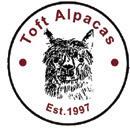
Based in North East Warwickshire we offer over 120 pedigree alpacas in all colours, ages and price ranges. We run a number of prizewinning stud males and offer on farm and mobile mating services. We are confident that our prize winning herd will live up to all your alpaca expectations. Shirley and I have been qualified BAS judges for a great number of years and have judged throughout the UK and Europe. We run regular alpaca husbandry workshops every month throughout the year. We have been breeding alpacas for 25 years and are dedicated to sharing our extensive experience to guide you towards realising your own alpaca aspiration whatever that maybe. Please ring to book.
TEL: Shirley 07970 626245 / Rob 07973 123008
EMAIL: shirley@toftalpacastud.com / rob@toftalpacastud.com WEB: www.toftalpacastud.com
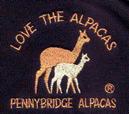
The PennyBridge Herd and Stud. One of the first alpaca farms set up in the South of England, still producing show winners from champion stock. Good quality starter herds, proven and potential stud males, fancy grazers and sheep guards available.
‘Home of The Alpaca Experience’.
Situated in North Hampshire, close to the Surrey and Berkshire borders with good access to ports and airports, less than five minutes drive from both J5 and 6 of the M3.
TEL: 01256 764824 or 07801 132757
EMAIL: joy@pennybridgealpacas.co.uk
WEB: www.pennybridgealpacas.co.uk

Faerie–Tale Alpacas is a small family run farm based in Kenilworth in Warwickshire J15 of M40. We focus on breeding sound, healthy, friendly, elite alpacas with gorgeous fleeces and top class genetics at very reasonable prices.
We know each alpaca and have most colours available from blue black to dazzling white. Whether you are new to alpacas or wish to expand your herd we have an alpaca to suit you! Prices to suit all budgets and with full after sales support given.
We offer: • Quality breeding stock • Starter herds • Stud services
• 2 hour alpaca experiences • Alpacas for weddings and events
• Luxury range of hand knitted alpaca garments and accessories using our own fleeces
TEL: 07950 671672 FACEBOOK: Faerie Tale Alpacas
EMAIL: info@faerietalealpacas.co.uk
WEB: www.faerietalealpacas.co.uk

Moralee is a family-run alpaca farm in West Sussex. We care for a herd of highquality Huacaya alpaca with award-winning genetics. Our mission is centred on breeding for improvement – focussing on white and light-coloured alpacas with fine fleece in a gentle and caring environment. All our alpaca are kept in small groups, so are used to human contact and receive lots of attention.
Our services include: The sale of females for breeding Drive-by stud services
Male-field pets
TEL: 07809 731164
EMAIL: claire@moralee.farm
WEB: www.moralee.farm

The family run JandJ Alpaca herd was established in 2005 with four breeding females, today we have over 90 beautiful animals. We are located in Lincolnshire on the Nottinghamshire, Lincolnshire, Leiceistershire border just off the A1.
With years of experience our aim is to help you choose the best alpacas to start you journey, whether it be breeding females, stud males or pet boys.
Stud services also available from top coloured genetics.
TEL: Martin or Clare 01636 626990
EMAIL: sales@jandjalpacas.co.uk
WEB: www.visitalpacas.co.uk

We are a family run farm in Warfield, Berkshire, breeding high quality Huacaya and Suri alpacas from show winning sires. We would like to welcome you to Scotlands Farm to see our wonderful herd of both white and coloured animals.
We are happy to discuss your requirements, be it for pet males, stock guards, or breeding females to suit your budget but with no obligation to purchase. We have over ten years of experience with these adorable animals. Give us a call and let us see if we can help you.
TEL: Sue Hipkin 07770 455533
Lisa Hipkin 07770 455534
WEB: www.scotfieldalpacas.co.uk
Your booking will include an online listing in the Alpacas for Sale section on the BAS website.
TEL: 01732 448748
EMAIL: wendy@talk-media.uk
Home of The Tartan Alpaca®, The Dark Sky Genie™ and Destination Mating.

Located in rugged and beautiful North Cornwall, we focus on Suri and have a herd of elite alpacas with some of the best and varied genetics in the country. We sell quality breeding stock, in particular Suri starter herds, and offer full stud services as part of Poldark Suri Stud.
WENDY: 07712 136949TOM: 07825 105530
EMAIL: tomandwendy@darkskyalpacas.com
WEB: www.darkskyalpacas.com
Established in 2002 and situated on the North Cotswold hills close to the picturesque village of Snowshill, the current herd numbers over 300.

We breed both Huacaya and Suri alpacas (approximately 80% are Huacaya). Although our breeding programme is biased towards the darker colours, we do also have superb quality whites and beige alpacas.
Full range of alpacas for sale, attractive pets to top show quality breeding girls and stud boys. Large choice of stunning stud males available to service your girls. Also offering natural alpaca fabrics made in the UK from the fleece of our own herd.
TEL: 01386 853841 or 07711 044106
EMAIL: snowshillalpacas@btinternet.com
WEB: www.snowshillalpacas.com

Located on the Solway Firth, in Cumbria, King Garth Alpacas is a family-owned herd where we aim to breed beautiful, happy, healthy and friendly alpacas with top show winning genetics. We have alpacas to suit everyone and all budgets; from pet boys to starter herds, elite females and stud males. We offer full support and advice before and after sales. Please feel welcome to get in
TEL: 07762 286050
WEB: www.kinggarthalpacas.co.uk
M.R.Harness was founded in 1995 after existing part time for a number of years. Mary herself is a qualified engineer and is well placed to assess materials and their useage. Company policy is to test as many of the webbing designs as possible before release, as each item is unique to the animal it is designed for. This has led M.R.Harness to become the supplier of choice for headcollars, leads, coats and harness for all the various smallholding animals, but specialising in alpacas and llamas, and working ponies.
All items are hand crafted ‘in house’, in England, so you can be assured of good workmanship and quality products that last.
So please come and try the ‘Choice of Champions’.
TEL: 01299 896827 EMAIL: mary@mrharness.co.uk
Everything you need for your alpacas delivered to your door! We are a one-stop-shop for alpaca supplies, including headcollars and leads, vitamins and nutritional supplements, healthcare and welfare supplies, colostrum, coats for cria and adults and microchipping equipment.
We also have a good selection for your other animals, including dogs, chickens and horses, as well as a range of farmhouse items and gifts, including our famous home cheese-making kits.
We are alpaca owners ourselves and we are always happy to help with your questions and enquiries.
Order direct from our website or by phone. You can expect fast, friendly service and advice.
TEL: 01295 713188 EMAIL: homesteadfarms@btinternet.com
WEB: www.homesteadfarmsupplies.co.uk
High specification organic chealated nutritional supplements suitable for all camelids.
• Premier Camelid Drench
• Premier Mineral Supplement
• Premier Mineral Bucket
• A, D3 & E Paste
TEL: 07866 607466
EMAIL: jganimalhealth@aol.com
WEB: www.jganimalhealth.co.uk
TEL: 01732 448748
EMAIL: wendy@talk-media.uk











Classic Carder produce a full range of British, handmade drum carders for fibre preparation. Featuring our unique interchangeable drum system which allows quick and easy drum change for carding different fibres.
TEL: 01746 714130
EMAIL: paulbrittain@mac.com
WEB: www.classiccarder.co.uk






















Clara Boulton of Natterjack Alpacas explains how alpacas are helping with

The positive impact alpacas can have on a person’s mental health is no secret. So it is no surprise that as we are in exam season, alpacas are being asked to attend schools, colleges and universities for both the official Mental Health Awareness week, as well as each educational institution’s own ‘stress busting’ events for students.
National Mental Health awareness week this year was officially Monday 13 May 2024 - Sunday 19 May 2024, however, it may vary depending upon exam timetables and what pressures the students are under at any one time.
KGV Sixth Form College and Southport College in Merseyside ran a ‘stress awareness week’ in late April, and invited some alpacas to spend some time with the pupils. Across the whole week the pupils had a timetable of activities, however, the alpacas visiting was the favourite activity of the week. As well as their own designated stress awareness week, KGV College also invited us back during Mental Health Awareness week, to spend some time with the pupils over lunchtime. This time was chosen so that as pupils exited their morning exams, they were able to instantly decompress and relax with some fluffy friends. Many pupils commented on how nice it was to be able to just put their recently sat exam behind them and let all their stress and adrenaline go, something a number of pupils said they struggled with normally.
As well as the above two colleges, alpacas have been taking part in events all over the country.
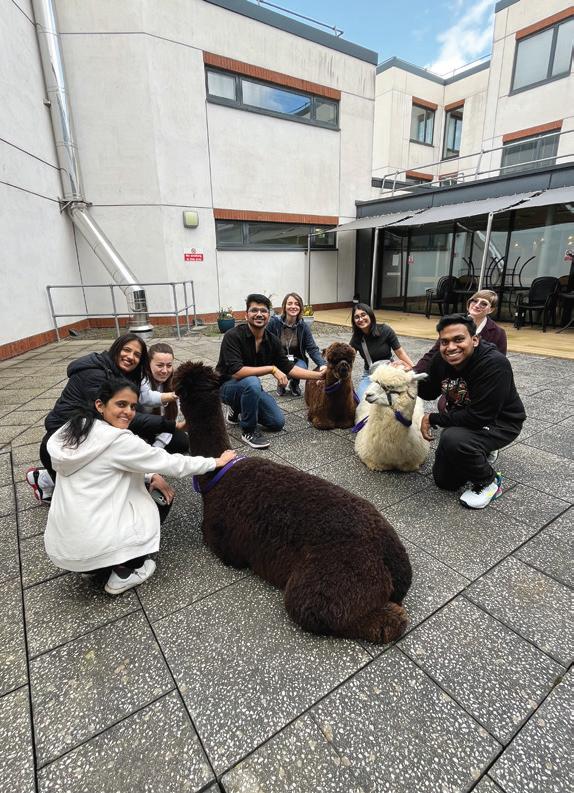
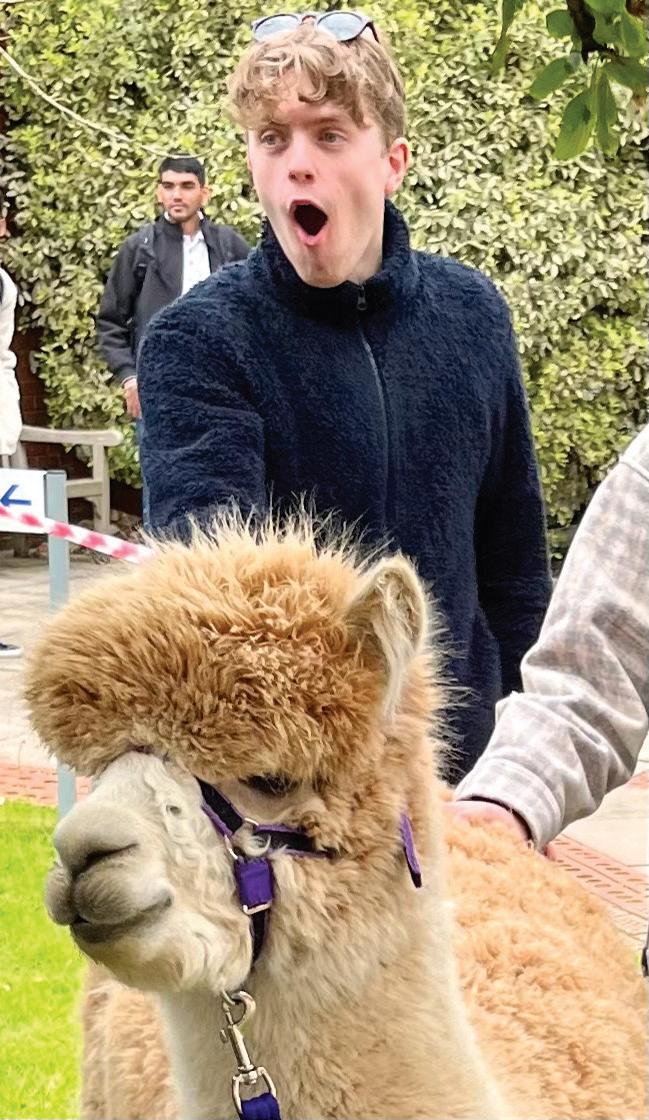
Jane Murray and Rach Moynihan from Perransfield Alpacas document the amazing impact their alpacas have through their social media page ‘The Alpaca Pals’. They took some of their fabulous alpacas to see Economic students at the University of Warwick for some much needed time with the alpacas. With their exams looming, it was a great excuse to break up their day, and it was definitely smiles all round!
Down the south east side of the country, Hilly Ridge Alpacas in Wattisham, Suffolk welcomed 11 pupils from the Ramsey Academy to the farm. Jo Bridge was able to offer the pupils a truly unforgettable break to their normal school break and the exam season. The students took part in an educational talk about alpacas before putting on the halters and taking the alpacas for a walk in the fields and having a go around the alpaca obstacle course! All the students had a fantastic time.
To really highlight the reach of alpacas across the United Kingdom, up on the north east coast of the Scottish Highlands, UHI Inverness hosted Invercannich Alpacas in preparation for their exam season, Karl Falconer visited the university with some of his alpacas to help students relax before commencing their exam season. This proved to be a very busy event and all of the students including some with assisted learning really enjoyed the interaction and learning about these fascinating animals.
Alpacas are benefiting those in education all over the country at an increasing rate, and with each article and social media post published, hopefully the impact of our wonderful animals will only continue to reach more and more people.


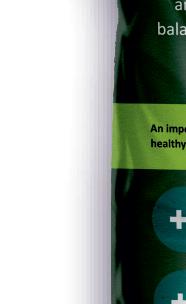









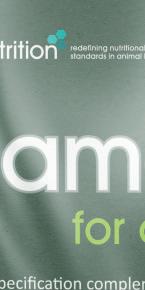

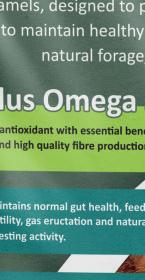

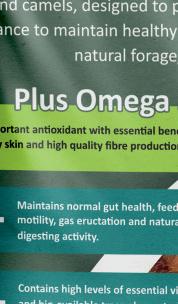
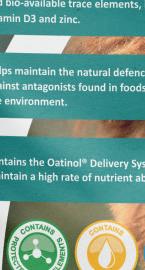

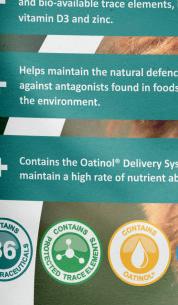




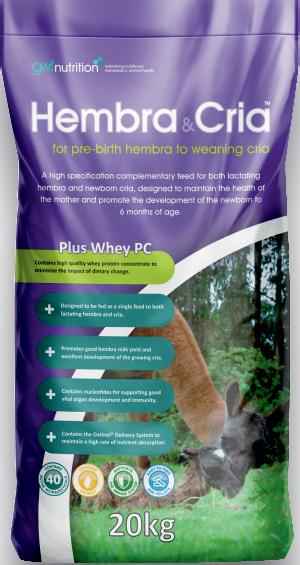


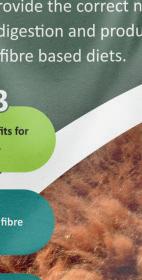

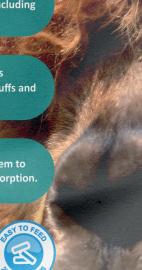














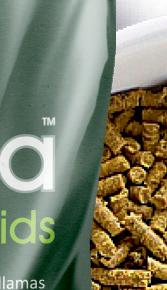



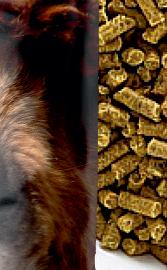
























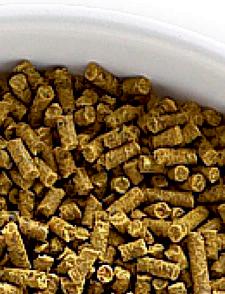




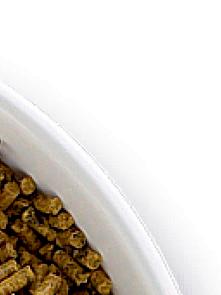





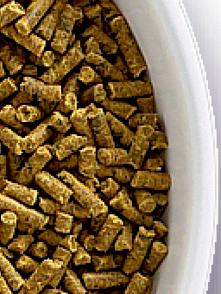





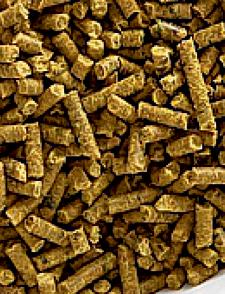























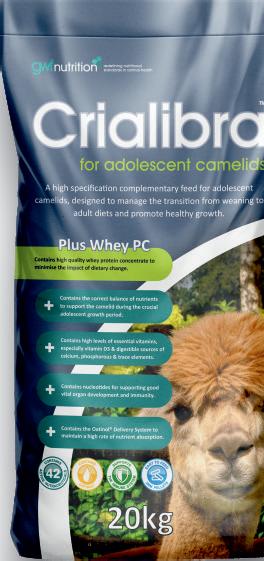


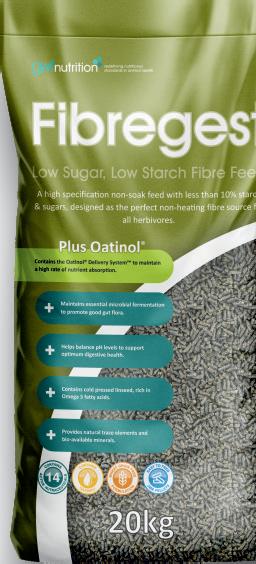










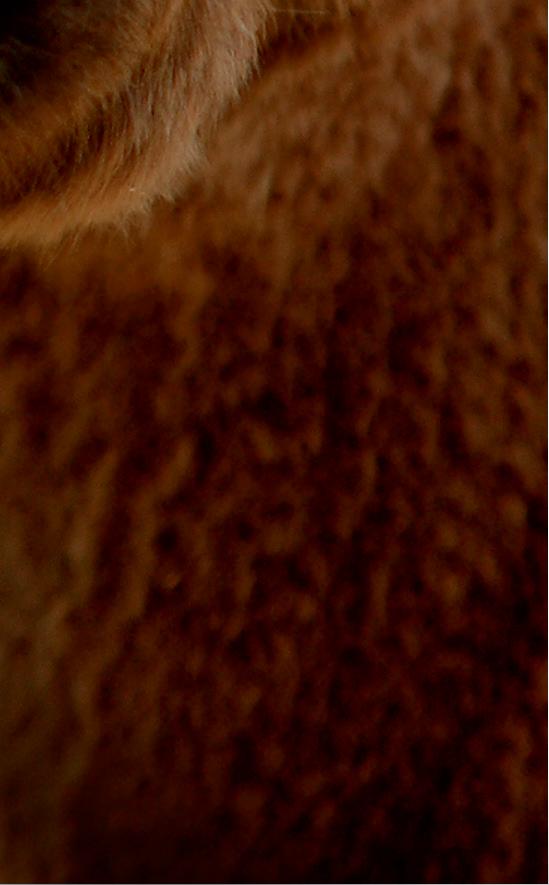
Supreme Champion alpaca breeders with 30 years experience
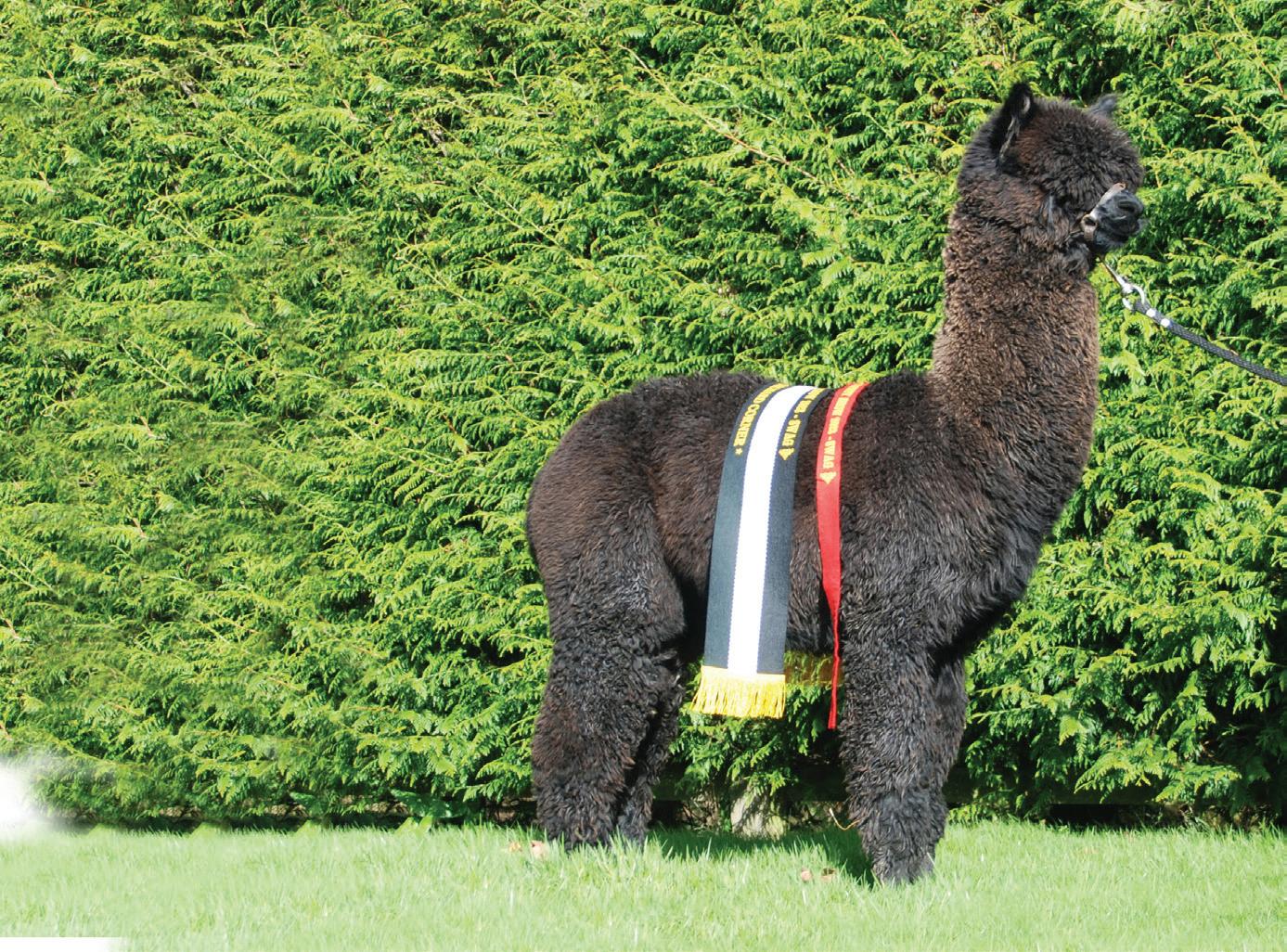
Book your stud services now
Elite Black Herd Sires that add value to any female.
Available for mobile and drive-by matings.
Discounts for multiple matings. Covering all of the United Kingdom with shared mileage.
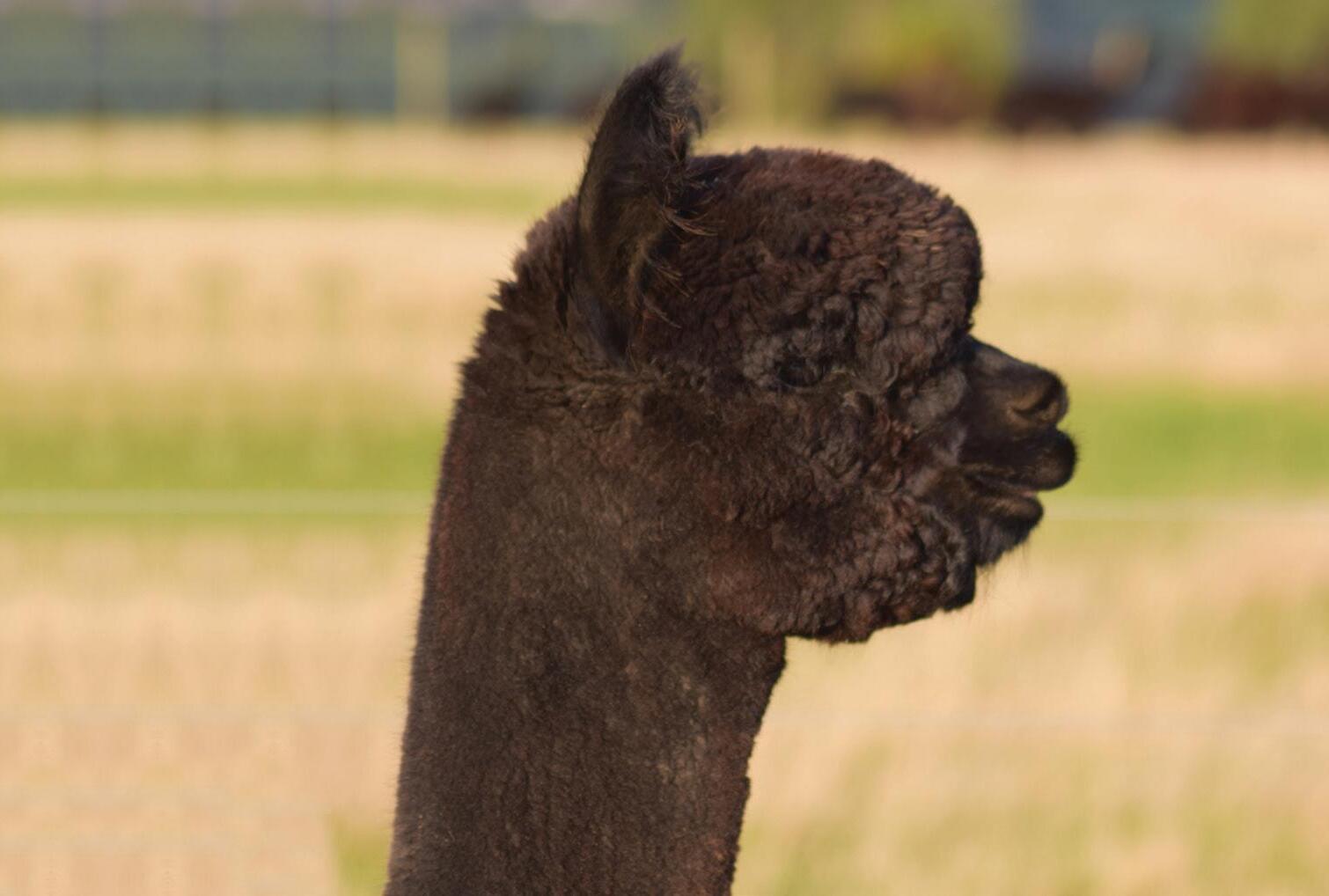


Please